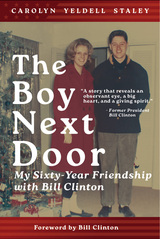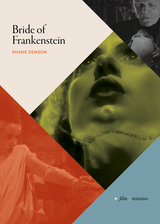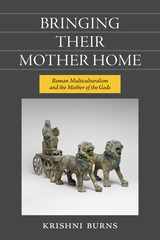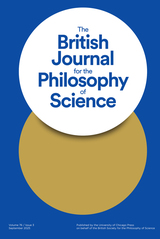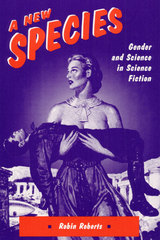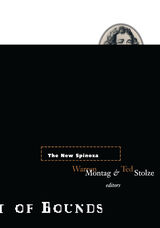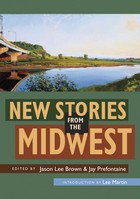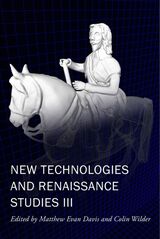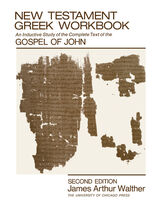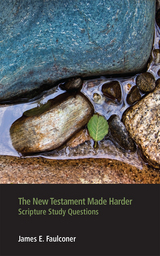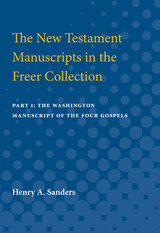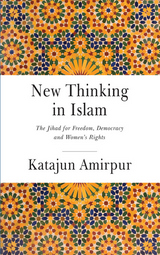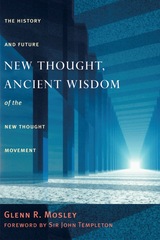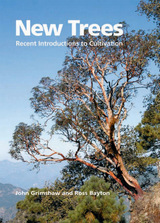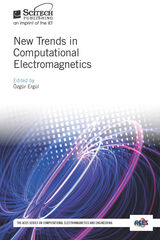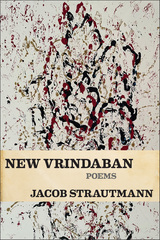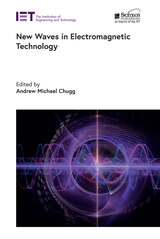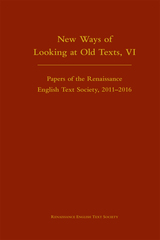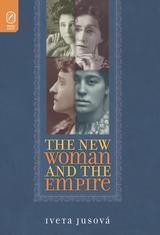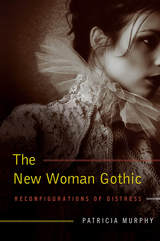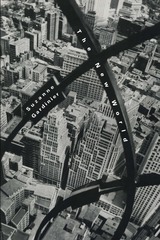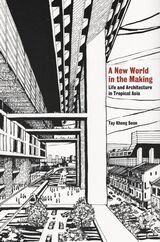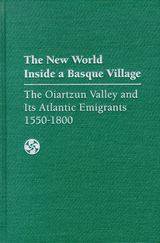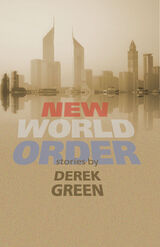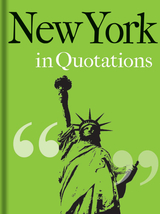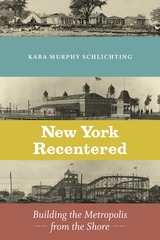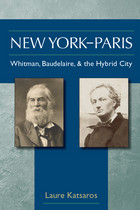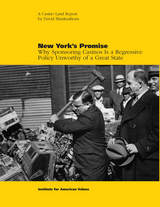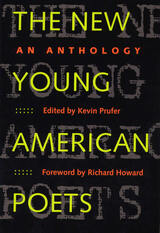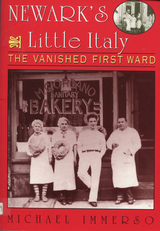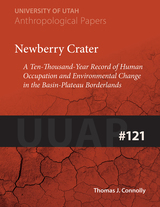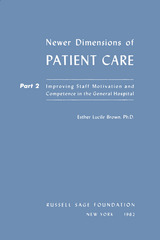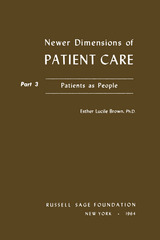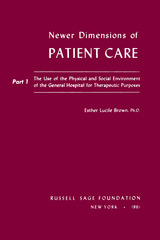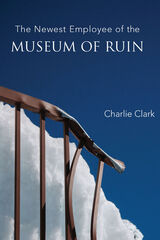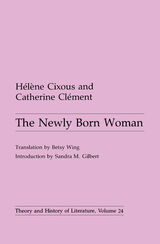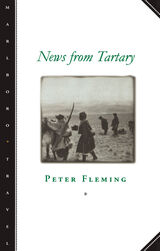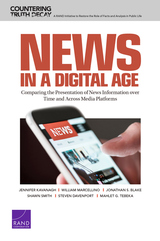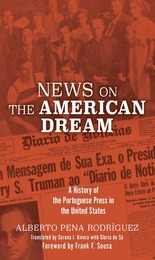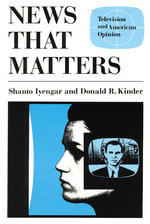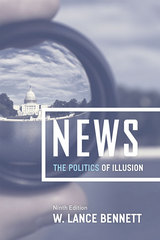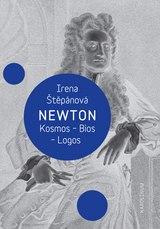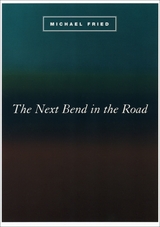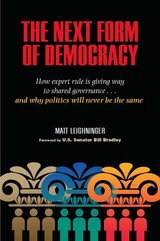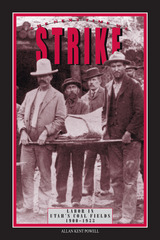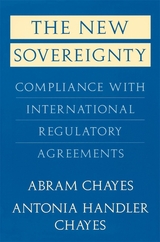 The New Sovereignty: Compliance with International Regulatory Agreements
Abram Chayes and Antonia Handler Chayes
Harvard University Press, 1998 In an increasingly complex and interdependent world, states resort to a bewildering array of regulatory agreements to deal with problems as disparate as climate change, nuclear proliferation, international trade, satellite communications, species destruction, and intellectual property. In such a system, there must be some means of ensuring reasonably reliable performance of treaty obligations. The standard approach to this problem, by academics and politicians alike, is a search for treaties with "teeth"--military or economic sanctions to deter and punish violation.
The New Sovereignty argues that this approach is misconceived. Cases of coercive enforcement are rare, and sanctions are too costly and difficult to mobilize to be a reliable enforcement tool. As an alternative to this "enforcement" model, the authors propose a "managerial" model of treaty compliance. It relies on the elaboration and application of treaty norms in a continuing dialogue between the parties--international officials and nongovernmental organizations--that generates pressure to resolve problems of noncompliance. In the process, the norms and practices of the regime themselves evolve and develop.
The authors take a broad look at treaties in many different areas: arms control, human rights, labor, the environment, monetary policy, and trade. The extraordinary wealth of examples includes the Iran airbus shootdown, Libya's suit against Great Britain and the United States in the Lockerbie case, the war in Bosnia, and Iraq after the Gulf War.
The authors conclude that sovereignty--the status of a recognized actor in the international system--requires membership in good standing in the organizations and regimes through which the world manages its common affairs. This requirement turns out to be the major pressure for compliance with treaty obligations. This book will be an invaluable resource and casebook for scholars, policymakers, international public servants, lawyers, and corporate executives.
New Spain, New Literatures
Luis Martín-Estudillo
Vanderbilt University Press, 2010 This volume, which includes essays on Catalonia, the Basque country, Galicia, and literature written by African immigrants, focuses on issues of "difference" that are at the center of current debates in Spain and elsewhere--the emergence of minoritized literatures, multilingualism and identity, new relationships between culture and institutions, the negotiation of historical memories, the connections between migrations and the redefinition of nationhood, and the impact of global trends on local symbolic systems.
A New Species: GENDER AND SCIENCE IN SCIENCE FICTION
Robin Roberts
University of Illinois Press, 1993 This fascinating study is the first to examine the history of gender and science fiction and the first to discuss science fiction pulp magazines' images of women, as well as postmodernism and feminist science fiction. Robin Roberts begins with Shelley's Frankenstein, in which a female alien appears, and continues through H. G. Wells, the 1950s pulp science fiction magazines, Doris Lessing and feminist utopias, and the new generation of science fiction writers, including Joan Vinge, Sheila Finch, Vonda McIntyre, Ursula Le Guin, and Octavia Butler.
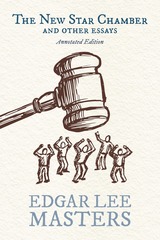 The New Star Chamber and Other Essays: Annotated Edition
Edgar Lee Masters; edited by Jason Stacy
Southern Illinois University Press, 2023 Tracing the troubled roots of American capitalism and imperialism
Coedited by noted Masters scholar, Jason Stacy, and his class, “Editing History,” this annotated edition of Edgar Lee Masters’s The New Star Chamber and Other Essays reappears at a perilous time in US history, when large corporations and overseas conflicts once again threaten the integrity of American rights and liberties, and the United States still finds itself beholden to corporate power and the legacy of imperial hubris. In speaking to his times, Masters also speaks to ours.
These thirteen essays lay bare the political ideology that informed Spoon River Anthology. Masters argues that the dangerous imperialism championed by then-President Theodore Roosevelt was rooted in the Constitution itself. By debating the ethics of the Philippine-American War, criticizing Hamiltonian centralization of government, and extolling the virtues of Jeffersonian individualism, Masters elucidates the ways in which America had strayed from its constitutional morals and from democracy itself. The result is a compelling critique of corporate capitalism and burgeoning American imperialism, as well as an exemplary source for understanding its complicated author in the midst of his transformation from urban lawyer to poet of rural America.
In print again for the first time since 1904, this edition includes an introduction and historical annotations throughout. Edited and annotated by students at Southern Illinois University Edwardsville, and designed and illustrated by students at Southern Illinois University Carbondale, this volume traces economic and political pathologies to the origins of the American republic. The New Star Chamber and Other Essays is as vital now as it was over 100 years ago.
 New States in the Modern World
Martin L. Kilson
Harvard University Press, 1975 New States in the Modern World is probably the first book to consider new states in relationship to their effect on world political order. This volume of original essays focuses on the origins and current status of the new African states and one Arab-African state, Egypt.
Despite their many distinguishing features, the new nations all have in common the colonial experience, which has formulated their major political attributes. The eminent authors of these studies describe the structural problems of new states, particularly the role of ideology, the patterns of internal conflict, and the character of political cleavages. Of special concern are the ways in which international organization induced the formation of new states and, conversely, the impact the new nations have had on the international system. The resulting conflicts require redefinition of the international order, a new kind of regulation. This book takes a major step on the road to such redefinition.
New Stories from the Midwest
Jason Lee Brown
Ohio University Press, 2011 New Stories from the Midwest presents a collection of stories that celebrate an American region too often ignored in discussions about distinctive regional literature. The editors solicited nominations from more than three hundred magazines, literary journals, and small presses, and narrowed the selection to nineteen authors comprising prize winners and new and established authors. The stories, written by midwestern writers or focusing on the Midwest, demonstrate how the quality of fiction from and about the heart of the country rivals that of any other region. The anthology includes an introduction from Lee Martin and short fiction by emerging and established writers such as Rosellen Brown, Bonnie Jo Campbell, Christie Hodgen, Gregory Blake Smith, and Benjamin Percy.
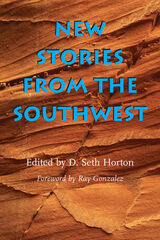 New Stories from the Southwest
D. Seth Horton
Ohio University Press, 2008 The beauty and barrenness of the southwestern landscape naturallylends itself to the art of storytellers. It is a land of heat and dryness, aland of spirits, a land that is misunderstood by those living along thecoasts.
New Stories from the Southwest presents nineteen short stories that appeared in North American periodicals between January and December 2006. Though many of these stories vary by aesthetics, tone, voice, and almost any other craft category one might wish to use, they are nevertheless bound together by at least one factor, which is that the landscape of the region plays a key role in their narratives. They each evoke and explore what it means to exist in thisunique corner of the country.
Selected by editor D. Seth Horton, the former fiction editor for the Sonora Review, from a wide cross-section of journals and magazines, and with a foreword by noted writer Ray Gonzalez, New Stories from the Southwest presents a generous sampling of the best of contemporary fiction situated in this often overlooked area of the country. Swallow Press is particularly pleased to publish this wide-ranging collection of stories from both new and established writers.
Contributors to New Stories from the Southwest are:
- Alan Cheuse
- Matt Clark
- Lorien Crow
- Kathleen De Azvedo
- Alan Elyshevitz
- Marcela Fuentes
- Dennis Fulgoni
- Ray Gonzalez
- Anna Green
- Donald Lucio Hurd
- Toni Jensen
- Charles Kemnitz
- Elmo Lum
- Tom McWhorter
- S. G. Miller
- Peter Rock
- Alicita Rodriguez
- John Tait
- Patrick Tobin
- Valery Varble
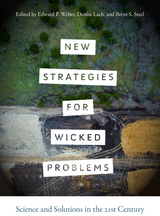 New Strategies for Wicked Problems: Science and Solutions in the 21st Century
Edward P. Weber
Oregon State University Press, 2017 According to Wikipedia: "A wicked problem is one that is impossible or difficult to solve because of incomplete, contradictory, and changing requirements that are often difficult to recognize. The term 'wicked' refers to such a problem's resistance to resolution, not to an evil nature. Classic examples of wicked problems include economic, environmental, and political issues.”
We now live in a world full of wicked problems, most of them urgent challenges calling out for creative, democratic, and effective solutions. Ed Weber, Denise Lach, and Brent Steele, of the Oregon State University School of Public Policy, solicited papers from a wide variety of accomplished scholars in the fields of science, politics, and policy with significant research experience to address this challenge. The resultant collection focuses on major contemporary environmental and natural resource policy issues, and proposes an assortment of alternative problem-solving methodologies to tackle such problems.
New Strategies for Wicked Problems will appeal to scholars, students, and decision-makers wrestling with wicked problems and “post-normal” science settings beyond simply environmental and natural resource-based issues. It will provide much needed guidance to policymakers, citizens, public managers, and various stakeholders who are struggling with wicked problems in their professional lives.
Other Contributors:
Tanya Heikkila
Helen Ingram
Ann C. Keller
Bob Lackey
Anna Pakenham Stevenson
Christopher M. Weible
Daniel R. Williams
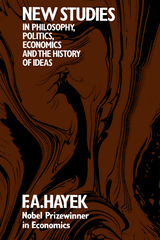 New Studies in Philosophy, Politics, Economics, and the History of Ideas
F. A. Hayek
University of Chicago Press, 1978 Following on F. A. Hayek's previous work Studies in Philosophy, Politics, and Economics (1967), New Studies in Philosophy, Politics, Economics and the History of Ideas collects some of Hayek's most notable essays and lectures dealing with problems of philosophy, politics and economics, with many of the essays falling into more than one of these categories. Expanding upon the previous volume the present work also includes a fourth part collecting a series of Hayek's writings under the heading 'History of Ideas.'
Of the articles contained in this volume the lectures on 'The Errors of Constructivism' (chapter 1) and 'Competition as a Discovery Procedure' (chapter 12) have been published before only in German, while the article on 'Liberalism' (chapter 9) was written in English to be published in an Italian translation in the Enciclopedia del Novicento by the Istituto della Enciclopedia Italiana at Rome.
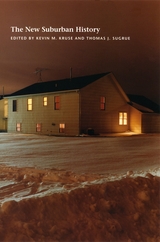 The New Suburban History
Edited by Kevin M. Kruse and Thomas J. Sugrue
University of Chicago Press, 2006 America has become a nation of suburbs. Confronting the popular image of suburbia as simply a refuge for affluent whites, The New Suburban History rejects the stereotypes of a conformist and conflict-free suburbia. The seemingly calm streets of suburbia were, in fact, battlegrounds over race, class, and politics. With this collection, Kevin Kruse and Thomas Sugrue argue that suburbia must be understood as a central factor in the modern American experience.
Kruse and Sugrue here collect ten essays—augmented by their provocative introduction—that challenge our understanding of suburbia. Drawing from original research on suburbs across the country, the contributors recast important political and social issues in the context of suburbanization. Their essays reveal the role suburbs have played in the transformation of American liberalism and conservatism; the contentious politics of race, class, and ethnicity; and debates about the environment, land use, and taxation. The contributors move the history of African Americans, Latinos, Asians, and blue-collar workers from the margins to the mainstream of suburban history.
From this broad perspective, these innovative historians explore the way suburbs affect—and are affected by—central cities, competing suburbs, and entire regions. The results, they show, are far-reaching: the emergence of a suburban America has reshaped national politics, fostered new social movements, and remade the American landscape. The New Suburban History offers nothing less than a new American history—one that claims the nation cannot be fully understood without a history of American suburbs at its very center.
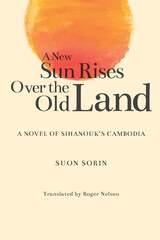 A New Sun Rises Over the Old Land: A Novel of Sihanouk’s Cambodia
Suon Sorin
National University of Singapore Press, 2020 This is the story of Sam, a young man who leaves the countryside for the big city to work as a cyclo driver, piloting his three-wheeled bicycle taxi through busy streets. Sam just wants to earn an honest wage, but he is constantly thwarted by those with money: his landlord, factory bosses, politicians, even the woman who rents him his cyclo. The city takes its toll, and Sam’s humanity is denied him at every turn, leading to the devastation of his small family and his surrender to temptation. But a dramatic change to Sam’s fortunes is heralded by the country’s liberation from colonial rule. Sam returns to the countryside to discover that “the life of the peasants that had been filled with suffering and decline, was filled with a fresh joy and happiness, and a new hope.”
First published in 1961, eight years after Cambodia gained independence from French colonial rule, A New Sun Rises Over the Old Land is an iconic work of modern Khmer literature, a singularly illuminating document of the new nation. This is one of the first English translations of a modern Khmer novel, and the text is accompanied by an extended introduction that situates the author in his historical and artistic context and examines the novel’s literary value.
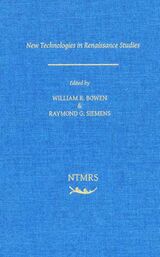 New Technologies and Renaissance Studies
Edited by William R. Bowen and Raymond G. Siemens
Iter Press, 2008 Near the forefront of any examination of disciplinary pursuits in the academy today, among the many important issues being addressed is the role of computing and its integration into, and perhaps revolutionizing of, central methodological approaches. The series New Technologies in Medieval and Renaissance Studies addresses this context from both broad and narrow perspectives, with anticipated discussions rooted in areas including literature, art history, musicology, and culture in the medieval and Renaissance periods.
The first volume of the series, New Technologies and Renaissance Studies, presents a collection of contributions to one ongoing forum for the dialogue which lies at the heart of the book series, the annual "conference within a conference" of the same name which takes place during the Renaissance Society of America gathering, dedicated specifically to the intersection of computational methods and Renaissance studies. Papers in this volume exemplify those fruitful and productive exchanges, from their inception at the 2001 meeting in Chicago to the 2005 meeting in Cambridge.
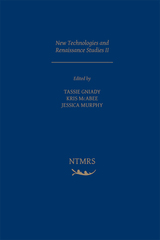 New Technologies and Renaissance Studies II
Edited by Tassie Gniady, Kris McAbee, Jessica Murphy
Iter Press, 2014 Near the forefront of any examination of disciplinary pursuits in the academy today, among the many important issues being addressed is the role of computing and its integration into, and perhaps revolutionizing of, central methodological approaches. The series New Technologies in Medieval and Renaissance Studies addresses this context from both broad and narrow perspectives, with anticipated discussions rooted in areas including literature, art history, musicology, and culture in the medieval and Renaissance periods.
In the fourth volume of the New Technologies in Medieval and Renaissance Studies series, volume editors Tassie Gniady, Kris McAbee, and Jessica Murphy bring together some of the best work from the New Technologies in Medieval and Renaissance Studies panels at the Renaissance Society of America (RSA) annual meetings for the years 2004–2010. These essays demonstrate a dedication to grounding the use of “newest” practices in the theories of the early modern period. At the same time, the essays are interested in the moment—the needs of scholars then, the theories of media that informed current understanding, and the tools used to conduct studies.
New Technologies and Renaissance Studies III
Edited by Matthew Evan Davis and Colin Wilder
Iter Press, 2022 These essays explore problems with digital approaches to analog objects and offer digital methods to study networks of production, dissemination, and collection. Further, they reflect on the limitations of those methods and speak to a central truth of digital projects: unlike traditional scholarship, digital scholarship is often the result of collective networks of not only disciplinary scholars but also of library professionals and other technical and professional staff as well as students.
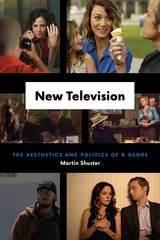 New Television: The Aesthetics and Politics of a Genre
Martin Shuster
University of Chicago Press, 2017 Even though it’s frequently asserted that we are living in a golden age of scripted television, television as a medium is still not taken seriously as an artistic art form, nor has the stigma of television as “chewing gum for the mind” really disappeared.
Philosopher Martin Shuster argues that television is the modern art form, full of promise and urgency, and in New Television, he offers a strong philosophical justification for its importance. Through careful analysis of shows including The Wire, Justified, and Weeds, among others; and European and Anglophone philosophers, such as Stanley Cavell, Hannah Arendt, Martin Heidegger, and John Rawls; Shuster reveals how various contemporary television series engage deeply with aesthetic and philosophical issues in modernism and modernity. What unifies the aesthetic and philosophical ambitions of new television is a commitment to portraying and exploring the family as the last site of political possibility in a world otherwise bereft of any other sources of traditional authority; consequently, at the heart of new television are profound political stakes.
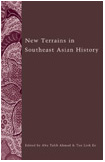 New Terrains in Southeast Asian History
Abu Talib Ahmad
Ohio University Press, 2003 At a watershed moment in the scholarly approach to the history of this important region, New Terrains in Southeast Asian History captures the richness and diversity of historical discourse among Southeast Asian scholars. Through the perspectives of scholars who live and work within the region, the book offers readers a rare opportunity to enter into the world of Southeast Asian historiography. Individual chapters subject the dominance of national narratives to critical reflection and deconstruction, while others highlight the need to go beyond essentially political narratives to seek out deeper cultural, economic, and social structures by utilizing new sources, methodologies, and concepts. Taken as a whole, the book contends that new terrains in Southeast Asian history may be found “at the interstices and on the margins” where nations, societies, or cultures engage the unending processes of historical change.
The contributors are Abdul Rahman Haji Ismail, Abu Talib Ahmad, Andrew Hardy, Badriyah Haji Salleh, Brenda S. A. Yeoh, C. J. W.-L. Wee, Ni Ni Myint, Dhiravat na Pombejra, Hong Lysa, Huang Jianli, Kobkua Suwannathat-Pian, M. R. Fernando, P. Lim Pui Huen, Paul H. Kratoska, Tan Liok Ee, Thongchai Winichakul, and Yong Mun Cheong.
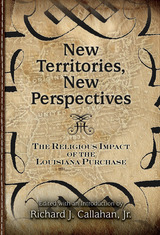 New Territories, New Perspectives: The Religious Impact of the Louisiana Purchase
Edited & Intro by Richard J. Callahan, Jr.
University of Missouri Press, 2008
With the doubling of America’s territory that came with the Louisiana Purchase, American culture was remapped in the bargain. The region’s indigenous inhabitants had already been joined by Catholic missionaries, both French and Spanish, along with Africans brought as slaves to the Caribbean islands and North America; now all were met by a predominantly Protestant culture rushing westward.
New Territories, New Perspectives marks the first study to take the Louisiana Purchase as the focal point for considering the development of American religious history. The process of transforming the Louisiana Territory into U.S. territory meant shaping the space to conform to American cultural and religious identity, and this volume investigates continuities, disruptions, and changes relating to religion in this context.
The contributors ask what might happen to our understanding of religion in America if we look at it through the lens of this annexation. Initial chapters offer fresh perspectives on the new territory by those who settled it, primarily easterners, exploring such topics as the built environment of the region as seen in such settings as frontier camp meetings and communitarian societies, ideas of destiny amid the clash of cultural groups, and religiously significant aspects of African American life.
Subsequent essays take up the religious history of the region from the perspective of New Orleans and the Caribbean. They include an exploration of the roots of Pentecostalism in the mix of black and white cultures in the Mississippi Delta, the “vodou” link between New Orleans and Haiti, and the African-Creole performances of Mardi Gras Indians.
Together, these essays invite readers to consider intersecting histories that are too often neglected in our understanding of America’s religious development, particularly issues that stand apart from traditional histories of religion in the Midwest. By exploring the unexpected, they also promote different ways of thinking about American religious history as a whole.
 New Terror, New Wars
Paul Gilbert
Georgetown University Press, 2003 A timely philosophical treatment of the current wave of international terrorism and armed conflicts around the world, New Terror, New Wars explores the ethical significance of September 11, and its aftermath. From the nationalistic violence that reigned over the last century, to the amorphous terrors without national boundaries characterizing the opening of this new century, Gilbert leads the way through some of the difficult terrain that has brought the world to these troubling crossroads. He examines the causes of new wars as they are made manifest in the politics of identity, he questions when military force is justified in the pursuit of political goals. He asks whether the "just war" theory is adequate for evaluating and then regulating contemporary conflicts. He deals with the core issues of traditional conflict: self-defense, the conduct of war, hatred and revenge, but also with newer forms, such as conflict in the guise of "humanitarian intervention." The hopeful conclusion to all wars is, of course, the restoration of peace. Gilbert concludes with a philosophical investigation of not only how to end them, but also how to resolve the conflicts that gave rise to them in the first place and how to produce the conditions in which they are unlikely to occur again—reminding us that the end to a "just war" must be a "just peace" and outlining what the nature of that just peace should be. New Terror, New Wars will be required reading for all those concerned with the ethical issues that inevitably arise from armed conflicts in whatever dire form they may take.
New Testament Greek Workbook: An Inductive Study of the Complete Text of the Gospel of John
James Arthur Walther
University of Chicago Press, 1981 In this new edition, the Greek text of the United Bible Societies is used throughout. The beginning student is involved at once in reading Greek and learns grammar and syntax as he encounters them in the text. Each unit of the workbook contains three parts—vocabulary, study notes, and end-of-unit quizzes. The vocabulary is introduced as it occurs in the text. Study notes are designed to aid the student in translating the text and to supplement the teacher's help. End-of-unit questions help the student consolidate what he has learned.
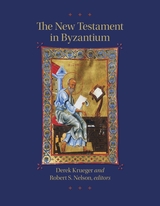 The New Testament in Byzantium
Derek Krueger
Harvard University Press The New Testament lay at the center of Byzantine Christian thought and practice. But codices and rolls were neither the sole way—nor most important way—the Byzantines understood the New Testament. Lectionaries apportioned much of its contents over the course of the liturgical calendar; its narratives structured the experience of liturgical time and shaped the nature of Christian preaching, throughout Byzantine history. A successor to The Old Testament in Byzantium (2010), this book asks: What was the New Testament for Byzantine Christians? What of it was known, how, when, where, and by whom? How was this knowledge mediated through text, image, and rite? What was the place of these sacred texts in Byzantine arts, letters, and thought?
Authors draw upon the current state of textual scholarship and explore aspects of the New Testament, particularly as it was read, heard, imaged, and imagined in lectionaries, hymns, homilies, saints’ lives, and as it was illustrated in miniatures and monuments. Framing theological inquiry, ecclesiastical controversy, and political thought, the contributions here help develop our understanding of the New Testament and its varied reception over the long history of Byzantium.
The New Testament Made Harder
James E. Faulconer
Neal A. Maxwell Institute for Religious Scholarship, 2015 James E. Faulconer’s Made Harder series raises many more questions than it answers. And that is precisely the point. Faulconer wrote The New Testament Made Harder on the premise that our scripture study is only as good as the questions we bring to the endeavor. While many books about the New Testament provide useful shortcuts, chapter synopses, timelines, and memorizable bullet points, this book consists almost entirely of challenging questions (with occasional commentary for clarity’s sake) because, in James Faulconer’s experience, questions themselves are the key to reflective and deep scripture study. This book is intended to make reading harder—and therefore fresher—by priming your mind with insightful study questions. The New Testament Made Harder is the perfect tool to improve personal and family scripture study, sacrament meeting talks, or Sunday school lessons.
 A New Theory for American Poetry: Democracy, the Environment, and the Future of Imagination
Angus Fletcher
Harvard University Press, 2004 Amid gloomy forecasts of the decline of the humanities and the death of poetry, Angus Fletcher, a wise and dedicated literary voice, sounds a note of powerful, tempered optimism. He lays out a fresh approach to American poetry at large, the first in several decades, expounding a defense of the art that will resonate well into the new century.
Breaking with the tired habit of treating American poets as the happy or rebellious children of European romanticism, Fletcher uncovers a distinct lineage for American poetry. His point of departure is the fascinating English writer, John Clare; he then centers on the radically American vision expressed by Emerson and Walt Whitman. With Whitman this book insists that "the whole theory and nature of poetry" needs inspiration from science if it is to achieve a truly democratic vista. Drawing variously on Complexity Theory and on fundamentals of art and grammar, Fletcher argues that our finest poetry is nature-based, environmentally shaped, and descriptive in aim, enabling poets like John Ashbery and other contemporaries to discover a mysterious pragmatism.
Intense, resonant, and deeply literary, this account of an American poetics shows how today's consumerist and conformist culture subverts the imagination of a free people. While centering on American vision, the argument extends our horizon, striking a blow against all economically sanctioned attacks upon the finer, stronger human capacities. Poetry, the author maintains, is central to any coherent vision of life.
New Thinking in Islam: The Jihad for Democracy, Freedom and Women’s Rights
Katajun Amirpur
Gingko, 2015 In Rethinking Islam, Katajun Amirpur argues that the West’s impression of Islam as a backward-looking faith, resistant to post-Enlightenment thinking, is misleading and—due to its effects on political discourse—damaging. Introducing readers to key thinkers and activists—such as Abu Zaid, a free-thinking Egyptian Qur’an scholar; Abdolkarim Soroush, an academic and former member of Khomeini’s Cultural Revolution Committee; and Amina Wadud, an American feminist who was the first woman to lead the faithful in Friday Prayer—Amirpur reveals a powerful yet lesser-known tradition of inquiry and dissent within Islam, one that is committed to democracy and human rights. By examining these and many other similar figures’ ideas, she reveals the many ways they reject fundamentalist assertions and instead call for a diversity of opinion, greater freedom, and equality of the sexes.
New Thought, Ancient Wisdom: The History and Future of the New Thought Movement
Glenn Mosley
Templeton Press, 2006 In this book, Glenn R. Mosley chronicles the history of the movement, including biographical sketches and the philosophies of pioneers and influential leaders linked to the movement's development and growth. These include Charles and Myrtle Fillmore, the founders of Unity; Ernest Holmes, founder of the Science of Mind; Mary Baker Eddy, founder of the Church of Christ Science; Ralph Waldo Trine, philosopher, mystic, teacher, and early mentor of New Thought; Joel Goldsmith, founder of The Infinite Way, among others.
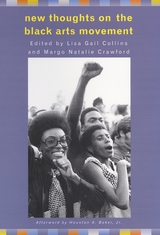 New Thoughts on the Black Arts Movement
Edited by Lisa Gail Collins and Margo Natalie Crawford
Rutgers University Press, 2006 During the 1960s and 1970s, a cadre of poets, playwrights, visual artists, musicians, and other visionaries came together to create a renaissance in African American literature and art. This charged chapter in the history of African American culture—which came to be known as the Black Arts Movement—has remained largely neglected by subsequent generations of critics. New Thoughts on the Black Arts Movement includes essays that reexamine well-known figures such as Amiri Baraka, Larry Neal, Gwendolyn Brooks, Sonia Sanchez, Betye Saar, Jeff Donaldson, and Haki Madhubuti. In addition, the anthology expands the scope of the movement by offering essays that explore the racial and sexual politics of the era, links with other period cultural movements, the arts in prison, the role of Black colleges and universities, gender politics and the rise of feminism, color fetishism, photography, music, and more. An invigorating look at a movement that has long begged for reexamination, this collection lucidly interprets the complex debates that surround this tumultuous era and demonstrates that the celebration of this movement need not be separated from its critique.
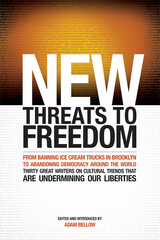 New Threats to Freedom
Adam Bellow
Templeton Press, 2011 New Threats to Freedom In the twentieth century, free people faced a number of mortal threats,ranging from despotism, fascism,
and communism to the looming menace of global terrorism. While the struggle against some of these overt dangers continues, some insidious new threats seem to have slipped past our intellectual defenses. These often unchallenged threats are quietly eroding our hard-won freedoms and, in some cases, are widely accepted as beneficial. In New Threats to Freedom, editor and author Adam Bellow has assembled an all-star lineup of innovative thinkers to challenge these insidious new threats. Some leap into already raging debates on issues such as Sharia law in the West, the rise of transnationalism, and the regulatory state. Others turn their attention to less obvious threats, such as the dogma of fairness, the failed promises of the blogosphere, and the triumph of behavioral psychology. These threats are very real and very urgent, yet this collection avoids projecting an air of doom and gloom. Rather, it provides a blueprint for intellectual resistance so that modern defenders of liberty may better understand their enemies, more effectively fight to preserve the meaning of freedom, and more surely carry its light to a new generation. What are the new threats to freedom? when has authority not claimed, when imposing trammels and curbs on liberty, that it does so for a wider good and a greater happiness?” —Christopher Hitchens “The regulatory state amounts to a regressive tax that penalizes small independent producers and protects
the status quo.” —Max Borders “Europe tends to favor stability over democracy, America democracy over stability.” —Daniel Hannan “The value of free expression is perceived to be at odds with goals that were considered ‘more important,’ like inclusiveness, diversity, nondiscrimination, and tolerance.” —Greg Lukianoff “The masses cannot ultimately be free: only the individual can be.” —Robert D. Kaplan “That old bugbear of postwar sociology—the mob-self—is now a reality. In a participatory/popularity culture, the freedom to think and act for ourselves becomes harder and harder to achieve.” —Lee Siegel “As traditional marriage declines, the ranks of single women are growing, and increasingly these women are substituting the security of a husband with the security of the state.” —Jessica Gavora “Ending the freedom to fail is a mean-spirited attack on the freedom to succeed.” —Michael Goodwin “The only solution to the new threats to American press freedom lies in organized resistance.” —Katherine Mangu-Ward “The new behaviorism isn’t interested in protecting people’s freedom to choose; on the contrary, its core principle is the idea that only by allowing an expert elite to limit choice can individuals learn to break their bad habits.” —Christine Rosen “There’s a world of Travis Bickles out there, and they’re not driving cabs. They’re reading blogs.” —Ron Rosenbaum “The first amendment ensures not that speech will be fair, but that it will be free. It cannot be both.” —David Mamet Join the conversation about these issues at www.newthreatstofreedom.com
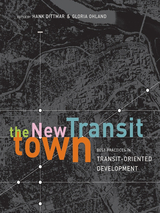 The New Transit Town: Best Practices In Transit-Oriented Development
Edited by Hank Dittmar and Gloria Ohland; Reconnecting America
Island Press, 2003 Transit-oriented development (TOD) seeks to maximize access to mass transit and nonmotorized transportation with centrally located rail or bus stations surrounded by relatively high-density commercial and residential development. New Urbanists and smart growth proponents have embraced the concept and interest in TOD is growing, both in the United States and around the world. New Transit Town brings together leading experts in planning, transportation, and sustainable design—including Scott Bernstein, Peter Calthorpe, Jim Daisa, Sharon Feigon, Ellen Greenberg, David Hoyt, Dennis Leach, and Shelley Poticha—to examine the first generation of TOD projects and derive lessons for the next generation. It offers topic chapters that provide detailed discussion of key issues along with case studies that present an in-depth look at specific projects. Topics examined include: - the history of projects and the appeal of this form of development
- a taxonomy of TOD projects appropriate for different contexts and scales
- the planning, policy and regulatory framework of "successful" projects
- obstacles to financing and strategies for overcoming those obstacles
- issues surrounding traffic and parking
- the roles of all the actors involved and the resources available to them
- performance measures that can be used to evaluate outcomes
Case Studies include Arlington, Virginia (Roslyn-Ballston corridor); Dallas (Mockingbird Station and Addison Circle); historic transit-oriented neighborhoods in Chicago; Atlanta (Lindbergh Center and BellSouth); San Jose (Ohlone-Chynoweth); and San Diego (Barrio Logan). New Transit Town explores the key challenges to transit-oriented development, examines the lessons learned from the first generation of projects, and uses a systematic examination and analysis of a broad spectrum of projects to set standards for the next generation. It is a vital new source of information for anyone interested in urban and regional planning and development, including planners, developers, community groups, transit agency staff, and finance professionals.
New Trees: Recent Introductions to Cultivation
John Grimshaw and Ross Bayton
Royal Botanic Gardens, Kew, 2009 This comprehensive volume, commissioned by the International Dendrology Society, covers more than eight hundred tree species that have been introduced to cultivation in the United Kingdom, Europe, and North America in recent decades. Up until now there has been no comparable source of information. Featuring horticultural notes from a network of growers and enthusiasts, backed up by data from recent scientific studies, the book presents a remarkable amount of information in a fashion accessible to amateurs as well as specialists. More than one hundred line drawings and nearly six hundred photographs—many portraying rarely seen trees—offer aids to identification. Introductory chapters covering conservation and modern techniques of tree-growing, and a comprehensive glossary and bibliography, round out the volume and make New Trees incomparable—and indispensable.
New Trends in Computational Electromagnetics
Özgür Ergül
The Institution of Engineering and Technology, 2020 Computational electromagnetics is an active research area concerned with the development and implementation of numerical methods and techniques for rigorous solutions to physical problems across the entire spectrum of electromagnetic waves - from radio frequencies to gamma rays. Numerical methods and techniques developed and implemented in this area are now used every day to solve complex problems in diverse application areas, including but not limited to antennas, telecommunications, biomedical imaging, sensing, energy harvesting, nanotechnology, and optics. The purpose of this book is to provide a broad overview of the recent efforts in computational electromagnetics to develop and implement more robust, stable, accurate, and efficient algorithms.
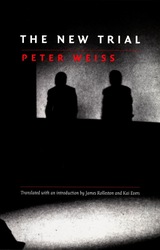 The New Trial
Peter Weiss
Duke University Press, 2001 The New Trial is Peter Weiss’s final drama, completed only months before his death in 1982 and never before published in English. One of Europe’s most important twentieth century playwrights—often considered as influential as Brecht and Beckett—Weiss is best known to American audiences as the author of the Broadway play Marat/Sade and the three-volume novel The Aesthetics of Resistance, which has elicited comparison with Joyce’s Ulysses and Garcia Marquez’s One Hundred Years of Solitude. Initially influenced by Franz Kafka and later by the American Henry Miller, Weiss worked to expose the hypocrisy, the deception, and the nature of aggression in the contemporary world.
A transformative “updating” of Kafka’s novel The Trial, The New Trial presents a surreal, hallucinatory look at the life of “Josef K.,” chief attorney in an enormous multinational firm that exploits both his idealism and his self-doubt in order to present to the world a public face that will mask its own dark and fascistic intentions. Fusing Marxist and capitalist perspectives in a manner that anticipates aspects of the current global market expansion, Weiss evokes a world in which nothing is private and everything is for sale.
This edition of The New Trial is designed to facilitate theatrical teaching and stage production of the play. An extensive introduction by James Rolleston and Kai Evers situates the work in the full context of Weiss’s life, including his Swedish exile during the regime of the Third Reich. In addition, the play’s text is followed by interviews with Weiss and his original codirector (and wife) Gunilla Palmstierna-Weiss, as well as an account of the challenges of the first English staging by director Jody McAuliffe.
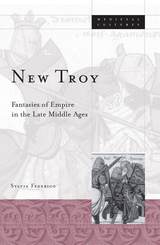 New Troy: Fantasies Of Empire In The Late Middle Ages
Sylvia Federico
University of Minnesota Press, 2003 Examines the political and literary uses of the Trojan legend in the medieval period England in the late fourteenth century witnessed a large-scale social revolt, a lingering and seemingly hopeless war with France, and fierce factional conflicts in royal politics and London civic government—struggles in which all parties sought to justify their actions by claiming historical precedent. How the Trojan legend figured in these claims—and in competing assertions of authorial legitimacy, nationhood, and rule in the later Middle Ages—is the complex nexus of history, myth, literature, and identity that Sylvia Federico explores in this ambitious book. During the late medieval period, many European political and social groups took great pains to associate themselves with the ancient city; the claim on Troy, Federico asserts, was crucial to nationhood and was always a political act. Her book examines the poetry and prose of several late medieval authors, focusing particularly on how Chaucer’s use of the Trojan legend helped to set the terms by which the Ricardian and Lancastrian periods were distinguished, and further helped to establish English literary history as a noble precedent in its own right. Federico’s book affords remarkable insight into the workings of the medieval historical imagination.
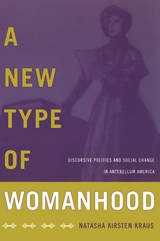 A New Type of Womanhood: Discursive Politics and Social Change in Antebellum America
Natasha Kirsten Kraus
Duke University Press, 2008 In A New Type of Womanhood, Natasha Kirsten Kraus retells the history of the 1850s woman’s rights movement. She traces how the movement changed society’s very conception of “womanhood” in its successful bid for economic rights and rights of contract for married women. Kraus demonstrates that this discursive change was a necessary condition of possibility for U.S. women to be popularly conceived as civil subjects within a Western democracy, and she shows that many rights, including suffrage, followed from the basic right to form legal contracts. She analyzes this new conception of women as legitimate economic actors in relation to antebellum economic and demographic changes as well as changes in the legal structure and social meanings of contract. Enabling Kraus’s retelling of the 1850s woman’s rights movement is her theory of “structural aporias,” which takes the institutional structures of any particular society as fully imbricated with the force of language. Kraus reads the antebellum relations of womanhood, contract, property, the economy, and the nation as a fruitful site for analysis of the interconnected power of language, culture, and the law. She combines poststructural theory, particularly deconstructive approaches to discourse analysis; the political economic history of the antebellum era; and the interpretation of archival documents, including woman’s rights speeches, petitions, pamphlets, and convention proceedings, as well as state legislative debates, reports, and constitutional convention proceedings. Arguing that her method provides critical insight not only into social movements and cultural changes of the past but also of the present and future, Kraus concludes A New Type of Womanhood by considering the implications of her theory for contemporary feminist and queer politics.
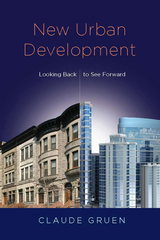 New Urban Development: Looking Back to See Forward
Gruen, Claude
Rutgers University Press, 2010
The recent recession is one result of how local planning laws and practices have stifled competition, discouraged innovation, and artificially pushed up prices in America's most economically vibrant regions. Economist and consultant Claude Gruen unravels the story behind how these unintended consequences have resulted from the evolution of local zoning, growth controls, and laws intended to increase housing affordability.
New Urban Development traces how locally induced housing cost increases led federal policy-makers to toss out the safeguards against lending excesses that had been put in place during the 1930s. But the story begins much earlier, during the colonial era, continuing up through the mortgage collapse that ushered in the recession of 2008. In his sweeping history of these issues, Gruen considers gentrification, environmentalism, sprawl, anti-sprawl movements, and more. His clarification of how urban development change occurs backs up his recommendations for increasing the production of housing and replacing obsolete commercial and industrial spaces with development that serves the twenty-first-century economy. New Urban Development specifies thirteen changes to policies at the federal, state, and local levels to provide better and less expensive urban housing, desirable neighborhoods, and thriving workplaces across the country.
The New Urban Question
Andy Merrifield
Pluto Press, 2014 The New Urban Question is an exuberant and illuminating adventure through our current global urban condition, tracing the connections between radical urban theory and political activism.
From Haussmann’s attempts to use urban planning to rid 19th-century Paris of workers revolution to the contemporary metropolis, including urban disaster-zones such as downtown Detroit, Merrifield reveals how the urban experience has been profoundly shaped by class antagonism and been the battle-ground for conspiracies, revolts and social eruptions.
Going beyond the work of earlier urban theorists such as Manuel Castells, Merrifield identifies the new urban question that has emerged and demands urgent attention, as the city becomes a site of active plunder by capital and the setting for new forms of urban struggle, from Occupy to the Indignados.
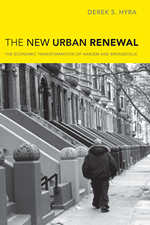 The New Urban Renewal: The Economic Transformation of Harlem and Bronzeville
Derek S. Hyra
University of Chicago Press, 2008 Two of the most celebrated black neighborhoods in the United States—Harlem in New York City and Bronzeville in Chicago—were once plagued by crime, drugs, and abject poverty. But now both have transformed into increasingly trendy and desirable neighborhoods with old buildings being rehabbed, new luxury condos being built, and banks opening branches in areas that were once redlined. In The New Urban Renewal, Derek S. Hyra offers an illuminating exploration of the complicated web of factors—local, national, and global—driving the remarkable revitalization of these two iconic black communities. How did these formerly notorious ghettos become dotted with expensive restaurants, health spas, and chic boutiques? And, given that urban renewal in the past often meant displacing African Americans, how have both neighborhoods remained black enclaves? Hyra combines his personal experiences as a resident of both communities with deft historical analysis to investigate who has won and who has lost in the new urban renewal. He discovers that today’s redevelopment affects African Americans differentially: the middle class benefits while lower-income residents are priced out. Federal policies affecting this process also come under scrutiny, and Hyra breaks new ground with his penetrating investigation into the ways that economic globalization interacts with local political forces to massively reshape metropolitan areas.
As public housing is torn down and money floods back into cities across the United States, countless neighborhoods are being monumentally altered. The New Urban Renewal is a compelling study of the shifting dynamics of class and race at work in the contemporary urban landscape.
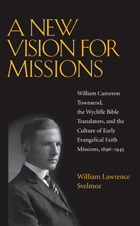 A New Vision for Missions: William Cameron Townsend, The Wycliffe Bible Translators, and the Culture of Early Evangelical Faith Missions, 1917-1945
William Lawrence Svelmoe
University of Alabama Press, 2008 “Cam” Townsend is rightly known as the visionary founder of the Summer Institute of Linguistics (SIL) and the Wycliffe Bible Translators. This joint effort is now the largest Protestant mission organization in the world, a mission which has dramatically changed the culture of what used to be known as faith missions. Townsend revolutionized Protestant missions by emphasizing that missionaries needed to learn the language of the people to whom they were sent and to live among them in order to understand their communities. His system stressed training the missionaries in public health, basic education, and agricultural skills. The demonstrated success of missionaries who followed Townsend’s plan led to SIL/WBT influence in the larger societies in which the organization was present. Townsend was non-dogmatic in seeking allies to pursue his objectives, including local political movements and power structures, academics, and other religious faiths, increasing the influence of his group to the point that SIL/WBT became a major factor in the national affairs of the countries in which they were active, particularly in Latin America. The very success of Townsend’s methods led to trouble with his base in the United States. As conservative and evangelical financial backers and prospective missionaries saw the organization and Townsend working amicably with Roman Catholics, leftist political groups, and atheist and agnostic academics, the SIL/WBT ran into trouble at home.
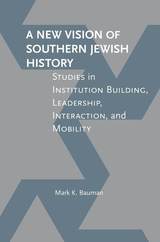 A New Vision of Southern Jewish History: Studies in Institution Building, Leadership, Interaction, and Mobility
Mark K. Bauman, Foreword by Ronald H. Bayor
University of Alabama Press, 2019 Winner of the 2023 Southern Jewish Historical Society Book Award
Essays from a prolific career that challenge and overturn traditional narratives of southern Jewish history
Mark K. Bauman, one of the foremost scholars of southern Jewish history working today, has spent much of his career, as he puts it, “rewriting southern Jewish history” in ways that its earliest historians could not have envisioned or anticipated, and doing so by specifically targeting themes and trends that might not have been readily apparent to those scholars. A New Vision of Southern Jewish History: Studies in Institution Building, Leadership, Interaction, and Mobility features essays collected from over a forty-year career, including a never-before-published article.
The prevailing narrative in southern Jewish history tends to emphasize the role of immigrant Jews as merchants in small southern towns and their subsequent struggles and successes in making a place for themselves in the fabric of those communities. Bauman offers assessments that go far beyond these simplified frameworks and draws upon varieties of subject matter, time periods, locations, tools, and perspectives over three decades of writing and scholarship.
A New Vision of Southern Jewish History contains Bauman’s studies of Jewish urbanization, acculturation and migration, intra- and inter-group relations, economics and business, government, civic affairs, transnational diplomacy, social services, and gender—all complicating traditional notions of southern Jewish identity. Drawing on role theory as informed by sociology, psychology, demographics, and the nature and dynamics of leadership, Bauman traverses a broad swath—often urban—of the southern landscape, from Savannah, Charleston, and Baltimore through Atlanta, New Orleans, Galveston, and beyond the country to Europe and Israel.
Bauman’s retrospective volume gives readers the opportunity to review a lifetime of work in a single publication as well as peruse newly penned introductions to his essays. The book also features an “Additional Readings” section designed to update the historiography in the essays.
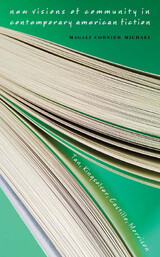 New Visions of Community in Contemporary American Fiction: Tan, Kingsolver, Castillo, Morrison
Magali Cornier Michael
University of Iowa Press, 2006 In this engaging, optimistic close reading of five late twentieth-century novels by American women, Magali Cornier Michael illuminates the ways in which their authors engage with ideas of communal activism, common commitment, and social transformation. The fictions she examines imagine coalition building as a means of moving toward new forms of nonhierarchical justice; for ethnic cultures that, as a result of racist attitudes, have not been assimilated, power with each other rather than power over each other is a collective goal.Michael argues that much contemporary American fiction by women offers models of care and nurturing that move away from the private sphere toward the public and political. Specifically, texts by women from such racially marked ethnic groups as African American, Asian American, Native American, and Mexican American draw from the rich systems of thought, histories, and experiences of these hybrid cultures and thus offer feminist and ethical revisions of traditional concepts of community, coalition, subjectivity, and agency.Focusing on Amy Tan’s The Joy Luck Club, Barbara Kingsolver’s The Bean Trees and Pigs in Heaven, Ana Castillo’s So Far from God, and Toni Morrison’s Paradise, Michael shows that each writer emphasizes the positive, liberating effects of kinship and community. These hybrid versions of community, which draw from other-than-dominant culturally specific ideas and histories, have something to offer Americans as the United States moves into an increasingly diverse twenty-first century. Michael provides a rich lens through which to view both contemporary fiction and contemporary life.
New Vrindaban
Jacob Strautmann
Four Way Books, 2024 New Vrindaban lives in the disputed territory between the past and present, between the idealistic hopes and complicated reality of creating a better world. An electrifying collision of uniquely Appalachian cultural forces, the formal division of poems into “Side One” and “Side Two” pay homage to the concept albums of 1970s garage rock, while the book’s title alludes to the intentional Hare Krishna community in West Virginia founded in the same era. Jacob Strautmann’s latest collection builds an extraordinary temple on the compromised ground — it houses the compressed narratives of varied characters, monumentalizes the beautiful illusions of failed ideas, and remembers the irretrievable innocent love of youth. The music of New Vrindaban is both a ballad of survivor’s guilt and the raucous soundtrack of a record party among friends. It is the “black swift-moving waters,” “the bright clouds unmoored in the wind.”
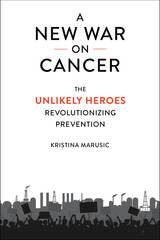 A New War on Cancer: The Unlikely Heroes Revolutionizing Prevention
Kristina Marusic
Island Press, 2023 For more than fifty years, we have been waging, but not winning, the war on cancer. We’re better than ever at treating the disease, yet cancer still claims the lives of one in five men and one in six women in the US. The astonishing news is that up to two-thirds of all cancer cases are linked to preventable environmental causes. If we can stop cancer before it begins, why don’t we?
That was the question that motivated Kristina Marusic’s revelatory inquiry into cancer prevention. In searching for answers, she met remarkable doctors, scientists, and advocates who are upending our understanding of cancer and how to fight it. They recognize that we will never reduce cancer rates without ridding our lives of the chemicals that increasingly trigger this deadly disease.
Most never imagined this role for themselves. One scientist grew up without seeing examples of Indian-American women in the field, yet went on to make shocking discoveries about racial disparities in cancer risk. Another leader knew her calling was children’s health, but realized only later in her career that kids can be harmed by invisible pollutants at their daycares. Others uncovered surprising links between cancer and the everyday items that fill our homes and offices.
For these individuals, the fight has become personal. And it certainly is personal for Berry, a young woman whose battle with breast cancer is woven throughout these pages. Might Berry have dodged cancer had she not grown up in Oil City, Pennsylvania, in the shadow of refineries? There is no way to know for sure. But she is certain that, even with the best treatment available, her life was changed irrevocably by her diagnosis. Marusic shows that, collectively, we have the power to prevent many cases like Berry’s. The war on cancer is winnable—if we revolutionize the way we fight.
New Waves in Electromagnetic Technology
Andrew Michael Chugg
The Institution of Engineering and Technology, 2025 The concept for this book emerged from a webinar on Electromagnetic Waves: Successfully Surfing the Subject that the editor gave on behalf of the IET in June 2020. The concept was that experts in specialist areas of electromagnetics would write each chapter; providing insightful summaries of current developments within their specialisms, and then extrapolating these existing trends in a logical and reasoned fashion to forecast the future technological developments in their fields. The challenge was for them to look ahead by anything up to a century or more.
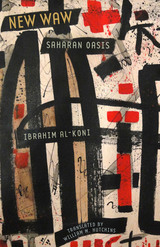 New Waw, Saharan Oasis
By Ibrahim al-Koni
University of Texas Press, 2014 Winner, National Translation Award, American Literary Translators Association, 2015 Upon the death of their leader, a group of Tuareg, a nomadic Berber community whose traditional homeland is the Sahara Desert, turns to the heir dictated by tribal custom; however, he is a poet reluctant to don the mantle of leadership. Forced by tribal elders to abandon not only his poetry but his love, who is also a poet, he reluctantly serves as leader. Whether by human design or the meddling of the Spirit World, his death inspires his tribe to settle down permanently, abandoning not only nomadism but also the inherited laws of the tribe. The community they found, New Waw, which they name for the mythical paradise of the Tuareg people, is also the setting of Ibrahim al-Koni’s companion novel, The Puppet. For al-Koni, this Tuareg tale of the tension between nomadism and settled life represents a choice faced by people everywhere, in many walks of life, as a result of globalism. He sees an inevitable interface between myth and contemporary life.
New Way Of The Wilderness: The Classic Guide to Survival in the Wild
Calvin Rutstrum
University of Minnesota Press, 2000 The complete resource on backcountry camping from a legendary wilderness expert. In this classic guide, first published in the late 1950s, Rutstrum covers the key elements of a successful camping trip: the proper way to build a raft, chop down a tree, construct a campsite, cook over a campfire, find a way through the woods, and much more. Drawing upon his vast experience in all kinds of weather, Rutstrum provides essential knowledge for every camper, in a lightweight volume perfect for the backpack.
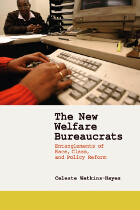 The New Welfare Bureaucrats: Entanglements of Race, Class, and Policy Reform
Celeste Watkins-Hayes
University of Chicago Press, 2009 As the recession worsens, more and more Americans must turn to welfare to make ends meet. Once inside the agency, the newly jobless will face a bureaucracy that has undergone massive change since the advent of welfare reform in 1996. A behind-the-scenes look at bureaucracy’s human face, The New Welfare Bureaucrats is a compelling study of welfare officers and how they navigate the increasingly tangled political and emotional terrain of their jobs. Celeste Watkins-Hayes here reveals how welfare reform engendered a shift in focus for caseworkers from simply providing monetary aid to the much more complex process of helping recipients find work. Now both more intimately involved in their clients’ lives and wielding greater power over their well-being, welfare officers’ racial, class, and professional identities have become increasingly important factors in their work. Based on the author’s extensive fieldwork in two very different communities in the northeast, The New Welfare Bureaucrats is a boon to anyone looking to understand the impact of the institutional and policy changes wrought by welfare reform as well as the subtle social dynamics that shape the way welfare is meted out at the individual level.
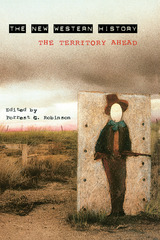 The New Western History: The Territory Ahead
Forrest G. Robinson
University of Arizona Press, 1998 Established barely a decade ago, the New Western History has retold the story of the American West from the point of view of the oppressed, colonized, and conquered. Scholars led by William Cronon, Patricia Nelson Limerick, Richard White, and Donald Worster have challenged the Turnerian myth of the frontier and have forced scholars to reexamine their understanding of the region. Now seven scholars in American Studies, English, women's studies, philosophy, and environmental studies take a closer look at the work of the New Western Historians. While recognizing that these revisionists have broken important new ground, they observe that many of their claims to uniqueness may be overstated and identify areas of investigation that may have been overlooked. These articles discuss the need to expand the horizons of the New Western History to include fiction, women's literature, racial categories, and works of writers such as Wallace Stegner who presaged the movement. They also argue for more serious consideration of popular culture as represented in western fiction and films and include an analysis of the New Western History's treatment of nature by two natural resource managers. The New Western History was first published as a special issue of the Arizona Quarterly: A Journal of American Literature, Culture, and Theory and is now being made available to a wider audience for the first time. It was named Best Special Issue in the 1997 Council of Editors of Learned Journals International Awards Competition and was cited for its interest to general readers. This collection of essays clearly shows that the response to the New Western History is both vigorous and mixed. It advances the lively and important discussion that the New Western Historians have set in motion and makes that debate accessible to anyone with an interest in the history of the West. CONTENTS
Introduction / Jerome Frisk and Forrest G. Robinson
The Theoretical (Re)Positions of the New Western History / Jerome Frisk
Clio Bereft of Calliope: Literature and the New Western History / Forrest G. Robinson
Literature, Gender Studies, and the New Western History / Krista Comer
Haunting Presences and the New Western History: Reading Repetition, Negotiating Trauma / Carl Gutiérrez Jones
The Problem of the "Popular" in the New Western History / Stephen Tatum
The New Western History: An Essay from the Woods (and Rangelands) / Sally K. Fairfax and Lynn Huntsinger
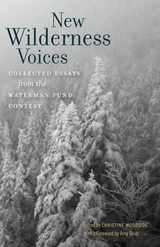 New Wilderness Voices: Collected Essays from the Waterman Fund Contest
Edited by Christine Woodside
University Press of New England, 2017 Guy and Laura Waterman spent a lifetime reflecting on and writing about the mountains of the Northeast. The Waterman Fund seeks to further their legacy of stewardship through an annual essay contest that celebrates and explores issues of wilderness, wildness, and humanity. Since 2008, the Waterman Fund has partnered with the journal Appalachia in seeking out new and emerging voices on these subjects, and in publishing the winning essay in the journal. Part of the contest’s mission is to find and support such emerging writers, and a number of them have gone on to publish other work in Appalachia or their own books. The contest has succeeded admirably in fulfilling its mission: new writers have brought fresh perspectives to these timeless issues of wilderness and wildness. In New Wilderness Voices these winning essays are collected for the first time, along with the best runners-up. Together, they make up an important and celebratory addition to the growing body of environmental literature, and shed new light on our wild spaces.
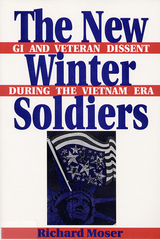 The New Winter Soldiers: GI and Veteran Dissent During the Vietnam Era
Moser, Richard
Rutgers University Press, 1996 Richard Moser uses interviews and personal stories of Vietnam veterans to offer a fundamentally new interpretation of the Vietnam War and the antiwar movement. Although the Vietnam War was the most important conflict of recent American history, its decisive battle was not fought in the jungles of Vietnam, or even in the streets of the United States, but rather in the hearts and minds of American soldiers. To a degree unprecedented in American history, soldiers and veterans acted to oppose the very war they waged. Tens of thousands of soldiers and veterans engaged in desperate conflicts with their superiors and opposed the war through peaceful protest, creating a mass movement of dissident organizations and underground newspapers. Moser shows how the antiwar soldiers lived out the long tradition of the citizen soldier first created in the American Revolution and Civil War. Unlike those great upheavals of the past, the Vietnam War offered no way to fulfill the citizen-soldier's struggle for freedom and justice. Rather than abandoning such ideals, however, tens of thousands abandoned the war effort and instead fulfilled their heroic expectations in the movements for peace and justice. According to Moser, this transformation of warriors into peacemakers is the most important recent development of our military culture. The struggle for peace took these new winter soldiers into America rather than away from it. Collectively these men and women discovered the continuing potential of American culture to advance the values of freedom, equality, and justice on which the nation was founded.
 The New Woman
Carmen Laforet
Catholic University of America Press, 2025 Carmen Laforet’s first novel, Nada, written when she was just 23, won the Nadal Prize, establishing Laforet as one of the greatest writers of post-war Spanish literature. She went on to win the Menorca Prize in 1955 and the National Literature Prize in 1956 for the novel The New Woman. Although she gradually distanced herself from the literary world in the 1970s, she was rediscovered internationally at the beginning of this century and has been translated into more than 30 languages. 2021 marked the centenary of her birth. The only novel of Laforet’s not to be translated into English is La Mujer Nueva (The New Woman). This edition offers a translation by Claire Wadie and an introduction by the Laforet scholar, Caragh Wells.
Ahead of its time, The New Woman tells the story of a woman who longs for freedom in a world in which she has been denied it. But she learns that true freedom also means responsibility. Paulina is young and passionate but vain. After leaving her husband in order to live with her married lover, Paulina experiences a profound religious conversion. She had always been critical of Catholicism but she begins to see a spiritual dimension to her own life and yearns for change. She must decide how to live authentically: stay with her lover, live alone, join a convent, or return to her husband? In making this decision, she comes to understand the full meaning of her humanity, her womanhood, and her place in society. The New Woman offers insight into a woman’s experience of the Spanish civil war and Catholicism’s abiding spiritual richness even at a time when the political situation in Spain rendered the Church unpopular in the eyes of many young women.
The New Woman Gothic: Reconfigurations of Distress
Patricia Murphy
University of Missouri Press, 2026 The controversial and compelling figure of the New Woman in late Victorian fiction has garnered extensive scholarly attention, but rarely has she been investigated through the fascinating lens of the Gothic. Yet the presence of sinister Gothic elements is so widespread in the generally realisitic British novels that the term "New Woman Gothic" readily comes to mind. Drawing from and reworking Gothic conventions of Romantic and later literature, the New Woman version is marshaled during this tumultuous cultural moment of gender anxieties either to defend or revile the complex individual who sought improvements in educational, marital, and professional realms.
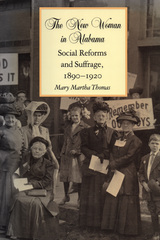 The New Woman in Alabama: Social Reforms and Suffrage, 1890–1920
Mary Martha Thomas
University of Alabama Press, 1992 Between 1890 and 1920, middle-class white and black Alabama women created many clubs and organizations that took them out of the home and provided them with roles in the public sphere. Beginning with the Alabama Woman’s Christian Temperance Union in the 1880s and followed by the Alabama Federation of Women’s Clubs and the Alabama Federation of Colored Women’s Clubs in the 1890s, women spearheaded the drive to eliminate child labor, worked to improve the educational system, upgraded the jails and prisons, and created reform schools for both boys and girls. Suffrage was also an item on the Progressive agenda. After a brief surge of activity during the 1890s, the suffrage drive lay dormant until 1912, when women created the Alabama Equal Suffrage Association. During their campaigns in the 1915 and 1919 to persuade the legislature to enfranchise women, the leaders learned the art of politics—how to educate, organize, lobby, and count votes. Women seeking validation for their roles as homemakers and mother demanded a hearing in the political arena for issues that affected them and their families. In the process they began to erase the line between the public world of men and the private world of women. These were the New Women who tackled the problems created by the industrialization and urbanization of the New South. By 1920 Alabama women had created new public spaces for themselves in these voluntary associations. As a consequence of their involvement in reform crusades, the women’s club movement, and the campaign for woman suffrage, women were no longer passive and dependent. They were willing and able to be rightful participants.
Thomas’s book is the first of its kind to focus on the reform activities of women during the Progressive Era, and the first to consider the southern woman and all the organizations of middle-class black and white women in the South and particularly in Alabama. It is also the first to explore the drive of Alabama women to obtain the vote. The development of political power among southern women progressed slowly. Demolishing as it did the myth of the “Southern Lady.” Traditionally confined to the domestic sphere, southern women had no experience in public decision making and were discouraged from attaining the skills necessary for participation in public debate. The division of women by race and class further impeded their political education. But through their participation in so-called women’s issues—child labor laws, temperance, and educational reform—women gained experience in influencing political leaders. Black and white women’s clubs provided the framework for state-wide lobbying. Only in the wake of their success with domestic issues tackled through club organizations and temperance unions did women dare seek the right to vote. They learned how to wield political power through acceptable “ladylike” avenues, and it was this experience that led to their long but eventually successful drive for woman suffrage. The New Woman eventually found a way to replace the Southern Lady.
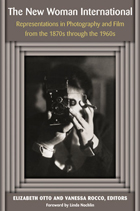 The New Woman International: Representations in Photography and Film from the 1870s through the 1960s
Elizabeth Otto and Vanessa Rocco, editors
University of Michigan Press, 2012 "In The New Woman International, editors Elizabeth Otto and Vanessa Rocco have gathered a group of intellectually stimulating and provocative essays that present the emergence, both tentative and triumphant, of this new global icon and her increasingly multicultural image. Written largely by historians of art and film, these essays emphasize visual analysis of the photographic and film media that carried the new woman's influential message."
---Norma Broude, American University "The New Woman International focuses on the New Woman not simply as an image to be analyzed but also as a producer of images and text. This groundbreaking anthology represents a theoretically sophisticated set of essays that thoroughly examine the phenomenon of the New Woman in previously unexplored ways."
---Sarah E. Chinn, Hunter College, CUNY Images of flappers, garçonnes, Modern Girls, neue Frauen, and trampky---all embodiments of the dashing New Woman---symbolized an expanded public role for women from the suffragist era through the dawn of 1960s feminism. Chronicling nearly a century of global challenges to gender norms, The New Woman International: Representations in Photography and Film from the 1870s through the 1960s is the first book to examine modern femininity's ongoing relationship with the nineteenth and twentieth centuries' most influential new media: photography and film. This volume examines the ways in which novel ideas about women's roles in society and politics were disseminated through these technological media, and it probes the significance of radical changes in female fashion, appearance, and sexual identity. Additionally, these original essays explore the manner in which New Women artists used photography and film to respond creatively to gendered stereotypes and to reconceive of ways of being a woman in a rapidly modernizing world. The New Woman International brings together different generations of scholars and curators who are experts in gender, photography, literature, mass media, and film to analyze the New Woman from her inception in the later nineteenth century through her full development in the interwar period, and the expansion of her forms in subsequent decades. Arranged both chronologically and thematically, these essays show how controversial female ideals figured in discourses including those on gender norms, race, technology, sexuality, female agency, science, media representation, modernism, commercial culture, internationalism, colonialism, and transnational modernity. In exploring these topics through images that range from montages to newspapers' halftone prints to film stills, this book investigates the terms of gendered representation as a process in which women were as much agents as allegories. Inaugurating a new chapter in the scholarship of representation and New Womanhood and spanning North America, Western and Eastern Europe, Asia, and the colonial contexts of Africa and the Pacific, this volume reveals the ways in which a feminine ideal circled the globe to be translated into numerous visual languages. With a foreword from the eminent feminist art historian Linda Nochlin, this collection includes contributions by Jan Bardsley, Matthew Biro, Gianna Carotenuto, Melody Davis, Kristine Harris, Karla Huebner, Kristen Lubben, Maria Makela, Elizabeth Otto, Martha H. Patterson, Vanessa Rocco, Clare I. Rogan, Despina Stratigakos, Brett M. Van Hoesen, Kathleen M. Vernon, and Lisa Jaye Young. DIGITALCULTUREBOOKS: a collaborative imprint of the University of Michigan Press and the University of Michigan Library
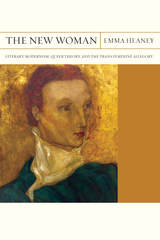 The New Woman: Literary Modernism, Queer Theory, and the Trans Feminine Allegory
Emma Heaney
Northwestern University Press, 2017 The New Woman: Literary Modernism, Queer Theory, and the Trans Feminine Allegory traces the use of the trans feminine as an allegorical figure, from the practice's origins in nineteenth-century sexology through writings in the fields of psychoanalysis, Modernist fiction, and contemporary Queer Theory.
The book is the first to identify the process by which medical sources simplified the diversity of trans feminine experience into a single diagnostic narrative. It then demonstrates that this medical figure became an archetype for the "sexual anarchy" of the Modernist period in works by Aldous Huxley, James Joyce, Djuna Barnes, T. S. Eliot, and Jean Genet.
Thus illuminating the trans feminine's Modernist provenance, the book examines foundational works of Queer Theory that resuscitated the trans feminine allegory at the end of the twentieth century. Insightful and seminal, The New Woman debunks the pervasive reflex beginning in the 1990s to connect trans experience to a late twentieth-century collapse of sexual differences by revealing the Modernist roots of that very formulation.
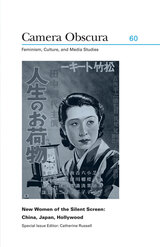 New Women of the Silent Screen: China, Japan, Hollywood, Volume 20
Catherine Russell , ed.
Duke University Press Examining constructions of gender, nationalism, and modernity in films produced in China and Japan in the 1920s and early 1930s, this special issue of Camera Obscura is the first collection of feminist research on Asian cinema of the silent period. Actresses emerged for the first time in the Asian public sphere in the late 1910s, making the convention of the female impersonator obsolete and giving human faces to the many social transformations of urban modernity. During this period, filmmaking started to establish itself as a product of mass culture that circulated globally, creating conduits of cultural exchange in which the modern New Woman became a principal figure of currency. In the silent cinemas of China, Japan, and Hollywood, where Asian women appeared as key representations of nativist and orientalist ideology, early women stars became the focus for competing discourses of gender and modernity and played a key role in the construction of modern Asian identity. The collection includes an essay on the actress Pearl White and how the emergence of the New Woman on Asian screens provoked extensive discussions in the media about the norms of gender and femininity. Hollywood orientalism and Asian nationalism converged in the images of Asian American stars Anna May Wong and Tsuru Aoki, who were criticized by both American and Asian constituencies for transgressing cultural norms. Other essays offer a feminist critique of films by the Japanese directors Yasujiro Ozu, Heinosuke Gosho, Kenji Mizoguchi, and Mikio Naruse, whose work often captured the position of women in a patriarchal system. Trapped between the progressive paradigms of the New Woman and traditional expectations of appropriate gender roles, and between competing notions of Asian modernity, Asian women stars of the silent cinema constitute a dynamic site for feminist film research. Contributors. Weihong Bao, Chika Kinoshita, Sara Ross, Catherine Russell, Mitsuyo Wada-Marciano, Yiman Wang
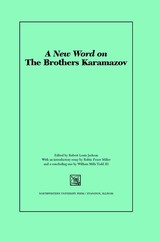 A New Word on The Brothers Karamazov
Robert Louis Jackson
Northwestern University Press, 2004 V. S. Pritchett has written of Dostoevsky that he "is still the master [because] he moves forward with us as the sense of our danger changes." Nearly a century and a quarter have passed since Dostoevsky's last and greatest novel began to appear in installments in The Russian Herald. The essays in A New Word on "The Brothers Karamazov" show us that Dostoevsky does indeed continue to change with us, and that The Brothers Karamazov is very much a novel of our time.
Edited by the nation's most respected senior Dostoevsky scholar, this collection brings together original work by notable writers of varying backgrounds and interests. While drawing on Dostoevsky's other fiction, journalism, and correspondence, the writing of his contemporaries, the state of Russian culture to illuminate the unfolding novel--these essays also make use of new fields of scholarship, such as cognitive psychology, as well as recent theoretical approaches and critical insights. The authors propose readings remarkable for their attentiveness to detail, relatively peripheral characters, and heretofore overlooked incidents, passages, or fragments of dialogue. Some contributors suggest readings so new that they are subvert our usual modes of approaching this novel; all reflect the immediacy of adventuresome, informed encounters with Dostoevsky's final novel. Treating The Brothers Karamazov in terms of a broad range of genres (poetry, narrative, parody, confession, detective fiction) and discourses (medical, scientific, sexual, judicial, philosophical, and theological), these essays embody on a critical and analytic level a search for coherence, meaning, and harmony that continues to animate Dostoevsky's novel in our day.
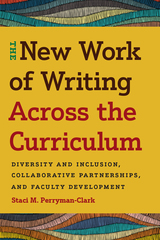 The New Work of Writing Across the Curriculum: Diversity and Inclusion, Collaborative Partnerships, and Faculty Development
Staci M. Perryman-Clark
Utah State University Press, 2023 The New Work of Writing Across the Curriculum is a descriptive analysis of how institutions can work to foster stronger intellectual activities around writing as connected to campus-wide diversity and inclusion initiatives. Author Staci M. Perryman-Clark blends theory and practice, grounds disciplinary conversations with practical examples of campus work, and provides realistic expectations for operations with budgetary constraints while enhancing diversity, equity, and inclusion work in higher education.
Many of these initiatives are created in isolation, reinforcing institutional silos that are not used strategically to gain the attention of senior administrators, particularly those working at state-supported public institutions who must manage shrinking institutional budgets. Yet teaching and learning centers and WAC programs gain tremendously from one another by building explicit partnerships on campus-wide diversity initiatives that emphasize cultural competence. In addition, both cultural competence and written proficiency enhance the transferable skills necessary for completing undergraduate education requirements, and this work can be leveraged to draw the attention of senior administrative leadership.
Faculty development and WAC need to make diversity and inclusion initiatives a priority for professional development. The New Work of Writing Across the Curriculum reviews initiatives that point to increased understanding of diversity and inclusion that will be of significance to administrators, WAC specialists, faculty developers, and diversity officers across the spectrum of institutions of higher learning.
The New World: A Poem
Suzanne Gardinier
University of Pittsburgh Press, 1994 Winner of the 1992 Associated Writing Programs’ Award Series in Poetry.
“A great poem of this end of our century. It is masterfully structured in recurring themes and voices which build on and off each other. Gardinier is above all a poet whose language and images are completely integrated so that in Keats's words, every rift is laden with ore. I found this a thrilling poem to read.” --Adrienne Rich
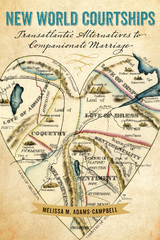 New World Courtships: Transatlantic Alternatives to Companionate Marriage
Melissa M. Adams-Campbell
Dartmouth College Press, 2015 Feminist literary critics have long recognized that the novel’s marriage plot can shape the lives of women readers; however, they have largely traced the effects of this influence through a monolithic understanding of marriage. New World Courtships is the first scholarly study to recover a geographically diverse array of eighteenth- and nineteenth-century novels that actively compare marriage practices from the Atlantic world. These texts trouble Enlightenment claims that companionate marriage leads to women’s progress by comparing alternative systems for arranging marriage and sexual relations in the Americas. Attending to representations of marital diversity in early transatlantic novels disrupts nation-based accounts of the rise of the novel and its relation to “the” marriage plot. It also illuminates how and why cultural differences in marriage mattered in the Atlantic world—and shows how these differences might help us to reimagine marital diversity today. This book will appeal to scholars of literature, women’s studies, and early American history.
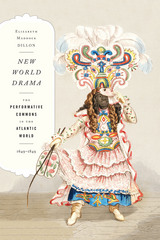 New World Drama: The Performative Commons in the Atlantic World, 1649-1849
Elizabeth Maddock Dillon
Duke University Press, 2014 In New World Drama, Elizabeth Maddock Dillon turns to the riotous scene of theatre in the eighteenth-century Atlantic world to explore the creation of new publics. Moving from England to the Caribbean to the early United States, she traces the theatrical emergence of a collective body in the colonized New World—one that included indigenous peoples, diasporic Africans, and diasporic Europeans. In the raucous space of the theatre, the contradictions of colonialism loomed large. Foremost among these was the central paradox of modernity: the coexistence of a massive slave economy and a nascent politics of freedom.
Audiences in London eagerly watched the royal slave, Oroonoko, tortured on stage, while audiences in Charleston and Kingston were forbidden from watching the same scene. Audiences in Kingston and New York City exuberantly participated in the slaying of Richard III on stage, enacting the rise of the "people," and Native American leaders were enjoined to watch actors in blackface "jump Jim Crow." Dillon argues that the theater served as a "performative commons," staging debates over representation in a political world based on popular sovereignty. Her book is a capacious account of performance, aesthetics, and modernity in the eighteenth-century Atlantic world.
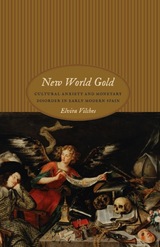 New World Gold: Cultural Anxiety and Monetary Disorder in Early Modern Spain
Elvira Vilches
University of Chicago Press, 2010 The discovery of the New World was initially a cause for celebration. But the vast amounts of gold that Columbus and other explorers claimed from these lands altered Spanish society. The influx of such wealth contributed to the expansion of the Spanish empire, but also it raised doubts and insecurities about the meaning and function of money, the ideals of court and civility, and the structure of commerce and credit. New World Gold shows that, far from being a stabilizing force, the flow of gold from the Americas created anxieties among Spaniards and shaped a host of distinct behaviors, cultural practices, and intellectual pursuits on both sides of the Atlantic. Elvira Vilches examines economic treatises, stories of travel and conquest, moralist writings, fiction, poetry, and drama to reveal that New World gold ultimately became a problematic source of power that destabilized Spain’s sense of trust, truth, and worth. These cultural anxieties, she argues, rendered the discovery of gold paradoxically disastrous for Spanish society. Combining economic thought, social history, and literary theory in trans-Atlantic contexts, New World Gold unveils the dark side of Spain’s Golden Age.
A New World in the Making: Life and Architecture in Tropical Asia
Tay Kheng Soon
National University of Singapore Press, 2023 A memoir and collection of essays on architecture and urbanism from one of the most interesting figures in Singapore’s cultural landscape.
According to architect Tay Kheng Soon, the time has come to change and build a new world. The feeling has impelled him to write this book, bringing together memoir and writings on identity, landscape and belonging, and on architecture and urbanism. Born in British-ruled Singapore, Soon was deeply engaged in the debates about building a new world that attended the end of colonialism. His focus, but far from his only concern, was Singapore's built environment—and its spiritual one—since the early 1960s. A New World in the Making is a must-read reflection on tropical Asia, on architecture and urbanism, and on looking ahead to the always urgent task of building a new world.
The New World Inside A Basque Village: The Oiartzun Valley And Its Atlantic Emigrants, 1550-1800
Juan Javier Pescador
University of Nevada Press, 2003 An ethnohistory detailing the lives of fifteen generations in a Basque-speaking community in Spain and the result of their diverse contacts with the New World. The Basques’ remarkable role in the establishment and exploitation of Spain’s American empire is well known, but until now the impact of these achievements on the Basque Country itself has received little attention. In this pioneering study, Juan Javier Pescador meticulously examines three centuries of social and economic change in the Oiartzun Valley of Gipuzkoa, a typical Basque peasant community altered by its contacts with the New World.
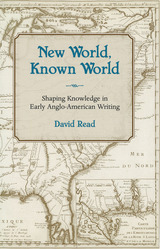 New World, Known World: Shaping Knowledge in Early Anglo-American Writing
David Read
University of Missouri Press, 2005
New World, Known World examines the works of four writers closely associated with the early period of English colonization, from 1624 to 1649: John Smith’s Generall Historie of Virginia, William Bradford’s Of Plymouth Plantation, Thomas Morton’s New English Canaan, and Roger Williams’s A Key into the Language of America (in conjunction with another of Williams’s major works, The Bloudy Tenent of Persecution). David Read addresses these texts as examples of what he refers to as “individual knowledge projects”— the writers’ attempts to shape raw information and experience into patterns and narratives that can be compared with and assessed against others from a given society’s fund of accepted knowledge.
Read argues that the body of Western knowledge in the period immediately before the development of well-defined scientific disciplines is primarily the work of individuals functioning in relative isolation, rather than institutions working in concert. The European colonization of other regions in the same period exposes in a way few historical situations do both the complexity and the uncertainty involved in the task of producing knowledge.
Read treats each work as the project of a specific mind, reflecting a high degree of intentionality and design, and not simply as a collection of documentary evidence to be culled in the service of a large-scale argument. He shows that each author adds a distinct voice to the experience of North American colonization and that each articulates it in ways that are open to analysis in terms of form, style, convention, rhetorical strategies, and applications of metaphor and allegory.
By applying the tools of literary interpretation to colonial texts, Read reaches a fuller understanding of the immediate consequences of English colonization in North America on the culture’s base of knowledge. Students and scholars of early modern colonialism and transatlantic studies, as well as those with interests in seventeenth-century American and English literature, should find this book of particular value.
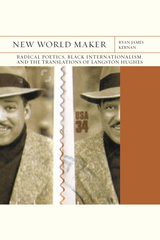 New World Maker: Radical Poetics, Black Internationalism, and the Translations of Langston Hughes
Ryan James Kernan, foreword by Robin D. G. Kelley
Northwestern University Press, 2022 In an ambitious reappraisal of Langston Hughes’s work and legacy, Ryan James Kernan reads Hughes’s political poetry in the context of his practice of translation to reveal an important meditation on diaspora. Drawing on heretofore unearthed archival evidence, Kernan shows how Hughes mined his engagements with the poetics of Louis Aragon, Nicolás Guillén, Regino Pedroso, Vladimir Mayakovsky, Federico García Lorca, and Léopold Sédar Senghor, as well as translations of his own poetry, to fashion a radical poetics that engaged Black left internationalist concerns. As he follows Hughes from Harlem to Havana, Moscow, Madrid, and finally to Dakar, Kernan reveals how the writer’s identity and aesthetic were translated within these leftist geographies and metropoles, by others but also collaboratively. As Kernan argues, we cannot know Hughes without knowing him in translation.
Through original research and close readings alert to the foreign prosody underlying Hughes’s work, New World Maker recuperates his political writing, which had been widely maligned by Cold War detractors and adherents of New Criticism, and affirms his place as a progenitor of African diasporic literature and within the pantheon of US modernists. Demonstrating the integral part translation played in Hughes’s creative process, this book challenges a number of common assumptions about this canonical thinker and offers important insights for scholars of African diasporic literature, comparative literature, and American, Caribbean, and translation studies.
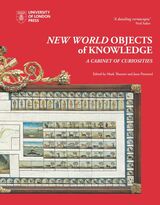 New World Objects of Knowledge: A Cabinet of Curiosities
Edited by Mark Thurner and Juan Pimentel
University of London Press, 2021 A stunning, richly illustrated hardback cataloging key artifacts from across Latin American art, nature, and history.
From the late fifteenth century to the present day, countless explorers, conquerors, and other agents of empire have laid siege to the New World, plundering and pilfering its most precious artifacts and treasures. Today, these natural and cultural products—which are key to conceptualizing a history of Latin America—are scattered in museums around the world.
With contributions from a renowned set of scholars, New World Objects of Knowledge delves into the hidden histories of forty of the New World’s most iconic artifacts, from the Inca mummy to Darwin’s hummingbirds. This volume is richly illustrated with photos and sketches from the archives and museums hosting these objects. Each artifact is accompanied by a comprehensive essay covering its dynamic, often global, history and itinerary. This volume will be an indispensable catalog of New World objects and how they have helped shape our modern world.
The New World of Southeast Asia
Lennox A. Mills
University of Minnesota Press, 1949
The New World of Southeast Asia was first published in 1949. Minnesota Archive Editions uses digital technology to make long-unavailable books once again accessible, and are published unaltered from the original University of Minnesota Press editions.
New World Order
Derek Green
Autumn House Press, 2008 In this wide-ranging collection of stories, Derek Green takes readers on a tour of the world as America’s military-industrial complex reels into a new century. Written with grace, masterful precision and brutal honesty, New World Order shows us characters stripped of the familiar and forced to face the world on its own harsh terms. By turns frightening and comical, fierce and suspenseful, these eleven stories turn our attention outward, to a world where our role as Americans is no longer as clear and secure as it once seemed.
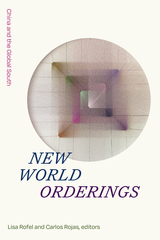 New World Orderings: China and the Global South
Lisa Rofel and Carlos Rojas, editors
Duke University Press, 2022 The contributors to New World Orderings demonstrate that China’s twenty-first-century rise occurs not only through economics and state politics but equally through the mutual entanglements of overlapping social, economic, and cultural worlds in Southeast Asia, Africa, and Latin America. They show how the Chinese state has sought to reconfigure the nation’s position in the world and the centrality of trade, labor, religion, migration, gender, race, and literature to this reconfiguration. Among other topics, the contributors examine China’s post-Bandung cultural diplomacy with African nations, how West African “pastor-entrepreneurs” in China interpreted and preached the prosperity doctrine, the diversity of Chinese-Argentine social relations in the soy supply chain, and the ties between China and India within the complex history of inter-Asian exchange and Chinese migration to Southeast Asia. By examining China’s long historical relationship with the Global South, this volume presents a non-state-centric history of China that foregrounds the importance of transnational communicative and imaginative worldmaking processes and interactions.
Contributors. Andrea Bachner, Luciano Damián Bolinaga, Nellie Chu, Rachel Cypher, Mingwei Huang, T. Tu Huynh, Yu-lin Lee, Ng Kim Chew, Lisa Rofel, Carlos Rojas, Shuang Shen, Derek Sheridan, Nicolai Volland
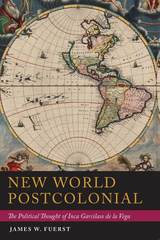 New World Postcolonial: The Political Thought of Inca Garcilaso de la Vega
James W. Fuerst
University of Pittsburgh Press, 2018 New World Postcolonial presents the first full-length study to treat both parts of Inca Garcilaso de la Vega's foundational text Royal Commentaries of the Incas as a seminal work of political thought in the formation of the early Americas and the early-modern period. It is also among a handful of studies to explore the Commentaries as a "mestizo rhetoric," written to subtly address both native Andean readers and Hispano-Europeans. As Fuerst demonstrates, by blending both Andean and European discourses to represent Incan history, Garcilaso further proposed restoring indigenous sovereignty by adopting a new mestizo governing body via the political alliance and intermarriage of encomenderos (estate holders) and Incas. This policy extended to education, missionary practices, and others, reflecting Garcilaso's hopes of forming a peaceful coexistence among native Andeans, mestizos, and first generation Spaniards.
New Worlds, Ancient Texts: The Power of Tradition and the Shock of Discovery
Anthony Grafton
Harvard University Press, 1992 Describing an era of exploration during the Renaissance that went far beyond geographic bounds, this book shows how the evidence of the New World shook the foundations of the old, upsetting the authority of the ancient texts that had guided Europeans so far afield. What Anthony Grafton recounts is a war of ideas fought by mariners, scientists, publishers, and rulers over a period of 150 years. In colorful vignettes, published debates, and copious illustrations, we see these men and their contemporaries trying to make sense of their discoveries as they sometimes confirm, sometimes contest, and finally displace traditional notions of the world beyond Europe.
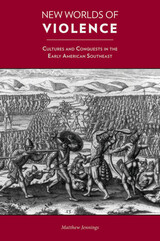 New Worlds of Violence: Cultures and Conquests in the Early American Southeast
Matthew Jennings
University of Tennessee Press, 2011
From the early 1500s to the mid-1700s, the American Southeast was the scene of continuous
tumult as European powers vied for dominance in the region while waging war on Native American communities. Yet even before Hernando de Soto landed his expeditionary
force on the Gulf shores of Florida, Native Americans had created their own “cultures of violence”: sets of ideas about when it was appropriate to use violence and what sorts of violence were appropriate to a given situation.
In New Worlds of Violence, Matthew Jennings offers a persuasive new framework for understanding the European–Native American contact period and the conflicts among indigenous peoples that preceded it. This pioneering approach posits that every group present in the Southeast had its own ideas about the use of violence and that these ideas changed over time as they collided with one another. The book starts with the Mississippian era and continues through the successive Spanish and English invasions of the Native South. Jennings argues that the English conquered the Southeast because they were able to force everyone else to adapt to their culture of violence, which, of course, changed over time as well. By 1740, a peculiarly Anglo-American culture of violence was in place that would profoundly influence the expansion of England’s colonies and the eventual southern United States. While Native and African violence were present in this world, they moved in circles defined by the English.
New Worlds of Violence concludes by pointing out that long-lasting violence bears long-lasting consequences. An important contribution to the growing body of work on the early Southeast, this book will significantly broaden readers’ understanding of America’s violent past.
Matthew Jennings is an assistant professor of history at Macon State College in Macon, Georgia. He is the author of “Violence in a Shattered World” in Mapping the Shatter Zone: The European Invasion and the Transformation of the Mississippian World, edited by Robbie Ethridge and Sheri Shuck-Hall. His work has also appeared in The Uniting States, The South Carolina Encyclopedia, A Multicultural History of the United States, and The Encyclopedia of Native American History.
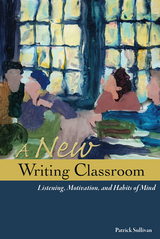 A New Writing Classroom: Listening, Motivation, and Habits of Mind
Patrick Sullivan
Utah State University Press, 2014 In A New Writing Classroom, Patrick Sullivan provides a new generation of teachers a means and a rationale to reconceive their approach to teaching writing, calling into question the discipline's dependence on argument. Including secondary writing teachers within his purview, Sullivan advocates a more diverse, exploratory, and flexible approach to writing activities in grades six through thirteen. A New Writing Classroom encourages teachers to pay more attention to research in learning theory, transfer of learning, international models for nurturing excellence in the classroom, and recent work in listening to teach students the sort of dialogic stance that leads to higher-order thinking and more sophisticated communication. The conventional argumentative essay is often a simplistic form of argument, widely believed to be the most appropriate type of writing in English classes, but other kinds of writing may be more valuable to students and offer more important kinds of cognitive challenges. Focusing on listening and dispositions or "habits of mind” as central elements of this new composition pedagogy, A New Writing Classroom draws not just on composition studies but also on cognitive psychology, philosophy, learning theory, literature, and history, making an exciting and significant contribution to the field.
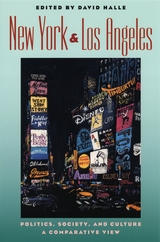 New York and Los Angeles: Politics, Society, and Culture--A Comparative View
Edited by David Halle
University of Chicago Press, 2003 No two cities are more symbolic of the modern American metropolis than New York and Los Angeles. But while New York boasts a recently revitalized urban center, Los Angeles is the classic example of sprawl and decentralization, with multiple clusters of economic and social activity dispersed throughout its surrounding area.
This volume presents advanced studies that consider this fundamental difference between New York and Los Angeles while comparing and contrasting politics and culture in each region. An esteemed group of contributors from a wide variety of disciplines considers issues that include immigration, the effects of race and class on residence, the efficacy of public schools, the value of welfare reform, the meaning of mayoral politics, the function of charter reform, and the respective roles of the cinema and art scenes in each city.
Capturing much of what is new and vibrant in urban studies today, New York and Los Angeles will prove to be must reading for scholars in that field, as well as in sociology, political science, and government.
Contributors:
Andrew Beveridge, Mehdi Bozorgmehr, Geoffrey DeVerteuil, Susan S. Fainstein, Robert Gedeon, Saverio Giovacchini, David L. Gladstone, David Halle, Jack Katz, Karen M. Kaufmann, Rebecca Kim, Mark Levitan, Kevin Rafter, Georges Sabagh, David O. Sears, Heidi Sommer, Raphael J. Sonenshein, András Szántó, Lois Takahashi, Susan Weber, Jennifer Wolch, Julia Wrigley, Min Zhou
 The New York Bond Market, 1920-1930
Charles Cortez Abbott
Harvard University Press Primarily this volume may be considered to be a financial history of the post-war decade, or at least a history of those financial forces which influence the course of the bond market. It studies movements in the bond market as part of the general economic mechanism, a point of view which involves consideration of Federal Reserve policy, the course of business activity, gold movements, the short-term money market, the stock market, and Treasury policy. Furthermore, it takes into account certain other elements that were important at particular times, such as the position of the United States on international accounts, the relations of the Federal Reserve Board and the Federal Reserve Bank of New York, and the psychological temper of the financial world. The movements of prices of first and second grade bonds and the changes in the volume of different kinds of new bond issues, such as refunding issues and corporate, foreign, municipal, and Federal government issues, are studied in detail.
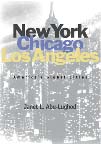 New York, Chicago, Los Angeles: America’s Global Cities
Janet Abu-Lughod
University of Minnesota Press, 2001 A renowned scholar compares America's three global cities.
"Abu-Lughod nicely characterizes the distinctive feel and experience of the three cities. She works her way through the history, the statistics, and the economic forces, but she ends up on the sidewalk, marveling at the complexity that has been created by an extraordinary history, and enamored of it. What is most urgent about her book is not so much her analysis of the urban condition as her devotion to cities. The city has been under attack by theorists and sprawlers for a long time now, but this fine book provides necessary examples of how the city may be intelligently loved." --Nathan Glazer in The New Republic
"In a pathbreaking analysis, Abu-Lughod demonstrates the historical roots of what is usually described as a contemporary phenomenon." --MultiCultural Review
"Substantial, in-depth comparison of more than one large city by a single urban scholar, while not unprecedented, is a difficult project to execute competently. Abu-Lughod has done a commendable job. One can only hope that others will follow her pioneering work and provide comparative and historical analyses of other global cities." --Urban Geography
"For those of us who are interested in historical-geographical approaches to comparative urbanization, Janet Abu-Lughod's new work, New York, Chicago, Los Angeles: America's Global Cities, comes as a welcome relief. This impressive volume provides a comprehensive, readable, and lively interpretation of the three leading U.S. metropolitan areas. Although Abu-Lughod is a trained urban sociologist, she has a keen sensitivity to historical, spatial, economic, political, and cultural considerationsits real strengths lie in an exhaustive review of empirical evidence from the three metropolises and a rich illustration of points with abundant maps, tables, and figures. Abu-Lughod excels in profiling the trajectories of America's three largest city-regions. I find the book to be a tour de force, the worthwhile result of many years of study and observation. Happily, the book presents the material in a straightforward way and is remarkably free of the jargon that sometimes plagues global-city studies. I hope the book receives wide circulation. Abu-Lughod, after a long scholarly career in urban studies, may have achieved her magnum opus in this ambitious study of America's three preeminent global cities." --Geographical Review
"Janet Abu-Lughod's book is both a fascinating history of New York, Chicago, and Los Angeles and a history of the United States from a new perspective. The stories of the three cities are beautifully overlapped but consistent in themselves, related to one another but self-sufficient. This is a very American book-despite the author's wealth of experience abroad. Her forte is the new narrative she weaves from existing research. The book provides a remarkably systematic and organized narrative of urbanization in the 19th and 20th centuries. It is also replete with a collection of individual anecdotal evidence and an impressive multitude of single conceptual and metaphorical observations that are often hidden in the empirical material presented throughout the book. This book represents an outstanding achievement. It will be-and deserves to be-an instant classic. Abu-Lughod's major opus is expressive of a life's work among the great American urbanists and planners of the 20th century. Abu-Lughod is a living example of what the best of urbanism can produce in a largely suburban America. In this sense, the book gives planners a giant source of inspiration: the big picture in long waves. The city lives despite itself." --Roger Keil, Journal of the American Planning Association
"Janet L. Abu-Lughod's book is the first to compare these cities in an ambitious in-depth study that takes into account each city's unique history, following their development from their earliest days to their current status as players on the global state." --Bulletin of Science, Technology & Society
New York, Chicago, and Los Angeles--for all their differences, they are quintessentially American cities. They are also among the handful of cities in the world that can truly be called "global." Janet L. Abu-Lughod's book is the first to compare them in an ambitious in-depth study that takes into account each city's unique history, following their development from their earliest days to their current status as players on the global stage.
Unlike most other global cities, New York, Chicago, and Los Angeles all quickly grew from the nearly blank slate of the American landscape to become important beyond the nation's borders early in their histories. As a result, Abu-Lughod is able to show the effect of globalization on each city's development from its beginnings. While all three are critical to global economics and the spread of American culture to the farthest reaches of an increasingly interlinked world, their influence reflects their individual histories and personalities. In a masterful synthesis of historical and economic information, Abu-Lughod clarifies how each city's global role is--and will be--affected by geography, ethnicity of population, political institutions, and tradition of governance.
New York, Chicago, and Los Angeles are more than global players: they are also home to forty million people. Abu-Lughod closes the book with a set of vignettes that captures the cities' differences as perceived by one who has lived in them. Bringing together the local and the global in thoroughly unexpected and enlightening ways, this important volume offers fascinating insight into these vital urban centers.
"Comparative urbanism has few practitioners as distinguished as Janet L. Abu-Lughod. In this monumental study, Professor Abu-Lughod rescues Los Angeles from eccentricity by placing it in comparative context alongside the two most accepted urban paradigms of the United States: New York and Chicago. In doing so, she has added a new city--the City of Angels--to the front ranks of American cities and has significantly enhanced our understanding of New York and Chicago as well." --Kevin Starr, State Librarian of California
"This breathtaking tour through the history of the three largest cities of the United States synthesizes the essentials of their varied history in a readable, lively form. New York, Chicago, Los Angeles is the first book I have seen by a single author who has lived in and become intimately knowledgeable about each of the cities, has plumbed their history, examined statistics, and pulled together a comparison that places the data and accounts in the context of personal experience. Abu-Lughod concludes the book with a set of human vignettes that captures differences and similarities among the cities, in the lived experience of a user and employer of each of the cities." --Peter Marcuse, Columbia University
"A masterful comparative history of the three cities. Abu-Lughod's scholarship is impeccable and her book extremely well written." --John Friedmann, Professor Emeritus, UCLA, author of Endangered Dreams: The Great Depression and California and The Dream Endures: California Enters the 1940s.
Janet L. Abu-Lughod, professor emerita of sociology of Northwestern University and the Graduate Faculty of the New School for Social Research, has been writing about and studying cities for more than fifty years. Her books include From Urban Village to East Village: The Battle for New York's Lower East Side; Changing Cities: Urban Sociology; Before European Hegemony: The World System A.D. 1250-1350; Rabat: Urban Apartheid in Morocco; and Cairo: 1001 Years of the City Victorious, among many other publications. In 1999 she received the Robert and Helen Lynd Award (American Sociological Association, Section on Community and Urban Sociology) for distinguished lifetime contributions to the study of cities.
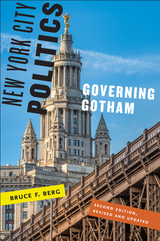 New York City Politics: Governing Gotham
Berg, Bruce F
Rutgers University Press, 2018 Most experts consider economic development to be the dominant factor influencing urban politics. They point to the importance of the finance and real estate industries, the need to improve the tax base, and the push to create jobs. Bruce F. Berg maintains that there are three forces which are equally important in explaining New York City politics: economic development; the city’s relationships with the state and federal governments, which influence taxation, revenue and public policy responsibilities; and New York City’s racial and ethnic diversity, resulting in demands for more equitable representation and greater equity in the delivery of public goods and services.
New York City Politics focuses on the impact of these three forces on the governance of New York City’s political system including the need to promote democratic accountability, service delivery equity, as well as the maintenance of civil harmony. This second edition updates the discussion with examples from the Bloomberg and de Blasio administrations as well as current public policy issues including infrastructure, housing and homelessness, land use regulations, and education.
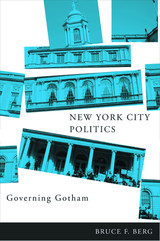 New York City Politics: Governing Gotham
Berg, Bruce F
Rutgers University Press, 2007
Most experts consider economic development to be the dominant factor influencing urban politics. They point to the importance of the finance and real estate industries, the need to improve the tax base, and the push to create jobs. Bruce F. Berg maintains that there are three forces which are equally important in explaining New York City politics: economic development; the city’s relationships with the state and federal governments, which influence taxation, revenue and public policy responsibilities; and New York City’s racial and ethnic diversity, resulting in demands for more equitable representation and greater equity in the delivery of public goods and services.
New York City Politics focuses on the impact of these three forces on the governance of New York City’s political system including the need to promote democratic accountability, service delivery equity, as well as the maintenance of civil harmony. This second edition updates the discussion with examples from the Bloomberg and de Blasio administrations as well as current public policy issues including infrastructure, housing and homelessness, land use regulations, and education.
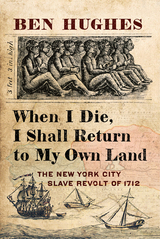 The New York City Slave Revolt of 1712: The First Enslaved Insurrection in British North America
Ben Huges
Westholme Publishing, 2024 The First Comprehensive Investigation into the First Uprising Against Slavery in North America
At 2 a.m. on April 7, 1712, a fire broke out in New York City’s North Ward. Unbeknown to the residents who roused themselves to combat the flames, the blaze had been started with murderous intent. A group of at least twenty-four enslaved West African men and women, mostly Akan from modern-day Ghana, had long plotted this moment. Armed with guns, daggers, swords, axes, and clubs, they fell upon their enslavers. In the next few frantic moments, eight Europeans were killed and seven were wounded. The perpetrators were rounded up, jailed, and put on public trial. Twenty enslaved men and one woman were executed or transported for carrying out the plot. As the first event of its kind to take place in the North American colonies, this revolt was the progenitor of those that followed—it inspired, the Stono Rebellion of 1739, the New York Conspiracy of 1741, and Nat Turner’s 1831 insurrection.
When I Die, I Shall Return to My Own Land: The 1712 New York City Slave Revolt is the first comprehensive investigation into this major event in the history of slavery in North America. Consulting court records, correspondence, and the minutes of the various colonial councils, as well as a wide range of sources related to eighteenth-century slavery, historian Ben Hughes vividly recreates early colonial New York, the lives of its enslaved inhabitants, the factionalism among the city’s Dutch and English elites, and their precarious hold on Manhattan Island in the face of French and Native American threats. Hughes traces the origins of the New York rebels, details how they came to be enslaved, and recreates the shadowy dealings that took place between African polities, European and American slavers, and New York merchants. The forerunners of a movement which continues to this day, the deeds of these original African American rebels have now been all but forgotten. Here, Hughes attempts to redress this imbalance by recovering their story.
The New York Hotel Industry: A Labor Relations Study
Morris A. Horowitz
Harvard University Press Morris Horowitz isolates a microcosm in the industrial relations complex and presents the equivalent of a controlled experiment with selected materials. His conclusions about this miniature industrial organism offer instructive analogies with national labor relations developments. The principals involved are the Hotel Association of New York City and the New York Hotel Trades Council. The internal organization of each has unique characteristics; their continued stability during a long-term relationship provides an opportunity to study the various stages of maturity.
New York in Quotations
Compiled by Jaqueline Mitchell
Bodleian Library Publishing, 2014 “Make your mark in New York and you are a made man,” wrote Mark Twain, encapsulating both the naked ambition of the city’s citizens and the opportunities up for grabs in the Big Apple. Others take a more cynical approach, calling the city “an aviary overstocked with jays” (O. Henry), a “sucked orange” (Ralph Waldo Emerson), or “fantastically charmless and elaborately dire” (Henry James). Over the last three-and-a-half centuries, this glamorous, twenty-four hour city has attracted a multitude of thinkers, poets, novelists and playwrights, many of whom have brilliantly encapsulated its unique spirit through verse, prose, or the ultimate wisecrack.
The New York Money Market and the Finance of Trade, 1900–1913
C. A. E. Goodhart
Harvard University Press In the United States during the early years of the twentieth century, there were considerable seasonal variations in the balance of trade, primarily caused by the annual agricultural cycle. This intensive examination of the New York money market during the period demonstrates that the frequent fluctuations in monetary conditions were caused by these variations in the trade flows rather than by capital movements by banks. Some of the criticism of the structure of the banking system by contemporary economists, which encouraged the adoption of the Federal Reserve System, is shown to have been misplaced.
New York Recentered: Building the Metropolis from the Shore
Kara Murphy Schlichting
University of Chicago Press, 2019 The history of New York City’s urban development often centers on titanic municipal figures like Robert Moses and on prominent inner Manhattan sites like Central Park. New York Recentered boldly shifts the focus to the city’s geographic edges—the coastlines and waterways—and to the small-time unelected locals who quietly shaped the modern city. Kara Murphy Schlichting details how the vernacular planning done by small businessmen and real estate operators, performed independently of large scale governmental efforts, refigured marginal locales like Flushing Meadows and the shores of Long Island Sound and the East River in the late nineteenth and early twentieth centuries. The result is a synthesis of planning history, environmental history, and urban history that recasts the story of New York as we know it.
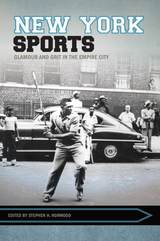 New York Sports: Glamour and Grit in the Empire City
Stephen Norwood
University of Arkansas Press, 2018 New York has long been both America’s leading cultural center and its sports capital, with far more championship teams, intracity World Series, and major prizefights than any other city. Pro football’s “Greatest Game Ever Played” took place in New York, along with what was arguably history’s most significant boxing match, the 1938 title bout between Joe Louis and Max Schmeling. As the nation’s most crowded city, basketball proved to be an ideal sport, and for many years it was the site of the country’s most prestigious college basketball tournament. New York boasts storied stadiums, arenas, and gymnasiums and is the home of one of the world’s two leading marathons as well as the Belmont Stakes, the third event in horse racing’s Triple Crown. New York sportswriters also wield national influence and have done much to connect sports to larger social and cultural issues, and the vitality and distinctiveness of New York’s street games, its ethnic institutions, and its sports-centered restaurants and drinking establishments all contribute to the city’s uniqueness. New York Sports collects the work of fourteen leading sport historians, providing new insight into the social and cultural history of America’s major metropolis and of the United States. These writers address the topics of changing conceptions of manhood and violence, leisure and social class, urban night life and entertainment, women and athletics, ethnicity and assimilation, and more.
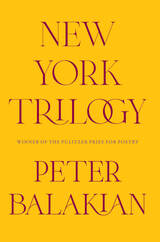 New York Trilogy
Peter Balakian
University of Chicago Press, 2025 An American long poem in three sections by Pulitzer Prize-winning poet Peter Balakian that moves between decades of tumultuous life in New York City and explosive parts of the Middle East.
In an inventive, elliptical language, New York Trilogy explores one man’s journey from the late 1960s to the twenty-first century, as he moves through a series of experiences centered in New York City and the surrounding New Jersey Palisades. Throughout this long poem in three parts, the protagonist’s life is impacted by historical events including the Armenian Genocide, the bombing of Hiroshima, the Vietnam War, the AIDS epidemic, the attacks of September 11th, the US war in Iraq, and the climate crisis.
Comprised of three multi-sequence poems originally included in Peter Balakian’s collections No Sign, Ozone Journal, and Ziggurat, the sections of New York Trilogy come together to form a poetry that embraces interior and aesthetic experiences, celebrates human intimacy, and bears witness to history. The historical power and psychological depth of Balakian’s work expands on the tradition of the American long poem with a lyrical narrative that weaves intimate personal moments into the vastness of shared history.
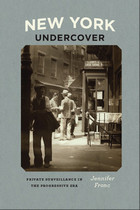 New York Undercover: Private Surveillance in the Progressive Era
Jennifer Fronc
University of Chicago Press, 2009 To combat behavior they viewed as sexually promiscuous, politically undesirable, or downright criminal, social activists in Progressive-era New York employed private investigators to uncover the roots of society’s problems. New York Undercover follows these investigators—often journalists or social workers with no training in surveillance—on their information-gathering visits to gambling parlors, brothels, and meetings of criminal gangs and radical political organizations. Drawing on the hundreds of detailed reports that resulted from these missions, Jennifer Fronc reconstructs the process by which organizations like the National Civic Federation and the Committee of Fourteen generated the knowledge they needed to change urban conditions. This information, Fronc demonstrates, eventually empowered government regulators in the Progressive era and beyond, strengthening a federal state that grew increasingly repressive in the interest of pursuing a national security agenda. Revealing the central role of undercover investigation in both social change and the constitution of political authority, New York Undercover narrates previously untold chapters in the history of vice and the emergence of the modern surveillance state.
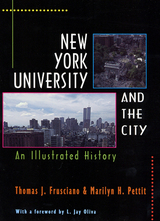 New York University and the City: An Illustrated History
Frusciano, Thomas J
Rutgers University Press, 1997 In New York University and the City, Thomas J. Frusciano and Marilyn H. Pettit situate the history of a unique urban university within the context of the social, political, and economic history of New York City. The authors trace the movement northward on Manhattan Island of both university and city, from the commercial hustle and bustle around City Hall, where the first classes were held in 1832, to the rural environs of Greenwich Village, and ultimately even farther north in 1894 to the undergraduate extension on the "secluded hilltop" of University Heights in the Bronx. Vividly illustrated with both historical and contemporary images, New York University and the City explores various themes in the history of higher education and how NYU responded to changes in urban demographics, curriculum demands, and physical space during critical periods in the city's development. The relationship between university and city is further examined through extensive biographical portraits of the many historical personalities who made contributions to the development of both city and university. The founding of New York University in 1831 is a watershed in the history of higher education in the United States. Albert Gallatin, former secretary of the treasury, led a group that proposed the creation of an institution of higher learning in New York City that would "correspond with the spirit and wants of the age and country," a nondenominational institution that would enlarge the opportunities of education for those qualified and inclined. NYU was expected to educate not only gentlemen scholars but also the sons of the great commercial metropolis. It also reflected and symbolized the aspirations of the city. By 1931, NYU was the nation's largest private university. Frusciano and Pettit chronicle the university's growth and struggles to its ultimate position as one of the most prestigious academic research institutions in the world.
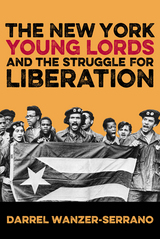 The New York Young Lords and the Struggle for Liberation
Darrel Wanzer-Serrano
Temple University Press, 2015 The Young Lords was a multi-ethnic, though primarily Nuyorican, liberation organization that formed in El Barrio (Spanish Harlem) in July of 1969. Responding to oppressive approaches to the health, educational, and political needs of the Puerto Rican community, the movement’s revolutionary activism included organized protests and sit-ins targeting such concerns as trash pickups and lead paint hazards. The Young Lords advanced a thirteen-point political program that demanded community control of their institutions and land and challenged the exercise of power by the state and outsider-run institutions.
In The New York Young Lords and the Struggle for Liberation, Darrel Wanzer-Serrano details the numerous community initiatives that advanced decolonial sensibilities in El Barrio and beyond. Using archival research and interviews, he crafts an engaging account of the Young Lords’ discourse and activism. He rescues the organization from historical obscurity and makes an argument for its continued relevance, enriching and informing contemporary discussions about Latino/a politics.
New York-Paris: Whitman, Baudelaire, and the Hybrid City
Laure Katsaros
University of Michigan Press, 2012 As New York and Paris began to modernize, new modes of entertainment, such as panoramas, dioramas, and photography, seemed poised to take the place of the more complex forms of literary expression. Dioramas and photography were invented in Paris but soon spread to America, forming part of an increasingly universal idiom of the spectacle. This brave new world of technologically advanced but crudely mimetic spectacles haunts both Whitman's vision of New York and Baudelaire's view of Paris. In New York-Paris, Katsaros explores the images of the mid-nineteenth-century city in the poetry of both Whitman and Baudelaire and seeks to demonstrate that, by projecting an image of the other's city onto his own, each poet tried to resist the apparently irresistible forward momentum of modernity rather than create a paradigmatically happy mixture of "high" and "low" culture.
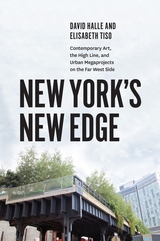 New York's New Edge: Contemporary Art, the High Line, and Urban Megaprojects on the Far West Side
David Halle and Elisabeth Tiso
University of Chicago Press, 2014 The story of New York’s west side no longer stars the Sharks and the Jets. Instead it’s a story of urban transformation, cultural shifts, and an expanding contemporary art scene. The Chelsea Gallery District has become New York’s most dominant neighborhood for contemporary art, and the streets of the west side are filled with gallery owners, art collectors, and tourists. Developments like the High Line, historical preservation projects like the Gansevoort Market, the Chelsea galleries, and plans for megaprojects like the Hudson Yards Development have redefined what is now being called the “Far West Side” of Manhattan.
David Halle and Elisabeth Tiso offer a deep analysis of the transforming district in New York’s New Edge, and the result is a new understanding of how we perceive and interpret culture and the city in New York’s gallery district. From individual interviews with gallery owners to the behind-the-scenes politics of preservation initiatives and megaprojects, the book provides an in-depth account of the developments, obstacles, successes, and failures of the area and the factors that have contributed to them.
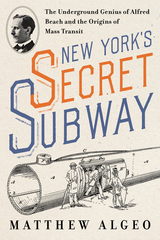 New York’s Secret Subway: The Underground Genius of Alfred Beach and the Origins of Mass Transit
Matthew Algeo
Island Press, 2025 In the nineteenth century, Manhattan’s streets were so choked with pedestrians, horses, vehicles, and vendors that a trip from City Hall to Central Park could take hours. Alfred Beach had the perfect solution: build a giant pneumatic tube underneath Broadway from the Battery to Harlem. Air pressure would shoot passengers up and down the island in clean, quiet carriages. But Beach was up against the operators of the horse-drawn streetcars and the politicians in their pay, most conspicuously William M. Tweed, the notorious “Boss” of Tammany Hall.
New York’s Secret Subway: The Underground Genius of Alfred Beach and the Origins of Mass Transit tells a classic story of good versus evil, pitting the mild-mannered Beach, a visionary inventor and entrepreneur, against the oafish tyrant Tweed, the exemplar of corruption in the Gilded Age. It also tells the story of one of the most astonishing feats of engineering in American history, the surreptitious creation of the nation’s first operational subway.
New York seemed destined to become the second city in the world with a comprehensive subway system, after London. Unfortunately, political lethargy and greed would conspire to deny the city a subway for another thirty years.
Yet Alfred Beach still proved conclusively the feasibility of underground railways in Manhattan, and paved the way for modern mass transportation systems.
Richly illustrated and populated with larger-than-life characters, New York’s Secret Subway will captivate readers and provide historical context for today’s clashes between public interests and powerful business and political groups. Algeo tells this amazing true story in full for the first time, and although it took place more than a century ago, it will at times sound surprisingly familiar.
The New Young American Poets: An Anthology
Edited by Kevin Prufer. Foreword by Richard Howard
Southern Illinois University Press, 2000 Poetry today holds mainstream attention as never before. From community workshops to reading groups, from coffee house poetry slams to small press lit mags, from universities to web 'zines, the world of poetry has become part of our everyday lives. Demonstrating the range and vitality of the new generation of American writers, The New Young American Poets features the work of forty poets born since 1960.
 New Zealand, 1769-1840: Early Years of Western Contact
Harrison M. Wright
Harvard University Press Harrison Wright discusses aspects of the history of northern New Zealand with particular emphasis on the interaction between the Maori and Western societies. The explorers, traders, whalers, missionaries, and other Westerners who visited New Zealand are considered as the agents of change, and the Maoris are considered as they and their environment altered the expectations and activities of the Westerners who came to live among them.
The author first describes the nature and extent of the Western penetration into New Zealand; he then examines the depopulation noticeable after the Western penetration and its causes—the spread of contagious diseases and the introduction of Western war methods. In the third part of the book he studies the effects of Western society—particularly of the Christian missionary work and of the influence of the traders and whalers—on the Maori patterns of behavior.
In conclusion, Wright contrasts the happy situation at the time of the British annexation in 1840, when there was a high conversion rate and encouraging agricultural progress, with the years immediately following, when the Maoris began resentfully to sense that the missionaries were not able to fill for them the gaps left by a growing sophistication and the consequent rejection of old tribal and religious habits. For their part, the Europeans realized that they had underestimated the durability of Maori habits of thought and had been overoptimistic about changing the ways of a people with regard only for their own—European—goals.
New Zealand Cinema: Interpreting the Past
Edited by Alistair Fox, Barry Keith Grant, and Hilary Radner
Intellect Books, 2011 New Zealand has produced one of the world’s most vibrant film cultures, a reflection of the country’s evolving history and the energy and resourcefulness of its people. From early silent features like The Te Kooti Trail to recent films such as River Queen, this book examines the role of the cinema of New Zealand in building a shared sense of national identity. The works of key directors, including Peter Jackson, Jane Campion, and Vincent Ward, are here introduced in a new light, and select films are given in-depth coverage. Among the most informative accounts of New Zealand’s fascinating national cinema, this will be a must for film scholars around the globe.
New Zealand Film and Television: Institution, Industry and Cultural Change
Trisha Dunleavy and Hester Joyce
Intellect Books, 2011 Despite challenges arising from a limited population and the difficulty of obtaining adequate funding, both the film and television industries of New Zealand have been the source of significant achievements and profound cultural influence. Charting their emergence and subsequent development through five decades, New Zealand Film and Television looks at these two increasingly vibrant cultural and creative industries. While there is a growing body of academic work on film and television in New Zealand, relatively little exists that examines the specific cultural concerns, local industries, institutions, and policies involved, which this book addresses in full.
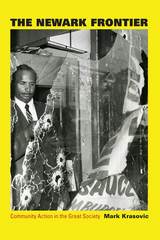 The Newark Frontier: Community Action in the Great Society
Mark Krasovic
University of Chicago Press, 2016 To many, Newark seems a profound symbol of postwar liberalism’s failings: an impoverished, deeply divided city where commitments to integration and widespread economic security went up in flames during the 1967 riots. While it’s true that these failings shaped Newark’s postwar landscape and economy, as Mark Krasovic shows, that is far from the whole story.
The Newark Frontier shows how, during the Great Society, urban liberalism adapted and grew, defining itself less by centralized programs and ideals than by administrative innovation and the small-scale, personal interactions generated by community action programs, investigative commissions, and police-community relations projects. Paying particular attention to the fine-grained experiences of Newark residents, Krasovic reveals that this liberalism was rooted in an ethic of experimentation and local knowledge. He illustrates this with stories of innovation within government offices, the dynamic encounters between local activists and state agencies, and the unlikely alliances among nominal enemies. Krasovic makes clear that postwar liberalism’s eventual fate had as much to do with the experiments waged in Newark as it did with the violence that rocked the city in the summer of 1967.
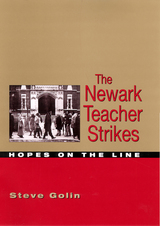 The Newark Teacher Strikes: Hopes on the Line
Golin, Steve
Rutgers University Press, 2002 Winner of the Richard P. McCormick 2003 Prize for Scholarly Publication, given by the New Jersey Historical Commission
For three weeks in 1970 and for eleven weeks in 1971, the schools in Newark, New Jersey, were paralyzed as the teachers went on strike. In the wake of the 1971 strike, almost two hundred were arrested and jailed. The Newark Teachers Union said their members wanted improved education for students. The Board of Education claimed the teachers primarily desired more money. After interviewing more than fifty teachers who were on the front lines during these strikes, historian Steve Golin concludes that another, equally important agenda was on the table, and has been ignored until now. These professionals wanted power, to be allowed a voice in the educational agenda. Through these oral histories, Golin examines the hopes of the teachers as they picketed, risking arrest and imprisonment. Why did they strike? How did the union represent them? How did their action—and incarceration—change them? Did they continue to teach in impoverished schools? Golin also discusses the tensions arising during that period. These include differences in attitudes toward unions among black, Jewish, and Italian teachers; different organizing strategies of men and women; and conflict between teachers’ professional and working-class identities. The first part of the book sets the stage by exploring the experience of teachers in Newark from World War II to the 1970 strike. After covering both strikes, Golin brings the story up to 1995 in the epilogue, which traces the connection between educational reform and union democracy. Teacher Power enhances our understanding of what has worked and what hasn’t worked in attempts at reforming urban schools. Equally importantly, the teachers’ vivid words and the author’s perceptive analysis enables us to view the struggles of not just Newark, but the entire United States during a turbulent time.
Newark's Little Italy: The Vanished First Ward
Immerso, Michael
Rutgers University Press, 1997 Michael Immerso traces the history of the First Ward from the arrival of the first Italian in the 1870s until 1953 when the district was uprooted to make way for urban renewal. Richly illustrated with photographs culled from the albums and shoeboxes in the private collections of hundreds of former First Ward families from all across the United States, the book documents the evolution of the district from a small immigrant quarter into a complex Italian-American neighborhood that thrived during the first half of this century.
Newberry Crater: Anthropological Papers Number 121
Thomas Connolly
University of Utah Press, 1999 The research in this volume derives from investigations conducted in connection with proposed widening and realignment of the Paulina-East Lake Highway, located within the caldera of Newberry Volcano. Formal evaluation of 13 localities and data recovers at four sites produced a wealth of information regarding human uses of the caldera and vicinity throughout the Holocene. Initial evaluations were conducted in 1990 at nine sites. Text excavations the following year were conducted at four additional localities. The results of data recovery excavations undertaken at four sites in 1992 are reported in this volume.
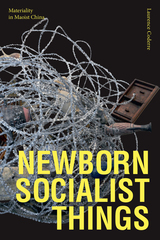 Newborn Socialist Things: Materiality in Maoist China
Laurence Coderre
Duke University Press, 2021 Contemporary China is seen as a place of widespread commodification and consumerism, while the preceeding Maoist Cultural Revolution is typically understood as a time when goods were scarce and the state criticized what little consumption was possible. Indeed, with the exception of the likeness and words of Mao Zedong, both the media and material culture of the Cultural Revolution are often characterized as a void out of which the postsocialist world of commodity consumption miraculously sprang fully formed. In Newborn Socialist Things, Laurence Coderre explores the material culture of the Cultural Revolution to show how it paved the way for commodification in contemporary China. Examining objects ranging from retail counters and porcelain statuettes to textbooks and vanity mirrors, she shows how the project of building socialism in China has always been intimately bound up with consumption. By focusing on these objects—or “newborn socialist things”—along with the Cultural Revolution’s media environment, discourses of materiality, and political economy, Coderre reconfigures understandings of the origins of present-day China.
 Newcastle’s New York: Anglo–American Politics, 1732–1753
Stanley Nider Katz
Harvard University Press Focusing on the province of New York, this book provides an exhaustive examination of the political system characteristic of the American colonies in the eighteenth century, and is the most comprehensive study yet of the interaction of English and American politics in the years before the Revolution. In Part I, Stanley Nider Katz discusses the impact of English politics and imperial administration on the colonies and the general conduct of Anglo–American politics. In Part II, he describes and analyzes in detail New York’s politics from 1732 to 1753 and New York’s relation to the complex web of administrative formalism and patronage that typified the England of the Duke of Newcastle, England’s principal colonial administrator during this era. The author’s conclusions have important implications for the study of the Revolution. During the first half of the eighteenth century, officials in England were relatively uninterested in the internal regulation of colonial affairs. After mid-century, however, the conduct of a major war required that the informality and flexibility of colonial politics give way to a more impersonal, rigid system, and New Yorkers were “forced to consider whether there was not, suddenly, some disparity between king and country.”
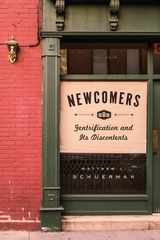 Newcomers: Gentrification and Its Discontents
Matthew L. Schuerman
University of Chicago Press, 2019 Gentrification is transforming cities, small and large, across the country. Though it’s easy to bemoan the diminished social diversity and transformation of commercial strips that often signify a gentrifying neighborhood, determining who actually benefits and who suffers from this nebulous process can be much harder. The full story of gentrification is rooted in large-scale social and economic forces as well as in extremely local specifics—in short, it’s far more complicated than both its supporters and detractors allow.
In Newcomers, journalist Matthew L. Schuerman explains how a phenomenon that began with good intentions has turned into one of the most vexing social problems of our time. He builds a national story using focused histories of northwest Brooklyn, San Francisco’s Mission District, and the onetime site of Chicago’s Cabrini-Green housing project, revealing both the commonalities among all three and the place-specific drivers of change. Schuerman argues that gentrification has become a too-easy flashpoint for all kinds of quasi-populist rage and pro-growth boosterism. In Newcomers, he doesn’t condemn gentrifiers as a whole, but rather articulates what it is they actually do, showing not only how community development can turn foul, but also instances when a “better” neighborhood truly results from changes that are good. Schuerman draws no easy conclusions, using his keen reportorial eye to create sharp, but fair, portraits of the people caught up in gentrification, the people who cause it, and its effects on the lives of everyone who calls a city home.
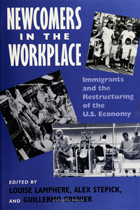 Newcomers In Workplace: Immigrants and the Restructing of the U.S. Economy
edited by Louise Lamphere, Alex Stepick and Guillermo Grenier
Temple University Press, 1994 Newcomers in the Workplace documents and dramatizes the changing face of the American workplace, transformed in the 1980s by immigrant workers in all sectors. This collection of excellent ethnographies captures the stench of meatpacking plants, the clatter of sewing machines, the sweat of construction sites, and the strain of management-employee relations in hotels and grocery stores as immigrant workers carve out crucial roles in a struggling economy. Case studies focus on three geographical regions—Philadelphia, Miami, and Garden City, Kansas—where the active workforce includes increasing numbers of Cubans, Haitians, Koreans, Puerto Ricans, Laotians, Vietnamese, and other new immigrants. The portraits show these newcomers reaching across ethnic boundaries in their determination to retain individualism and to insure their economic survival.
In the series Labor and Social Change, edited by Paula Rayman and Carmen Sirianni.
The Newcomers: Negroes and Puerto Ricans in a Changing Metropolis
Oscar Handlin
Harvard University Press Within a historical context Oscar Handlin tells the story of the Negroes and Puertos Ricans in the New York area. Concentrating on the human factors involved, he contrasts their experience to that of other white immigrants.
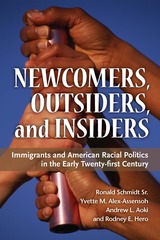 Newcomers, Outsiders, and Insiders: Immigrants and American Racial Politics in the Early Twenty-first Century
Ronald Schmidt Sr., Yvette M. Alex-Assensoh, Andrew L. Aoki, and Rodney E. Hero
University of Michigan Press, 2009 "The authors have done a commendable and impressive job of addressing a topic of long-lasting and increasing significance in U.S. politics."
---F. Chris Garcia, University of New Mexico "This is a path-breaking book that will be read across disciplines beyond political science."
---James Jennings, Tufts University Over the past four decades, the United States has experienced the largest influx of immigrants in its history. Not only has the ratio of European to non-European newcomers changed, but the numbers of recent arrivals from the Asian subcontinent, Southeast Asia, South America, and other regions are increasing. In this timely study, a team of political scientists examines how the arrival of these newcomers has affected the efforts of long-standing U.S. minority groups---Blacks, Latinos, and Asian Pacific Americans---to gain equality through greater political representation and power. The authors predict that, for some time to come, the United States will function as a complex multiracial hierarchy, rather than as a genuine democracy. Ronald Schmidt, Sr. is Professor of Political Science at California State University, Long Beach. Yvette M. Alex-Assensoh is Associate Professor of Political Science and Dean of the Office for Women's Affairs (OWA) at Indiana University, Bloomington. Andrew L. Aoki is Professor of Political Science at Augsburg College. Rodney E. Hero is Professor of Political Science at the University of California, Berkeley.
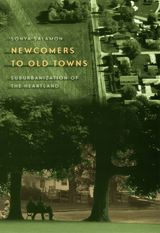 Newcomers to Old Towns: Suburbanization of the Heartland
Sonya Salamon
University of Chicago Press, 2003 2004 winner of the Robert E. Park Book Award from the Community and Urban Sociology Section (CUSS) of the American Sociological Association
Although the death of the small town has been predicted for decades, during the 1990s the population of rural America actually increased by more than three million people. In this book, Sonya Salamon explores these rural newcomers and the impact they have on the social relationships, public spaces, and community resources of small town America.
Salamon draws on richly detailed ethnographic studies of six small towns in central Illinois, including a town with upscale subdivisions that lured wealthy professionals as well as towns whose agribusinesses drew working-class Mexicano migrants and immigrants. She finds that regardless of the class or ethnicity of the newcomers, if their social status differs relative to that of oldtimers, their effect on a town has been the same: suburbanization that erodes the close-knit small town community, with especially severe consequences for small town youth. To successfully combat the homogenization of the heartland, Salamon argues, newcomers must work with oldtimers so that together they sustain the vital aspects of community life and identity that first drew them to small towns.
An illustration of the recent revitalization of interest in the small town, Salamon's work provides a significant addition to the growing literature on the subject. Social scientists, sociologists, policymakers, and urban planners will appreciate this important contribution to the ongoing discussion of social capital and the transformation in the study and definition of communities.
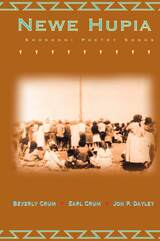 Newe Hupia: Shoshoni Poetry Songs
Beverly Crum, Earl Crum, and Jon P. Dayley
Utah State University Press, 2002 This collection presents written texts of songs in Shoshoni and English, with both figurative and literal translations, and is packaged with a CD containing performances of the songs by Earl and Beverly Crum. The songs fall into several categories based on the contexts of their performances, such as dance songs, medicine songs, and handgame songs. The texts are framed with an introduction and commentary discussing the cultural background, meaning, forms, and performance contexts of the songs; Shoshoni language; and methodology. Glossaries of Shoshoni terms are appended. As the first major linguistic study of Shoshoni songs, Newe Hupia is an important contribution to scholarship. It also marks a significant achievement in the preservation of an important aspect of Shoshoni language and culture. And it has literary value as a presentation of Shoshoni verse and aesthetics. Furthermore, many readers and listeners will find the songs to be lyrical, pleasing to the ear, and evocative of the natural world.
Newer Dimensions of Patient Care: Improving Staff Motivation and Competence
Esther Lucille Brown
Russell Sage Foundation, 1962 This study focuses on the staff who provide direct patient care, viewing hospital personnel in interaction with patients and in their own work groups. It examines the psychosocial needs characteristic of most workers and suggests ways to meet them to encourage increased staff motivation and competence.
Newer Dimensions of Patient Care: Patients as People
Esther Lucile Brown
Russell Sage Foundation, 1964 Emphasizing the importance of the psychosocial and cultural background of the individual patient, the final study suggests methods of acquiring this information and the ways in which the staff can then utilize these findings to best advantage both in initial contact and in planning comprehensive patient care.
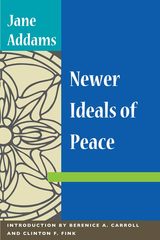 NEWER IDEALS OF PEACE
Jane Addams
University of Illinois Press, 2006 In this her second book, Jane Addams moves beyond humanitarian appeals to sensibility and prudence, advancing a more aggressive, positive idea of peace as a dynamic social process emerging out of the poorer quarters of cosmopolitan cities. Her deep analysis of relations among diverse groups in U.S. society, exemplified by inter-ethnic and labor relations in Chicago, draws widely useful lessons for both domestic and global peace, in an early formulation of today’s "globalization from below." In an unprecedented, revolutionary critique of the pervasive militarization of society, Addams applies her scathing pen to traditional advocates and philosophers of “negative” peace, founders of the U.S. constitution, militarists, bigots, imperialists, and theories of “democratic peace” and liberal capitalism. Instead she sees a slow, powerful emergence of forces from below--the poor, the despised, workers, women, ethnic and racial communities, oppressed groups at home and abroad--that would invent moral substitutes for war and gradually shape a just, peaceful, and varied social order. An extensive, in-depth introduction by Berenice Carroll and Clinton Fink provides historical context, analysis, and a reassessment of the theoretical and practical significance of Newer Ideals of Peace today.
The Newest Employee of the Museum of Ruin
Charlie Clark
Four Way Books, 2020 In The Newest Employee of the Museum of Ruin, poet Charlie Clark interrogates masculinity, the pastoral, the lasting inheritance of one’s lineage, and the mysterious every day. His speaker, ever aware of impending ruin, experiences a landscape colored by anxiety. But his speaker is also self-aware, curious and trying to refrain from too much self-judgement: “I am sorry / for this cruel wish, but I want my life to outlast / bitterness.” The speaker turns over and over the materials of culture, asking what pleasure it creates, replicates, diminishes, or destroys. When the tension runs too high, the poet creates moments of relief: “Suffering is not a philosophy any more than rain is.” Readers follow a speaker searching for ways to enjoy living within a damaged and declining world. Rich in image and wide-eyed, the beautiful, the plain, the ugly coexist in a debut collection 15 years in the making.
Newly Born Woman
Helene Cixous
University of Minnesota Press, 1986 Published in France as La jeune née in 1975, and found here in its first English translation, The Newly Born Woman is a landmark text of the modern feminist movement. In it, Hélène Cixous and Catherine Clément put forward the concept of écriture feminine, exploring the ways women’s sexuality and unconscious shape their imaginary, their language, and their writing. Through their readings of historical, literary, and psychoanalytic accounts, Cixous and Clément explore what is hidden and repressed in culture, revealing the unconscious of history.
 Newly Discovered French Letters of the Seventeenth, Eighteenth, and Nineteenth Centuries
Richmond Laurin Hawkins
Harvard University Press Fifty-one of these letters have never been published before, and the remaining sixty-nine are a selection from letters already edited by Professor Hawkins in various French and American periodicals. The letters, penned by fifty-seven authors, are addressed to citizens of a number of countries; all of them have been chosen with careful regard to their historical or literary content. Among those of especial interest to students of American history or of Franco-American relations are the following: d’Alembert, the due de La Rochefoucauld, Lavoisier, and Marat to Benjamin Franklin; Brillat-Savarin to Samuel Miles Hopkins; Sismondi to Andrews Norton, father of Charles Eliot Norton; Clemenceau to John Durand, American editor and art critic; Alexandre Dumas fils to Mrs Margaret Bertha Wright; and especially the nineteen letters written by Alexis de Tocqueville to Theodore Sedgwick, a lawyer of New York City.
 The Newman Brothers: An Essay in Comparative Intellectual Biography
William Robbins
Harvard University Press The mid-nineteenth century was a period of extraordinary intellectual excitement and tension and nowhere is this more vividly illustrated than in the divergent careers of Cardinal Newman and his brother Francis. Both were men of considerable mental powers and high moral purpose. They shared a devotion to the search for religious truth and spiritual values, yet their intellectual development drove them further and further apart until they came to represent the two opposing philosophical positions of their age.
Professor Robbins' study of the brothers reveals in a new and striking way the master currents of the period which carried these symbolical figures in such different directions. With considerable psychological insight he traces their early lives from the common evangelical zeal of their adolescence through their striking careers at Oxford. He then follows the famous story of John Henry Newman's difficult and hesitating journey of conscience which led him to break with the Church of England and embrace the rigid dogma of Rome. He contrasts it with the almost unknown progress of Francis Newman from the life of an evangelical and missionary to become an apostle of all those liberal, rationalist ideas which his brother had rejected with such vehemence and to doubt the very bases of the christian faith.
Cardinal Newman's life has already been explored in many books but Professor Robbins draws on illuminating new material. He quotes from many unpublished letters between the brothers and from the works of Francis which few but he have read for two generations.
The weight of scholarship behind this book makes it an important study for students of nineteenth-century literature, philosophy and religion, while the general reader should find this a lucid and compelling account of the interplay of sharply contrasting ideas and personalities.
 Newman, Canon Law and Development: Quarrying Granite Rocks with Razors
David P. Long
Catholic University of America Press, 2024 John Henry Newman is well-known as a theologian, philosopher, historian, writer, University rector, and poet, but can he also be associated with the field of canon law?
When Newman first proposed the possibility of doctrinal development as proof that the Catholic faith was free from corruption and error, he claimed “the Church is declared to be the great and special support of the Truth, her various functionaries are said to be means towards the settlement of diversities and of uncertainty of doctrine, and securing unity of faith.” For Newman, these various functionaries included not only apostles, prophets, evangelists, and pastors, but also theologians and, as is argued in this work, canon lawyers.
While Newman and doctrinal development have become well-explored topics in the field of theology, there has been little scholarship on how Newman’s thoughts on doctrinal development can influence current canon law and Church governance. David Long addresses that lacuna by offering a systematic analysis of Newman’s concept of development within current canonical practice. It starts by tracing Newman’s notions of personal judgment, public discussion, and episcopal moderation, followed by a presentation of the current canonical understanding of the theologian, and finally an application of the connection between Newman’s theory on development and present canonical legislation as it involves the role of the theologian.
By undertaking such an application, and by creating a model for discussion that preserves both development and Tradition, this work humbly proposes a valuable model for understanding the theologian’s contribution within the life of the contemporary Church in ways not previously explored.
Newman University Church, Dublin: Architectural Revivalism in the British Isles and the Authority of Form
Niamh Bhalla
University College London, 2024 The first-ever account of the historic relationship between the church and early architecture in Dublin.
Newman University Church, Dublin charts the first ever analysis of University Church’s significance within the history of Victorian revivalist architecture. Author Niamh Bhalla explores the relationship between the church’s context as the first Catholic university in Ireland and the ambiguity of its “early Christian” style, providing an effective lens to understand the architectural revivalism of the nineteenth century, particularly basilican and Byzantine revivalist architectures in the British Isles.
 Newport In Rockies: Life & Good Times Of
Marshall Sprague
Ohio University Press, 1988 In 1871, General William Jackson Palmer, a Civil War cavalry hero, dreamed of a Rocky Mountain resort town where sedate, temperate, wealthy folk could enjoy life in tranquil comfort. From its inception as a tiny resort hamlet, Colorado Springs has grown into the second largest city in the Colorado Rockies, with a projected population by 1990 of 400,000. Marshall Sprague tells the remarkable and colorful story of a community that, despite its massive growth, never abandoned its original vision of comfort and gentility. His account, illustrated with rare archival photographs, has been revised and enlarged for the 1990s.
In the town's early years, rich easterners and Englishmen came seeking adventure, romance, and gentility. But when gold was discovered at nearby Cripple Creek in 1900, Colorado Springs became an instant boom town. A second major boom came several decades later, when local boosters persuaded the Army to choose Colorado Springs as the site for Fort Carson, a training center for 30,000 troops. Other military projects followed, including Peterson Field, Ent Air Force Base, the underground North American Air Defense Command Combat Operations Center, and in 1954, the U.S. Air Force Academy. More recent projects, discussed in a new final chapter, include the Olympic Training Center and the Olympic Hall of Fame, as well as high-tech industries and advances in culture, education, and recreation.
As the city sprawls eastward onto the prairie, it bears little resemblance to General Palmer's 1871 village. Yet the general's dream of a quality town in a quality environment has continued to inspire generations of administrators and boosters who have made Colorado Springs a model of urban prosperity.
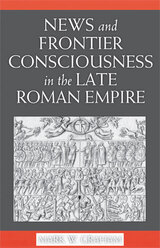 News and Frontier Consciousness in the Late Roman Empire
Mark W. Graham
University of Michigan Press, 2006 Prior to the third century A.D., two broad Roman conceptions of frontiers proliferated and competed: an imperial ideology of rule without limit coexisted with very real and pragmatic attempts to define and defend imperial frontiers. But from about A.D. 250-500, there was a basic shift in mentality, as news from and about frontiers began to portray a more defined Roman world—a world with limits—allowing a new understanding of frontiers as territorial and not just as divisions of people. This concept, previously unknown in the ancient world, brought with it a new consciousness, which soon spread to cosmology, geography, myth, sacred texts, and prophecy. The “frontier consciousness” produced a unified sense of Roman identity that transcended local identities and social boundaries throughout the later Empire.
Approaching Roman frontiers with the aid of media studies as well as anthropological and sociological methodologies, Mark W. Graham chronicles and documents this significant transition in ancient thought, which coincided with, but was not necessarily dependent on, the Christianization of the Roman world.
Mark W. Graham is Assistant Professor of History at Grove City College.
 News and Other Poems
David Citino
University of Notre Dame Press, 2002 In The News and Other Poems, David Citino confronts and attempts to make sense of the news. He explores the good and bad ways the world has of careening into a life and sending it off course. Citino tries to understand how we come to know what we know, driven as we are by haughty assumptions about the world we're making and the control we think we exert over our own lives and loves.
While still holding romantic notions of ivory towers and ivy-covered garrets, Citino welcomes the latest information--no matter how bad the news. He struggles to understand stories from sources impeachable and unimpeachable--supermarket tabloids and journals of science, folklore and the laboratory, chronicles of ancient history and news wires, even those sometimes terrible things we learn from our doctors or those we love.
DAVID CITINO is the author of twelve volumes of poetry, including the National Book Critics Circle Notable Book, Broken Symmetry. He is the contributing editor of The Eye of the Poet: Six Views of the Art and Craft of Poetry. His poems have appeared in numerous publications and anthologies, including The Georgia Review, Kenyon Review, The Southern Review, and Threepenny Review. Citino is professor of English and creative writing and Poet Laureate at Ohio State University.
Reviews
"At times keenly empathetic (‘Ode to Billy Dove'), and often irreverent (‘Funding the Dead'), Citino's intense observations and wit yield irresistable poems." --ForeWord magazine
"Citino presents a fun and insightful take on whatever curious moments inspire him from the world at large. He does this marveloulsy, walking a tight line between fact and fancy. [The News and Other Poems] stands out among the recent poetry books as something new and interesting, and as proof that poetry can come from anywhere." --The Adirondack Review
"This is high entertainment by a poet who possesses honesty and playfulness in equal measure and who is an expert at deploying the line and boxing the stanza." --Billy Collins
"Pound said that literature is news that stays news and the distinguished poet, David Citino, has taken this observation from the wittiest reinvention of current events all the way to the Great Tabloid of the inexpressible. The News and Other Poems is funny, remarkable, and profound." --Carol Muske-Dukes
"These vivid topical poems try wryly to come to terms with human depravity, with ‘the grim, thorny symmetry/ of war,' ‘the usual apocalypse' of people drowned or killed in meaningless accidents. But this is not a dark book. Citino's wit and passionate love of life sparkle throughout. Speaking through Sister Mary Appassionata, he declares, ‘there is a place where it all makes sense.'" --Maxine Kumin
"The strength of this book resides in its vivid mixture of the sacred and the profane. The real ‘news' of these poems is that here is a person alert to all our profane and post-modern predicaments, and yet who still finds within himself the stirrings and yearnings toward whatever we can dimly perceive of the sacred." --Fred Marchant, author of Tipping Point and Full Moon Boat
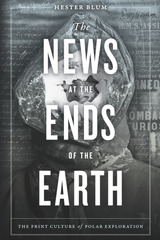 The News at the Ends of the Earth: The Print Culture of Polar Exploration
Hester Blum
Duke University Press, 2019 From Sir John Franklin's doomed 1845 search for the Northwest Passage to early twentieth-century sprints to the South Pole, polar expeditions produced an extravagant archive of documents that are as varied as they are engaging. As the polar ice sheets melt, fragments of this archive are newly emergent. In The News at the Ends of the Earth Hester Blum examines the rich, offbeat collection of printed ephemera created by polar explorers. Ranging from ship newspapers and messages left in bottles to menus and playbills, polar writing reveals the seamen wrestling with questions of time, space, community, and the environment. Whether chronicling weather patterns or satirically reporting on penguin mischief, this writing provided expedition members with a set of practices to help them survive the perpetual darkness and harshness of polar winters. The extreme climates these explorers experienced is continuous with climate change today. Polar exploration writing, Blum contends, offers strategies for confronting and reckoning with the extreme environment of the present.
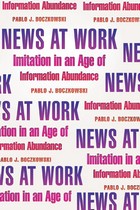 News at Work: Imitation in an Age of Information Abundance
Pablo J. Boczkowski
University of Chicago Press, 2010 Before news organizations began putting their content online, people got the news in print or on TV and almost always outside of the workplace. But nowadays, most of us keep an eye on the headlines from our desks at work, and we have become accustomed to instant access to a growing supply of constantly updated stories on the Web. This change in the amount of news available as well as how we consume it has been coupled with an unexpected development in editorial labor: rival news organizations can now keep tabs on the competition and imitate them, resulting in a decrease in the diversity of the news. Peeking inside the newsrooms where journalists create stories and the work settings where the public reads them, Pablo J. Boczkowski reveals why journalists contribute to the growing similarity of news—even though they dislike it—and why consumers acquiesce to a media system they find increasingly dissatisfying.
Comparing and contrasting two newspapers in Buenos Aires with similar developments in the United States, News at Work offers an enlightening perspective on living in a world with more information but less news.
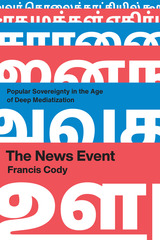 The News Event: Popular Sovereignty in the Age of Deep Mediatization
Francis Cody
University of Chicago Press, 2023 In the hypermediated world of Tamil Nadu, Francis Cody studies how “news events” are made.
Not merely the act of representing events with words or images, a “news event” is the reciprocal relationship between the events being reported in the news and the event of the news coverage itself. In The News Event, Francis Cody focuses on how imaginaries of popular sovereignty have been remade through the production and experience of such events. Political sovereignty is thoroughly mediated by the production of news, and subjects invested in the idea of democracy are remarkably reflexive about the role of publicly circulating images and texts in the very constitution of their subjectivity. The law comes to stand as both a limit and positive condition in this process of event making, where acts of legal and extralegal repression of publication can also become the stuff of news about news makers. When the subjects of news inhabit multiple participant roles in the unfolding of public events, when the very technologies of recording and circulating events themselves become news, the act of representing a political event becomes difficult to disentangle from that of participating in it. This, Cody argues, is the crisis of contemporary news making: the news can no longer claim exteriority to the world on which it reports.
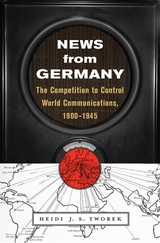 News from Germany: The Competition to Control World Communications, 1900–1945
Heidi J. S. Tworek
Harvard University Press, 2019 Winner of the Barclay Book Prize, German Studies Association
Winner of the Gomory Prize in Business History, American Historical Association and the Alfred P. Sloan Foundation
Winner of the Fraenkel Prize, Wiener Library for the Study of Holocaust and Genocide
Honorable Mention, European Studies Book Award, Council for European Studies
To control information is to control the world. This innovative history reveals how, across two devastating wars, Germany attempted to build a powerful communication empire—and how the Nazis manipulated the news to rise to dominance in Europe and further their global agenda.
Information warfare may seem like a new feature of our contemporary digital world. But it was just as crucial a century ago, when the great powers competed to control and expand their empires. In News from Germany, Heidi Tworek uncovers how Germans fought to regulate information at home and used the innovation of wireless technology to magnify their power abroad.
Tworek reveals how for nearly fifty years, across three different political regimes, Germany tried to control world communications—and nearly succeeded. From the turn of the twentieth century, German political and business elites worried that their British and French rivals dominated global news networks. Many Germans even blamed foreign media for Germany’s defeat in World War I. The key to the British and French advantage was their news agencies—companies whose power over the content and distribution of news was arguably greater than that wielded by Google or Facebook today. Communications networks became a crucial battleground for interwar domestic democracy and international influence everywhere from Latin America to East Asia. Imperial leaders, and their Weimar and Nazi successors, nurtured wireless technology to make news from Germany a major source of information across the globe. The Nazi mastery of global propaganda by the 1930s was built on decades of Germany’s obsession with the news.
News from Germany is not a story about Germany alone. It reveals how news became a form of international power and how communications changed the course of history.
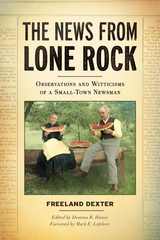 The News from Lone Rock: Observations and Witticisms of a Small-Town Newsman
Freeland Dexter
Wisconsin Historical Society Press, 2016 At the turn of the twentieth century, the bustling railroad town of Lone Rock, Wisconsin, was home to about a thousand residents, and Freeland Dexter seemed to know the business of every single one. Dexter reported all the news from Lone Rock—from the significant to the trivial, the tragic to the comical—for the Weekly Home News of neighboring Spring Green from 1884 to 1912. This collection of Dexter’s most fascinating, amusing, and poignant stories and observations brings back to life the colorful characters of his time and takes readers on a journey to a world that was both simpler and changing fast. Whether he was reporting who grew the biggest watermelon, teasing the local lovebirds, or taking a side on the ever-controversial question of whether the town should go dry, Dexter wrote with a distinctive wit and an obvious affection for his town and its people. The News from Lone Rock also provides an illuminating window into a time period of rapid technological progress, showing how the introduction of electric light, telephones, and cars changed lives and connected this quaint village more and more to the outside world.
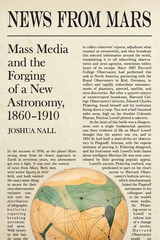 News from Mars: Mass Media and the Forging of a New Astronomy, 1860-1910
Joshua Nall
University of Pittsburgh Press, 2019
Mass media in the late nineteenth century was full of news from Mars. In the wake of Giovanni Schiaparelli’s 1877 discovery of enigmatic dark, straight lines on the red planet, astronomers and the public at large vigorously debated the possibility that it might be inhabited. As rivalling scientific practitioners looked to marshal allies and sway public opinion—through newspapers, periodicals, popular books, exhibitions, and encyclopaedias—they exposed disagreements over how the discipline of astronomy should be organized and how it should establish acceptable conventions of discourse.
News from Mars provides a new account of this extraordinary episode in the history of astronomy, revealing how major transformations in astronomical practice across Britain and America were inextricably tied up with popular scientific culture and a transatlantic news economy that enabled knowledge to travel. As Joshua Nall argues, astronomers were journalists, too, eliding practice with communication in consequential ways. As writers and editors, they played a pivotal role in the emergence of a “new astronomy” dedicated to the study of the physical constitution and life history of celestial objects, blurring harsh distinctions between those who produced esoteric knowledge and those who disseminated it.
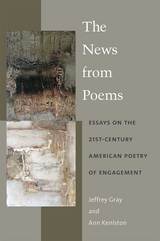 The News from Poems: Essays on the 21st-Century American Poetry of Engagement
Jeffrey Gray and Ann Keniston
University of Michigan Press, 2016 The News from Poems examines a subgenre of recent American poetry that closely engages with contemporary political and social issues. This “engaged” poetry features a range of aesthetics and focuses on public topics from climate change, to the aftermath of recent wars in Afghanistan and Iraq, to the increasing corporatization of U.S. culture.
The News from Poems brings together newly commissioned essays by eminent poets and scholars of poetry and serves as a companion volume to an earlier anthology of engaged poetry compiled by the editors. Essays by Bob Perelman, Steven Gould Axelrod, Tony Hoagland, Eleanor Wilner, and others reveal how recent poetry has redefined our ideas of politics, authorship, identity, and poetics.
The volume showcases the diversity of contemporary American poetry, discussing mainstream and experimental poets, including some whose work has sparked significant controversy. These and other poets of our time, the volume suggests, are engaged not only with public events and topics but also with new ways of imagining subjectivity, otherness, and poetry itself.
News from Tartary: A Journey from Peking to Kashmir
Peter Fleming
Northwestern University Press, 1999 Originally published in 1936, News from Tartary is the story of a journey from Peking through the mysterious province of Sinkiang, to India. Fleming tells the story in his inimitable manner, dismissing the difficulties with irony and describing events and developments with humor and brilliant color, and his account is a classic of travel writing as well as a brilliant description of a vanished time and way of life.
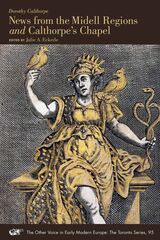 News from the Midell Regions and Calthorpe’s Chapel
Dorothy Calthorpe
Iter Press, 2022 An introduction to a new early modern woman writer that makes her manuscripts available in print for the first time.
This first print edition of two extant manuscripts by Dorothy Calthorpe (1648–1693) introduces a new seventeenth-century woman writer to the growing canon of early modern female authors. The edition provides transcriptions of the manuscripts and Calthorpe’s will, as well as a hefty apparatus that features a comprehensive introduction to Calthorpe, her family, and her work; a glossary of persons who figured in her writing and her life; and two genealogical charts. Calthorpe’s writings (including both prose and verse and ranging from Petrarchan love poems to roman à clef and devotional verse), and the thoughtfully constructed and illustrated volumes in which her texts appear, demonstrate the rich intellectual life of a previously unknown female writer and provide a compelling example of Restoration manuscript production.
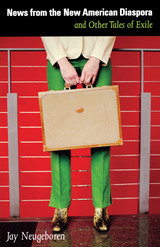 News from the New American Diaspora: and Other Tales of Exile
By Jay Neugeboren
University of Texas Press, 2005 Prize-winning novelist Jay Neugeboren's third collection of short stories focuses on Jews in various states of exile and expatriation—strangers in strange lands, far from home. These dozen tales, by an author whose stories have been selected for more than fifty anthologies, including Best American Short Stories and O. Henry Prize Stories, span the twentieth century and vividly capture brief moments in the lives of their characters: a rabbi in a small town in New England struggling to tend to his congregation and himself, retirees who live in Florida but dream of Brooklyn, a boy at a summer camp in upstate New York learning about the Holocaust for the first time, Russians living in Massachusetts with the family who helped them immigrate. In "The Other End of the World," an American soldier who has survived life in a Japanese prisoner of war camp grieves for members of his family murdered in a Nazi death camp, and in "Poppa's Books" a young boy learns to share his father's passion for the rare books that represent the Old World. "This Third Life" tells of a divorced woman who travels across Germany searching for new meaning in her life after her children leave home, while both "His Violin" and "The Golden Years" explore the plight of elderly Jews, displaced from New York City to retirement communities in Florida, who struggle with memory, madness, and mortality. Set in various times and places, these poignant stories are all tales of personal exile that also illuminate that greater diaspora—geographical, emotional, or spiritual—in which many of us, whether Jews or non-Jews, live.
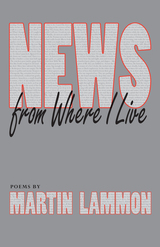 News from Where I Live: Poems
Martin Lammon
University of Arkansas Press, 1998 Winner of the eighth annual Arkansas Poetry Award, Martin Lammon writes poems that deal fearlessly and directly with their subjects. Tenderness, complexity, compassion, reverence, and condemnation are all within his range. Writing of love, he can speak broadly and universally of the heart, yet in the same poem, he can intricately describe a woman’s hand, a fire on a beach, or the hollows around a lover’s eye. Even when he works in the voice of a suicide, his precision can be devastating, as in these lines: “When you lie beside me under stars, each needlepoint / of light pricks my bare arms.” With equal ease, Lammon travels across miles, cultures, and time, writing of kilns and potters in Japan, long-dead Eskimos in Alaska, or Blue Hole Cave in Pennsylvania. Full of grace and candor, these poems pursue the stories that shimmer behind the day’s headlines, seeking the spirit at stake in the “lives beside [our] own whose secrets are worth loving.”
News in a Digital Age: Comparing the Presentation of News Information over Time and Across Media Platforms
Kavanagh
RAND Corporation, 2019 This report presents a quantitative assessment of how the presentation of news has changed over the past 30 years and how it varies across platforms. Over time, and as society moved from “old” to “new” media, news content has generally shifted from more-objective event- and context-based reporting to reporting that is more subjective, relies more heavily on argumentation and advocacy, and includes more emotional appeals.
News on the American Dream: A History of the Portuguese Press in the United States
Alberto Pena Rodríguez, Translated by Serena J. Rivera
Tagus Press, 2020 News on the American Dream traces the development of the Portuguese-American press from its beginnings in the late nineteenth century to the present, taking readers from the East Coast to Hawaii, with strategic stops in places with large Portuguese communities, including New Bedford, Massachusetts; Oakland, California; and Newark, New Jersey. Alberto Pena Rodríguez's nuanced analysis of the political, economic, social, and cultural roles played by these publications proves how important they were for the PortugueseAmerican community and the history of the ethnic press in the United States. Fascinating narratives about the founders, editors, and owners of these publications—and their challenges, squabbles, and successes—round out this engaging study.
 News over the Wires: The Telegraph and the Flow of Public Information in America, 1844-1897
Menahem Blondheim
Harvard University Press, 1994 News over the Wires tells the story of the development of the news wire service as a business operation strategically positioned between the telegraph industry and the press. This unique history of telegraphic news gathering and news flow evaluates the effect of the innovative technology on the evolution of the concept of news and journalistic practices. It also addresses problems of technological innovation and diffusion. Menahem Blondheim's main concern, however, is the development of oligopoly in business and the control revolution in American society. He traces the discovery of timely news as a commodity, presenting a lively and detailed account of the emergence of the New York Associated Press (AP) as the first private sector national monopoly in the United States and Western Union as the first industrial one.
The book assembles, in a narrative parade of compelling personalities and colorful episodes, a wide-ranging body of primary sources, many of them previously untapped. It reconstructs the career of AP's maverick manager, Daniel H. Craig, and highlights his achievements as one of the most creative and effective, if least appreciated, of America's great system builders. The Associated Press and Western Union provide a novel perspective on processes of modernization and national integration in America. News over the Wires demonstrates the significance of the monopolistic structure of the news business and its important impact on economic development, on the political process, and on social integration in general.
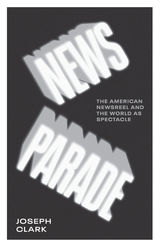 News Parade: The American Newsreel and the World as Spectacle
Joseph Clark
University of Minnesota Press, 2020 A fascinating look at the United States’ conflicted relationship with news and the media, through the lens of the newsreel
When weekly newsreels launched in the early twentieth century, they offered the U.S. public the first weekly record of events that symbolized “indisputable evidence” of the news. In News Parade, Joseph Clark examines the history of the newsreel and how it changed the way Americans saw the world. He combines an examination of the newsreel’s methods of production, distribution, and reception with an analysis of its representational strategies to understand the newsreel’s place in the history of twentieth-century American culture and film history. Clark focuses on the sound newsreel of the 1930s and 1940s, arguing that it represents a crucial moment in the development of a spectacular society where media representations of reality became more fully integrated into commodity culture. Using several case studies, including the newsreel’s coverage of Charles Lindbergh’s transatlantic flight and the Sino–Japanese War, News Parade shows how news film transformed the relationship between its audience and current events, as well as the social and political consequences of these changes. It pays particular attention to how discourses of race and gender worked together with the rhetoric of speed, mobility, and authority to establish the power and privilege of newsreel spectatorship. In the age of fake news and the profound changes to journalism brought on by the internet, News Parade demonstrates how new technologies and media reshaped the American public’s relationship with the news in the 1930s—a history that can help us to better understand the transformations happening today.
News That Matters: Television and American Opinion
Shanto Iyengar and Donald R. Kinder
University of Chicago Press, 1987 "News That Matters does matter, because it demonstrates conclusively that television newscasts powerfully affect opinion. . . . All that follows, whether it supports, modifies, or challenges their conclusions, will have to begin here."—Aaron Wildavsky, The Public Interest
"Because of its methodological integrity and richness, News That Matters is likely to be regarded as an impressive, possibliy grounbreaking work."—Neil Postman, New York Times Book Review
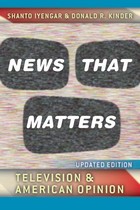 News That Matters: Television and American Opinion, Updated Edition
Shanto Iyengar and Donald R. Kinder
University of Chicago Press, 2010 Almost twenty-five years ago, Shanto Iyengar and Donald R. Kinder first documented a series of sophisticated and innovative experiments that unobtrusively altered the order and emphasis of news stories in selected television broadcasts. Their resulting book News That Matters, now hailed as a classic by scholars of political science and public opinion alike, is here updated for the twenty-first century, with a new preface and epilogue by the authors. Backed by careful analysis of public opinion surveys, the authors show how, despite changing American politics, those issues that receive extended coverage in the national news become more important to viewers, while those that are ignored lose credibility. Moreover, those issues that are prominent in the news stream continue to loom more heavily as criteria for evaluating the president and for choosing between political candidates. “News That Matters does matter, because it demonstrates conclusively that television newscasts powerfully affect opinion. . . . All that follows, whether it supports, modifies, or challenges their conclusions, will have to begin here.”—The Public Interest
News: The Politics of Illusion, Ninth Edition
W. Lance Bennett
University of Chicago Press, 2011 Free and attentive news media are essential to the workings of a democratic nation. But how well does the news, in reality, actually serve the needs of citizens, and thereby democracy? How well do the major methods of sharing national political information work, and how well-informed do they leave voters? For years, News: The Politics of Illusion has been the leading textbook to address that question, and in this ninth edition W. Lance Bennett brings his analysis fully up to date, exploring recent developments in news media and showing how they have improved--or hampered--the wide sharing of political news and information.
 News: The Politics of Illusion, Tenth Edition
W. Lance Bennett
University of Chicago Press, 2016 For over thirty years, News: The Politics of Illusion has not simply reflected the political communication field—it has played a major role in shaping it. Today, the familiar news organizations of the legacy press are operating in a fragmenting and expanding mediaverse that resembles a big bang of proliferating online competitors that are challenging the very definition of news itself. Audience-powered sites such as the Huffington Post and Vox blend conventional political reporting with opinion blogs, celebrity gossip, and other ephemera aimed at getting clicks and shares. At the same time, the rise of serious investigative organizations such as ProPublica presents yet a different challenge to legacy journalism. Lance Bennett’s thoroughly revised tenth edition offers the most up-to-date guide to understanding how and why the media and news landscapes are being transformed. It explains the mix of old and new, and points to possible outcomes. Where areas of change are clearly established, key concepts from earlier editions have been revised. There are new case studies, updates on old favorites, and insightful analyses of how the new media system and novel kinds of information and engagement are affecting our politics. As always, News presents fresh evidence and arguments that invite new ways of thinking about the political information system and its place in democracy.
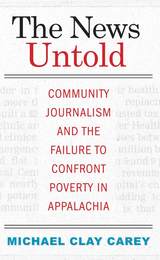 The News Untold: Community Journalism and the Failure to Confront Poverty in Appalachia
Michael Clay Carey
West Virginia University Press, 2017 Association for Education in Journalism and Mass Communication Tankard Book Award winner
Weatherford Award winner, nonfiction
The News Untold offers an important new perspective on media narratives about poverty in Appalachia. It focuses on how small-town reporters and editors in some of the region’s poorest communities decide what aspects of poverty are news, how their audiences interpret those decisions, and how those two related processes help shape broader understandings of economic need and local social responsibility. Focusing on patterns of both media creation and consumption, The News Untold shows how a lack of constructive news coverage of economic need can make it harder for the poor to voice their concerns.
Critical and inclusive news coverage of poverty at the local level, Michael Clay Carey writes, can help communities start to look past old stereotypes and attitudes and encourage solutions that incorporate broader sets of community voices. Such an effort will require journalists and community leaders to reexamine some of the professional traditions and social views that often shape what news looks like in small towns.
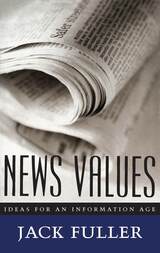 News Values: Ideas for an Information Age
Jack Fuller
University of Chicago Press, 1996 News Values is a concise, powerful statement of the fundamental issues, ethical and practical, confronting newspapers today. Jack Fuller not only makes those issues clear, but offers a provocative new perspective on questions journalists should be asking themselves now in order to prepare for tomorrow.
"Every talk show host should read this book. So should every newsroom cynic. . . . 'Pursuit of truth is not a license to be a jerk.' In all too many newsrooms, that statement would resound like a three-bell bulletin."—Martin F. Nolan, New York Times Book Review
"[News Values] ought to be required reading not just for those who work for newspapers, but for all those who read and care about them. . . . [This book] seems destined to become one of those slim but important volumes people read for a long time to come."—Richard J. Tofel, Wall Street Journal
"Fuller stays above the fray [of the many books on the media]: His is a deeply intellectual approach, one that provides serious context to the highly complicated issue of how the news 'works.'"—Duncan McDonald, Chicago Tribune Books
"News Values has the touch and feel of knowledgeable, authentic caring about the kind of journalism than can help make society more cohesive, even human." —"Monitor's Pick," Christian Science Monitor
 A Newspaper for China?: Power, Identity, and Change in Shanghai’s News Media, 1872–1912
Barbara Mittler
Harvard University Press, 2004 In 1872 in the treaty port of Shanghai, British merchant Ernest Major founded one of the longest-lived and most successful of modern Chinese-language newspapers, the Shenbao. His publication quickly became a leading newspaper in China and won praise as a "department store of news," a "forum for intellectual discussion and moral challenge," and an "independent mouthpiece of the public voice." Located in the International Settlement of Shanghai, it was free of government regulation. Paradoxically, in a country where the government monopolized the public sphere, it became one of the world's most independent newspapers.
As a private venture, the Shenbao was free of the ideologies that constrained missionary papers published in China during the nineteenth century. But it also lacked the subsidies that allowed these papers to survive without a large readership. As a purely commercial venture, the foreign-managed Shenbao depended on the acceptance of educated Chinese, who would write for it, read it, and buy it. This book sets out to analyze how the managers of the Shenbao made their alien product acceptable to Chinese readers and how foreign-style newspapers became alternative modes of communication acknowledged as a powerful part of the Chinese public sphere within a few years. In short, it describes how the foreign Shenbao became a "newspaper for China."
The Newspaper Indian: Native American Identity in the Press, 1820-90
John M. Coward
University of Illinois Press, 1999 How newspapers shaped the image of Native Americans
John M. Coward looks at how nineteenth-century newspapers and news making practices shaped the contradictory and still persistent representation of Native Americans. As Coward reveals, journalism failed to describe Indigenous people on their own terms. Instead, reporters chose portrayals that adhered to the norms of the majority white, Anglo-Saxon, Protestant society that read their papers. In addition, Coward shows how journalists turned Native Americans into symbolic and ambiguous figures used to measure American progress.
An in-depth look at the power of the press, The Newspaper Indian provides insight into how journalism wove a skewed idea of Native Americans into the fabric of American life.
Newspaper Reference Methods
Robert W. Desmond
University of Minnesota Press, 1933 Newspaper Reference Methods was first published in 1933. Minnesota Archive Editions uses digital technology to make long-unavailable books once again accessible, and are published unaltered from the original University of Minnesota Press editions.
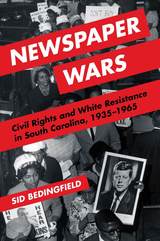 Newspaper Wars: Civil Rights and White Resistance in South Carolina, 1935-1965
Sid Bedingfield
University of Illinois Press, 2017 Against all odds, the seeds of social change found purchase in mid-twentieth century South Carolina. Newspaperman John McCray and his allies at the Lighthouse and Informer challenged readers to "rebel and fight"--to reject the "slavery of thought and action" and become "progressive fighters" for equality. Newspaper Wars traces the role journalism played in the fight for civil rights in South Carolina from the 1930s through the 1960s. Moving the press to the center of the political action, Sid Bedingfield tells the stories of the long-overlooked men and women on the front lines of a revolution. African American progress sparked a battle to shape South Carolina's civic life, with civil rights activists arrayed against white journalists determined to preserve segregation through massive resistance. As that strategy failed, white newspapers turned to overt political action and crafted the still-prevalent narratives that aligned southern whites with the national conservative movement. A fascinating portrait of a defining time, Newspaper Wars analyzes the role journalism played--and still can play--during times of social, cultural, and political change.
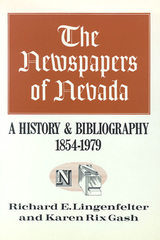 The Newspapers Of Nevada: A History And Bibliography, 1854-1979
Richard E. Lingenfelter
University of Nevada Press, 1984 This new bibliography of Nevada's newspapers supersedes and greatly expands on previous works. More than 800 publications are now included: traditional newspapers, penny shoppers, comic and campaign sheets, entertainment and matrimonial guides, and fictitious newspapers that had life only in the columns of other papers. Also included is a brief appendix of early newspapers from boarder states that reported regularly on Nevada. The authors have provided a brief historical sketch of each publication, together with a list and location of known copies of the original papers, plus current microfilm holdings. The bibliography also documents frequency of publication, proprietorship, title changes, printing locations, and political affiliation. This volume will be of value to historians ranging from scholars to genealogy buffs who need access to the information only newspapers can provide.
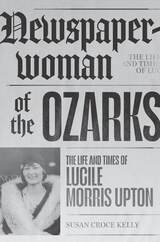 Newspaperwoman of the Ozarks: The Life and Times of Lucile Morris Upton
Susan Croce Kelly
University of Arkansas Press, 2023 Lucile Morris Upton landed her first newspaper job out West in the early 1920s, then returned home to spend half a century reporting on the Ozarks world she knew best. Having come of age just as women gained the right to vote, she took advantage of opportunities that presented themselves in a changing world. During her years as a journalist, Upton rubbed shoulders with presidents, flew with aviation pioneer Wiley Post, covered the worst single killing of US police officers in the twentieth century, wrote an acclaimed book on the vigilante group known as the Bald Knobbers, charted the growth of tourism in the Ozarks, and spearheaded a movement to preserve iconic sites of regional history. Following retirement from her newspaper job, she put her experience to good use as a member of the Springfield City Council and community activist. Told largely through Upton’s own words, this insightful biography captures the excitement of being on the front lines of newsgathering in the days when the whole world depended on newspapers to find out what was happening. Winner, 2024 Missouri Literary Award
First Place, 2024 Missouri Professional Communicators Communications Contest
Finalist, Society of Midland Authors Book Award
 NEWSPEAK in the 21st Century
David Cromwell and David Edwards
Pluto Press, 2009 Since 2001, Media Lens has encouraged thousands of readers to challenge the filtered and distorted version of the world provided by major newspapers and broadcasters. The media responses, collected in Newspeak, are an exposé of the arrogance and servility to power of our leading journalists and editors, starring Andrew Marr, Alan Rusbridger, Roger Alton, Jon Snow, Jeremy Bowen and even George Monbiot.
Picking up where the highly acclaimed and successful Guardians of Power (2006) left off, Newspeak is packed with forensic media analysis, revealing the lethal bias in "balanced" reporting. Even the "best" UK media -- the Guardian, the Independent, Channel 4 News and the BBC -- turn out to be cheerleaders for government, business and war.
Alongside an A-Z of BBC propaganda and chapters on Iraq and climate change, Newspeak focuses on the demonisation of Iran and Venezuela, the Israel-Palestine conflict, the myth of impartial reporting and the dark art of smearing dissidents.
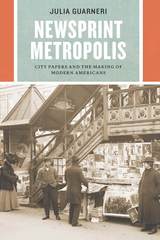 Newsprint Metropolis: City Papers and the Making of Modern Americans
Julia Guarneri
University of Chicago Press, 2017 At the turn of the twentieth century, ambitious publishers like Joseph Pulitzer, William Randolph Hearst, and Robert McCormick produced the most spectacular newspapers Americans had ever read. Alongside current events and classified ads, publishers began running comic strips, sports sections, women’s pages, and Sunday magazines. Newspapers’ lavish illustrations, colorful dialogue, and sensational stories seemed to reproduce city life on the page. Yet as Julia Guarneri reveals, newspapers did not simply report on cities; they also helped to build them. Metropolitan sections and civic campaigns crafted cohesive identities for sprawling metropolises. Real estate sections boosted the suburbs, expanding metropolitan areas while maintaining cities’ roles as economic and information hubs. Advice columns and advertisements helped assimilate migrants and immigrants to a class-conscious, consumerist, and cosmopolitan urban culture. Newsprint Metropolis offers a tour of American newspapers in their most creative and vital decades. It traces newspapers’ evolution into highly commercial, mass-produced media, and assesses what was gained and lost as national syndicates began providing more of Americans’ news. Case studies of Philadelphia, New York, Chicago, and Milwaukee illuminate the intertwined histories of newspapers and the cities they served. In an era when the American press is under attack, Newsprint Metropolis reminds us how papers once hosted public conversations and nurtured collective identities in cities across America.
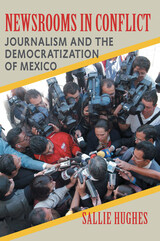 Newsrooms in Conflict: Journalism and the Democratization of Mexico
Sallie Hughes
University of Pittsburgh Press, 2006 Newsrooms in Conflict examines the dramatic changes within Mexican society, politics, and journalism that transformed an authoritarian media institution into many conflicting styles of journalism with very different implications for deepening democracy in the country. Using extensive interviews with journalists and content analysis spanning more than two decades, Sallie Hughes identifies the patterns of newsroom transformation that explain how Mexican journalism was changed from a passive and even collusive institution into conflicting clusters of news organizations exhibiting citizen-oriented, market-driven, and adaptive authoritarian tendencies. Hughes explores the factors that brought about this transformation, including not only the democratic upheaval within Mexico and the role of the market, but also the diffusion of ideas, the transformation of professional identities and, most significantly, the profound changes made within the newsrooms themselves. From the Zapatista rebellion to the political bribery scandals that rocked the nation, Hughes's investigation presents a groundbreaking model of the sociopolitical transformation of a media institution within a new democracy, and the rise and subsequent stagnation of citizen-focused journalism after that democracy was established.
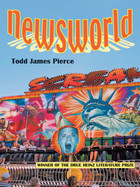 Newsworld
Todd James Pierce
University of Pittsburgh Press, 2006
News is “one of the few things that connects us as a nation” observes the protagonist in the title story of Newsworld, a new collection by Todd James Pierce that explores America’s obsession with news and entertainment culture. The characters in “Newsworld” seek to design realistic theme park attractions, such “OJ’s Bronco: The Ride” and “Seige at Waco,” that allow park guests to experience the complexities of contemporary news events for themselves. In the story “Columbine: The Musical,” high school students stage a musical written as a means of discussing school violence, while their vice principal wrangles a 10 percent discount on a school security system in exchange for corporate sponsorship of the play. In “Wrestling Al Gore,” a national wrestling federation uses costumed wrestlers to cast the Gore/Bush election recount into the ring. In an ironic twist, fans become sympathetic to the underdog Gore, champion his cause, and ultimately reflect on the fate of the real politician. In “The Yoshi Compound: A Story of Post-Waco Texas,” the followers of the Dalai Yoshi amass weapons and riot gear in hopes of attracting media attention in order to spread their message of love and world peace.
The characters in Newsworld, like many Americans, are engulfed in a life-imitating-art phenomenon caused by the hyperreality presented in the media, and they struggle with this overwhelming influence trying to understand whether their own lives fall within or outside its domain.
Newton: Kosmos - Bios - Logos
Irena Stepánová
Karolinum Press, 2014 In 1936, following the sale of Newton’s unpublished manuscripts at auction, the scientific world was shocked: it turned out that Newton’s writings in physics and mathematics, often considered the foundations of modern science, were only a fragment of his writings, most of which were focused on theology and alchemy. In this study of Newton’s work and thought, Irena Štepánová argues for a Newton who was not the man of cold reason we know, but a “priest-scientist” with the life-long intention of carrying out an examination of God himself, as he revealed himself in both the world and in scriptural writings.
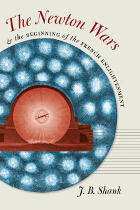 The Newton Wars and the Beginning of the French Enlightenment
J. B. Shank
University of Chicago Press, 2008 Nothing is considered more natural than the connection between Isaac Newton’s science and the modernity that came into being during the eighteenth-century Enlightenment. Terms like “Newtonianism” are routinely taken as synonyms for “Enlightenment” and “modern” thought, yet the particular conjunction of these terms has a history full of accidents and contingencies. Modern physics, for example, was not the determined result of the rational unfolding of Newton’s scientific work in the eighteenth century, nor was the Enlightenment the natural and inevitable consequence of Newton’s eighteenth-century reception. Each of these outcomes, in fact, was a contingent event produced by the particular historical developments of the early eighteenth century.
A comprehensive study of public culture, The Newton Wars and the Beginning of the French Enlightenment digsbelow the surface of the commonplace narratives that link Newton with Enlightenment thought to examine the actual historical changes that brought them together in eighteenth-century time and space. Drawing on the full range of early modern scientific sources, from studied scientific treatises and academic papers to book reviews, commentaries, and private correspondence, J. B. Shank challenges the widely accepted claim that Isaac Newton’s solitary genius is the reason for his iconic status as the father of modern physics and the philosophemovement.
 Newton’s Apple and Other Myths about Science
Ronald L. Numbers
Harvard University Press, 2015 A Guardian “Favourite Reads—as Chosen by Scientists” Selection
“Tackles some of science’s most enduring misconceptions.”
—Discover
A falling apple inspired Isaac Newton’s insight into the law of gravity—or did it really?
Among the many myths debunked in this refreshingly irreverent book are the idea that alchemy was a superstitious pursuit, that Darwin put off publishing his theory of evolution for fear of public reprisal, and that Gregor Mendel was ahead of his time as a pioneer of genetics. More recent myths about particle physics and Einstein’s theory of relativity are discredited too, and a number of dubious generalizations, like the notion that science and religion are antithetical, or that science can neatly be distinguished from pseudoscience, go under the microscope of history.
Newton’s Apple and Other Myths about Science brushes away popular fictions and refutes the widespread belief that science advances when individual geniuses experience “Eureka!” moments and suddenly grasp what those around them could never imagine.
“Delightful…thought-provoking…Every reader should find something to surprise them.”
—Jim Endersby, Science
“Better than just countering the myths, the book explains when they arose and why they stuck.”
—The Guardian
 Newton's Optical Writings: A Guided Study
Dennis Sepper
Rutgers University Press, 1994 Isaac Newton’s classic writings on light and optics are the heart of this volume in the series, Masterworks of Discovery: Guided Studies of Great Texts in Science. The innovative series is aimed at making the great works of scientific discovery accessible to students and lay readers. For each volume, distinguished historians of science have carefully selected original texts (or extracts) and accompanied them with interpretive commentary, explanatory notes, and bio-bibliographical material. These volumes are not synopses or histories to take the place of the original works. Instead, they enable non-specialists to read these classics for themselves and take an active part in discovering the excitement of scientific discovery. Newton first revealed his scientific genius in his pathbreaking work on optics and the properties of light. Through Newton’s early 1672 letter to the Royal Society and long extracts from his mature work, Opticks (1704), the reader can follow Newton’s own descriptions of his experiments on prisms and films, his arguments about white and colored light and the “particle” nature of light, and his influential remarks on scientific method. Dennis Sepper’s deft commentaries, diagrams, and notes help clarify difficulties that modern readers are apt to encounter in Newton’s language and science. Sepper also provides an engaging sketch of Newton’s life, the scientific background to these discoveries, and their aftermath.
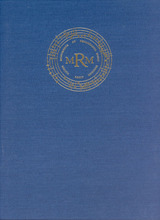 A New-World Collection of Polyphony for Holy Week and the Salve Service: Guatemala City, Cathedral Archive, Music MS 4
Edited by Robert J. Snow
University of Chicago Press, 1996 Following the conquest of Mexico by Cortés and much of Central America by Alvarado, cathedral churches were established throughout the region, all with European-style polyphonic choirs. Among the most important of these early centers of Spanish culture was the cathedral of Guatemala City, where polyphony was already in use in the 1540s.
Shortly after 1600, the organist and choir director of the cathedral collected, organized, and copied into choirbooks all of the then-extant music used by the choir. The manuscript presented here in modern edition, one of at least five choirbooks prepared at the time, contains a number of otherwise unknown works by such major Old World composers as Francisco Guerrero and Cristóbal de Morales. Significant works by Hernando Franco and Pedro Bermúdez, choirmasters of the Guatemala City Cathedral, are also included. The manuscript presents a unified repertory for Holy Week and for the Salve services in Lent, including four settings of the Passion, for which the Spanish were famous throughout Christendom. Some of the works predate the sixteenth-century reform of the Roman Breviary and Missal, among them the original versions of several Vespers hymns and Magnificat settings by Guerrero that are otherwise known only in later versions found in Spanish sources. An extensive historical introduction by Robert J. Snow discusses the formation of the cathedral's musical repertory and illuminates both Old and New World practices of sixteenth-century Spanish liturgical music.
The Next Bend in the Road
Michael Fried
University of Chicago Press, 2004 "In America today there is no lyric work more compelling and well made than To the Center of the Earth," Allen Grossman wrote ten years ago of Michael Fried's last collection of poetry. Fried's new book, The Next Bend in the Road, is a powerfully coherent gathering of lyric and prose poems that has the internal scope of a novel with a host of characters, from the poet's wife and daughter to Franz Kafka, Paul Cézanne, Osip Mandelstam, Sigmund Freud, Gisèle Lestrange, and many others; transformative encounters with works of art, literature, and philosophy, including Heinrich von Kleist's "The Earthquake in Chile," Giuseppe Ungaretti's "Veglia," and Edouard Manet's Le Déjeuner sur l'herbe; and, running through the book from beginning to end, a haunted awareness of the entanglement of the noblest accomplishments and the most intimate joys with the horrors of modern history.
 The Next Billion Users: Digital Life Beyond the West
Payal Arora
Harvard University Press, 2019 A digital anthropologist examines the online lives of millions of people in China, India, Brazil, and across the Middle East—home to most of the world’s internet users—and discovers that what they are doing is not what we imagine.
New-media pundits obsess over online privacy and security, cyberbullying, and revenge porn, but do these things really matter in most of the world? The Next Billion Users reveals that many assumptions about internet use in developing countries are wrong.
After immersing herself in factory towns, slums, townships, and favelas, Payal Arora assesses real patterns of internet usage in India, China, South Africa, Brazil, and the Middle East. She finds Himalayan teens growing closer by sharing a single computer with common passwords and profiles. In China’s gaming factories, the line between work and leisure disappears. In Riyadh, a group of young women organizes a YouTube fashion show.
Why do citizens of states with strict surveillance policies appear to care so little about their digital privacy? Why do Brazilians eschew geo-tagging on social media? What drives young Indians to friend “foreign” strangers on Facebook and give “missed calls” to people? The Next Billion Users answers these questions and many more. Through extensive fieldwork, Arora demonstrates that the global poor are far from virtuous utilitarians who mainly go online to study, find jobs, and obtain health information. She reveals habits of use bound to intrigue everyone from casual internet users to developers of global digital platforms to organizations seeking to reach the next billion internet users.
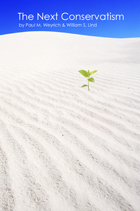 The Next Conservatism
Paul M. Weyrich and William S. Lind
St. Augustine's Press, 2009 Since November’s election, conservative columnists have filled the op-ed pages with calls for a new conservative agenda. In The Next Conservatism, two of the conservative movement’s best-known thinkers, Paul M. Weyrich and William S. Lind, offer exactly that. More, they offer a new kind of conservative agenda, one that reaches far beyond politics to grapple with the sources of our nation’s cultural decay.
The Next Conservatism recognizes that culture is more powerful than politics. Nevertheless, it offers an engaging menu of political reforms, all under the rubric of “Restore the Republic!” No enthusiasts of Imperial America at home or abroad, Weyrich and Lind seek limited government, jealous guardianship of civil liberties, and a Washington liberated from the power of the New Class, the interests that feed off our nation’s decay. To these frequent conservative themes, Weyrich and Lind offer something new: a warning of a general crisis of legitimacy of the state itself, which can lead to a Hobbesian state of anarchy. How might we save the state while avoiding the jaws of Leviathan? The Next Conservatism offers innovative ways to thread that needle.
Meanwhile, what of America’s culture? Did its decay over the past half-century “just happen”? Weyrich and Lind argue no; rather, much of our degradation was deliberate, the work of the poisonous ideology of cultural Marxism, aka “Political Correctness.” The Next Conservatism takes the reader on a fascinating historical tour of the origins of Political Correctness in the infamous Frankfurt School, a gathering of heretical Marxists whose goal from the outset was the destruction of Western culture.
Weyrich and Lind then proceed to “deconstruct” the left’s program for America, debunking Feminism, “racism,” and environmentalism along the way. Reflecting the thought of Russell Kirk, The Next Conservatism condemns ideologies left and right, calling instead for a return to traditional ways of living, ways that reflect wisdom accumulated generation by generation. Only thus, they argue, can conservatives win a culture war many regard as hopelessly lost.
Old ways, in turn, lead to a Next Conservatism appropriate for hard times. Virtue, Weyrich and Lind offer, is to be found in modest living, not conspicuous consumption. The Next Conservative agenda rejects environmentalism but includes conservation, the return of the family farm, New Urbanism and the revival of such ‘oldies but goodies” as streetcars and passenger trains. A new theme, Retroculture, sums up a conservatism that recognizes that what worked in the past can work again today, and in the future as well. Our ancestors were no fools, the authors suggest, and “Back to the Future!” can serve as a powerful conservative rallying cry.
Having laid the political and cultural groundwork, The Next Conservatism then turns to conservative governance. In foreign policy, the authors call for minimizing foreign entanglements, though with a strong national defense and a military reform to adapt to face Fourth Generation warfare rather than the Second Generation America adheres to. For the economy, the authors call for repairing and expanding our national infrastructure, sound money, and protecting American industry, seeing labor as a potential ally. In both national security and economic security, the authors insist that good governance include moral security; drawing from the New Urbanism, they offer a “moral transect” that allows everyone to do what he wants, but not always where he wants. The public square, they suggest, should be safe for families.
Respecting the careful limits on government power a restored republic would embody, The Next Conservatism calls for redeeming America not through legislation but through a new conservative movement. Unlike the old movement, the next conservative movement would be a league of people who pledged to live their lives by the old rules. While conservatives would remain engaged in politics, they would rely on a vastly more powerful force of example, the examples of lives lived well in traditional ways. This next conservative movement would appeal far beyond the ranks of political conservatives, to all Americans who know that something has gone tragically wrong in the life of our nation.
The Next Conservatism offers a vision of vast sweep, far beyond anything coming out of Washington. At a time when most Americans find life growing more difficult, it proposes a path to a new America that is also the old America, the good, comfortable America we had and have lost.
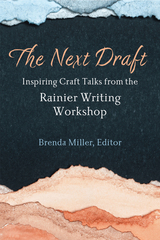 The Next Draft: Inspiring Craft Talks from the Rainier Writing Workshop
Brenda Miller, Editor
University of Michigan Press, 2024 The Next Draft: Inspiring Craft Talks from the Rainier Writing Workshop brings together a selection of the “morning talks” delivered by the renowned authors who teach at the prestigious Rainier Writing Workshop MFA program. These morning talks are a highlight of the residencies at Pacific Lutheran University in Tacoma, Washington, featuring inspiring, innovative approaches to writing and literature across genres. For this collection, Brenda Miller has selected essays that feature diverse and illustrious writers such as Geffrey Davis, Marjorie Sandor, Barrie Jean Borich, Jenny Johnson, Oliver de la Paz, Lia Purpura, Kent Myers, Rebecca McClanahan, and others. Ranging from reading and writing in the Jewish tradition of midrash to the role of the writer as cultural critic in the 21st century, The Next Draft brings to life the kind of intellectual and creative excitement that underlies the intensive MFA experience at Pacific Lutheran University. Not only do these talks show innovative approaches to writing and literature across genres, they inspire the reader to think about how to read differently and thus bring their own work to a new level.
The Next Form of Democracy: How Expert Rule Is Giving Way to Shared Governance -- and Why Politics Will Never Be the Same
Matt Leighninger
Vanderbilt University Press, 2006 Beneath the national radar, the relationship between citizens and government is undergoing a dramatic shift. More than ever before, citizens are educated, skeptical, and capable of bringing the decision-making process to a sudden halt. Public officials and other leaders are tired of confrontation and desperate for resources. In order to address persistent challenges like education, race relations, crime prevention, land use planning, and economic development, communities have been forced to find new ways for people and public servants to work together. The stories of civic experiments in this book can show us the realpolitik of deliberative democracy, and illustrate how the evolution of democracy is already reshaping politics.
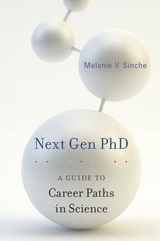 Next Gen PhD: A Guide to Career Paths in Science
Melanie V. Sinche
Harvard University Press, 2016 For decades, top scientists in colleges and universities pursued a clear path to success: enroll in a prestigious graduate program, conduct research, publish papers, complete the PhD, pursue postdoctoral work. With perseverance and a bit of luck, a tenure-track professorship awaited at the end. In today’s academic job market, this scenario represents the exception. As the number of newly conferred science PhDs keeps rising, the number of tenured professorships remains stubbornly stagnant.
“Next Gen PhD: A Guide to Career Paths in Science is a practical and thorough manual for the entire career transition process, from defining personal interests and deciding on a career path all the way to day one of a new job. Written by experienced career counselor Melanie Sinche, it is geared toward postdocs and graduate students who may not have access to effective career counseling or mentorship or are not satisfied with what they have received thus far.”
—Teegan A. Dellibovi-Ragheb, Science
“With its focus on PhD level scientists, this book fills a gap in job search and career information literature. It’s a must-read for those contemplating or actively pursuing studies in the subject area, as well as those who provide guidance to undergraduates, graduate students, and postdoctoral scholars.”
—Alan Farber, Library Journal (starred review)
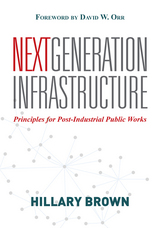 Next Generation Infrastructure: Principles for Post-Industrial Public Works
Hillary Brown
Island Press, 2014 The 2007 bridge collapse in Minneapolis-St. Paul quickly became symbolic of the debilitated interstate highway system—and of what many critics see as America’s disinvestment in its infrastructure. The extreme vulnerability of single-purpose, aging infrastructure was highlighted once again when Hurricane Sandy churned its way across the northeast United States. Inundating New York City’s vital arteries, floodwaters overwhelmed tunnels and sewers; closed bridges; shut down the electrical substations that control mass transit; curtailed gas supplies; and destroyed streets, buildings, and whole neighborhoods. For days and on into weeks, failures triggered by floodwaters deprived millions of electricity, heat, and water services.
How can our complex, interdependent utilities support an urbanizing world, subject to carbon constraints and the impacts of climate change? How might these critical networks be made more efficient, less environmentally damaging, and more resilient? Such questions are at the heart of the approaches and initiatives explored in Next Generation Infrastructure. With a better understanding of the possible connections between different services, not only can inadvertent disruptions be reduced, but crosscutting benefits and lower costs will be possible. Next Generation Infrastructure highlights hopeful examples from around the world, ranging from the Mount Poso cogeneration plant in California to urban rainwater harvesting in Seoul, South Korea, to the multi-purpose Marina Barrage project in Singapore. Five bold organizing objectives are proposed that, in the hands of decision-makers and designers, will help bring about a future of multipurpose, low-carbon, resilient infrastructure that is tightly coordinated with natural and social systems.
In their conception and design, the innovative projects highlighted in Next Generation Infrastructure encourage us to envision infrastructure within a larger economic, environmental, and social context, and to share resources across systems, reducing costs and extending benefits. Through this systems approach to lifeline services, we can begin to move toward a more resilient future.
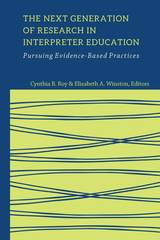 The Next Generation of Research in Interpreter Education: Pursuing Evidence-Based Practices
Cynthia B. Roy
Gallaudet University Press, 2018 This collection contributes to an emerging body of research in sign language interpreter education, a field in which research on teaching practices has been rare. The Next Generation of Research in Interpreter Education investigates learning experiences and teaching practices that provide the evidence necessary to inform and advance instructional approaches. The five studies included in this volume examine role-play activities in the classroom, the experiences of Deaf students in interpreting programs, reducing anxiety in the interpreting process, mentoring, and self-assessment. The contributors are a nascent group of educators who represent a growing mastery of contemporary standards in interpreter education. Their chapters share a common theme: the experiences and learning environments of students as they progress toward entry into the interpreting profession.
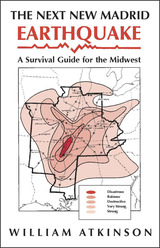 The Next New Madrid Earthquake: A Survival Guide for the Midwest
William Atkinson
Southern Illinois University Press, 1989 Scientists who specialize in the study of Mississippi Valley earthquakes say that the region is overdue for a powerful tremor that will cause major damage and undoubtedly some casualties. The inevitability of a future quake and the lack of preparation by both individuals and communities provided the impetus for this book. Atkinson brings together applicable information from many disciplines: history, geology and seismology, engineering, zoology, politics and community planning, economics, environmental science, sociology, and psychology and mental health to provide the most comprehensive perspective to date of the myriad impacts of a major earthquake on the Mississippi Valley. Atkinson addresses such basic questions as "What, actually, are earthquakes? How do they occur? Where are they likely to occur? Can they be predicted, perhaps even prevented?" He also addresses those steps that individuals can take to improve their chances for survival both during and after an earthquake.
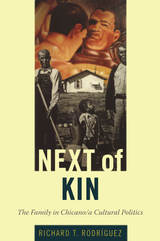 Next of Kin: The Family in Chicano/a Cultural Politics
Richard T. Rodríguez
Duke University Press, 2009 As both an idea and an institution, the family has been at the heart of Chicano/a cultural politics since the Mexican American civil rights movement emerged in the late 1960s. In Next of Kin, Richard T. Rodríguez explores the competing notions of la familia found in movement-inspired literature, film, video, music, painting, and other forms of cultural expression created by Chicano men. Drawing on cultural studies and feminist and queer theory, he examines representations of the family that reflect and support a patriarchal, heteronormative nationalism as well as those that reconfigure kinship to encompass alternative forms of belonging. Describing how la familia came to be adopted as an organizing strategy for communitarian politics, Rodríguez looks at foundational texts including Rodolfo Gonzales’s well-known poem “I Am Joaquín,” the Chicano Liberation Youth Conference’s manifesto El Plan Espiritual de Aztlán, and José Armas’s La Familia de La Raza. Rodríguez analyzes representations of the family in the films I Am Joaquín, Yo Soy Chicano, and Chicana; the Los Angeles public affairs television series ¡Ahora!; the experimental videos of the artist-activist Harry Gamboa Jr.; and the work of hip-hop artists such as Kid Frost and Chicano Brotherhood. He reflects on homophobia in Chicano nationalist thought, and examines how Chicano gay men have responded to it in works including Al Lujan’s video S&M in the Hood, the paintings of Eugene Rodríguez, and a poem by the late activist Rodrigo Reyes. Next of Kin is both a wide-ranging assessment of la familia’s symbolic power and a hopeful call for a more inclusive cultural politics.
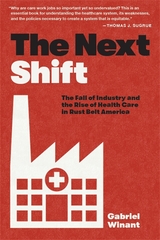 The Next Shift: The Fall of Industry and the Rise of Health Care in Rust Belt America
Gabriel Winant
Harvard University Press, 2021 Winner of the Frederick Jackson Turner Award
Winner of the Isaac and Tamara Deutscher Memorial Prize
Winner of the C. L. R. James Award
A ProMarket Best Political Economy Book of the Year
Men in hardhats were once the heart of America’s working class; now it is women in scrubs. What does this shift portend for our future?
Pittsburgh was once synonymous with steel. But today most of its mills are gone. Like so many places across the United States, a city that was a center of blue-collar manufacturing is now dominated by the service economy—particularly health care, which employs more Americans than any other industry. Gabriel Winant takes us inside the Rust Belt to show how America’s cities have weathered new economic realities. In Pittsburgh’s neighborhoods, he finds that a new working class has emerged in the wake of deindustrialization.
As steelworkers and their families grew older, they required more health care. Even as the industrial economy contracted sharply, the care economy thrived. Hospitals and nursing homes went on hiring sprees. But many care jobs bear little resemblance to the manufacturing work the city lost. Unlike their blue-collar predecessors, home health aides and hospital staff work unpredictable hours for low pay. And the new working class disproportionately comprises women and people of color.
Today health care workers are on the front lines of our most pressing crises, yet we have been slow to appreciate that they are the face of our twenty-first-century workforce. The Next Shift offers unique insights into how we got here and what could happen next. If health care employees, along with other essential workers, can translate the increasing recognition of their economic value into political power, they may become a major force in the twenty-first century.
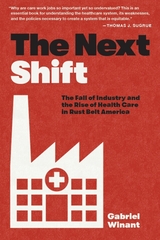 The Next Shift: The Fall of Industry and the Rise of Health Care in Rust Belt America
Gabriel Winant
Harvard University Press Winner of the Frederick Jackson Turner Award
Winner of the Isaac and Tamara Deutscher Memorial Prize
Winner of the C. L. R. James Award
A New York Times Book Review Editors’ Choice
A ProMarket Best Political Economy Book of the Year
“The Next Shift is an original work of serious scholarship, but it’s also vivid and readable…Eye-opening.”
—Jennifer Szalai, New York Times
“A deeply upsetting book…Winant ably blends social and political history with conventional labor history to construct a remarkably comprehensive narrative with clear contemporary implications.”
—Scott W. Stern, New Republic
“Terrific…A useful guide to the sweeping social changes that have shaped a huge segment of the economy and created the dystopian world of contemporary service-sector work.”
—Nelson Lichtenstein, The Nation
Pittsburgh was once synonymous with steel, but today most of its mills are gone. Like so many places across the United States, a city that was a center of blue-collar manufacturing is now dominated by health care, which employs more Americans than any other industry. Gabriel Winant takes us inside the Rust Belt to show how America’s cities have weathered new economic realities.
As steelworkers and their families grew older, they required more health care. Even as the industrial economy contracted sharply, the care economy thrived. But unlike their blue-collar predecessors, home health aides and hospital staff work unpredictable hours for low pay. Today health care workers—mostly women and people of color—are on the front lines of our most pressing crises, yet we have been slow to appreciate that they are the face of our twenty-first-century workforce. The Next Shift offers unique insights into how we got here and what could happen next.
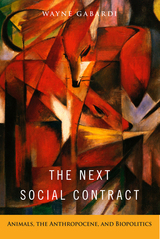 The Next Social Contract: Animals, the Anthropocene, and Biopolitics
Wayne Gabardi
Temple University Press, 2017 In his provocative book The Next Social Contract, Wayne Gabardi rigorously considers the fate of animals in the twenty-first century. He claims that if we are to address the challenges raised by the Anthropocene—the period where nonhuman beings tend to be mere extras, often subsumed under the umbrella notion of “nature”—we need to radically rethink our basic ethical outlook and develop a new, “more-than-human” social contract. Gabardi’s wide-ranging and multidisciplinary analysis focuses on four principal battlegrounds of animal biopolitics in the twenty first century: the extinction of wild animals, the crisis of oceanic animals, industrialized farm animals and the future of industrial agribusiness, and the situation of contact-zone animals moving into human-occupied habitats. In his recasting of the social contract, Gabardi envisions a culture shift in human-animal relations toward posthumanism that features the ethical and political prioritization of animal life so it is on par with that of human well-being.
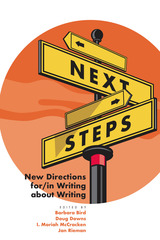 Next Steps: New Directions for/in Writing about Writing
Barbara Bird
Utah State University Press, 2019 Next Steps: New Directions for/in Writing about Writing is the first collection of teacher and student voices on a writing pedagogy that puts expert knowledge at the center of the writing classroom. More than forty contributors report on implementations of writing-about-writing pedagogies from the basic writing classroom to the graduate seminar, in two-year and four-year schools, and in small colleges and research universities around the United States and the world.
For more than ten years, WAW approaches have been emerging in all these sites and scenes of college writing instruction, and Next Steps offers an original look at the breadth of ways WAW pedagogy has been taken up by writing instructors and into an array of writing courses. Organized by some of the key foci of WAW instruction—writerly identity, process, and engagement—the book takes readers into thick classroom descriptions as well as vignettes offering shorter takes on particular strategies. The classroom descriptions are fleshed out in more personal ways by student vignettes, reflections on encountering writing about writing in college writing classes. As its theoretical basis, Next Steps includes chapters on threshold concepts, transfer of writing-related learning, and the history of WAW pedagogies.
As the first extensive look into WAW pedagogies across courses and institutions, Next Steps is ideal for writing instructors looking for new approaches to college composition instruction or curious about what “writing about writing” pedagogy actually is, for graduate students in composition pedagogy and their faculty, and for those researching composition pedagogy, threshold concepts, and learning transfer.
Contributors:
Linda Adler-Kassner, Olga Aksakalova, Joy Arbor, Matthew Bryan, Shawn Casey, Gabriel Cutrufello, Jennifer deWinter, Kristen di Gennaro, Emma Gaier, Christina Grant, Gwen Hart, Kimberly Hoover, Rebecca Jackson, Frances Johnson, Elizabeth Kleinfeld, Katie Jo LaRiviere, Andrew Lucchesi, Cat Mahaffey, Michael Michaud, Rebecca S. Nowacek, Andrew Ogilvie, Sarah Read, Rebecca Robinson, Kevin Roozen, Mysti Rudd, Christian Smith, Nichole Stack, Samuel Stinson, Hiroki Sugimoto, Lisa Tremain, Valerie Vera, Megan Wallace, Elizabeth Wardle, Christy I. Wenger, Nancy Wilson, Dominique Zino
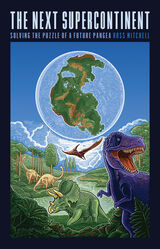 The Next Supercontinent: Solving the Puzzle of a Future Pangea
Ross Mitchell
University of Chicago Press, 2023 An internationally recognized scientist shows that Earth’s separate continents, once together in Pangea, are again on a collision course. You’ve heard of Pangea, the single landmass that broke apart some 175 million years ago to give us our current continents, but what about its predecessors, Rodinia or Columbia? These “supercontinents” from Earth’s past provide evidence that land repeatedly joins and separates. While scientists debate what that next supercontinent will look like—and what to name it—they all agree: one is coming. In this engaging work, geophysicist Ross Mitchell invites readers to remote (and sometimes treacherous) lands for evidence of past supercontinents, delves into the phenomena that will birth the next, and presents the case for the future supercontinent of Amasia, defined by the merging of North America and Asia. Introducing readers to plate tectonic theory through fieldwork adventures and accessible scientific descriptions, Mitchell considers flows deep in the Earth’s mantle to explain Amasia’s future formation and shows how this developing theory can illuminate other planetary mysteries. He then poses the inevitable question: how can humanity survive the intervening 200 million years necessary to see Amasia? An expert on the supercontinent cycle, Mitchell offers readers a front-row seat to a slow-motion mystery and an ongoing scientific debate.
Next Time We Strike
Allan Kent Powell
Utah State University Press, 1992 May 1, 1900 turned into a day of horror at Scofield, Utah, where a mine explosion killed two hundred men. In the traumatic days that followed, the surviving miners began to understand that they, too, might be called to make this ultimate sacrifice for mine owners. The time for unionization in Utah was at hand.
A sensitive and in-depth portrayal of the efforts to unionize Utah's coal miners, The Next Time We Strike explores the ethnic tensions and nativistic sentiments that hampered unionization efforts even in the face of mine explosions and economic exploitation. Powell utilizes oral interviews, coal company reports, newspapers, letters, and union records to tell the story from the miners' perspective.
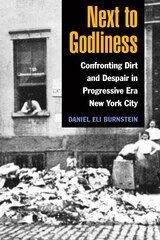 Next to Godliness: Confronting Dirt and Despair in Progressive Era New York City
Daniel Burnstein
University of Illinois Press, 2010 To many Progressive Era reformers, the extent of street cleanliness was an important gauge for determining whether a city was providing the conditions necessary for impoverished immigrants to attain a state of "decency"--a level of individual well-being and morality that would help ensure a healthy and orderly city. Daniel Eli Burnstein's study examines prominent street sanitation issues in Progressive Era New York City--ranging from garbage strikes to "juvenile cleaning leagues"--to explore how middle-class reformers amassed a cross-class and cross-ethnic base of support for social reform measures to a degree greater than in practically any other period of prosperity in U.S. history. The struggle for enhanced civic sanitation serves as a window for viewing Progressive Era social reformers' attitudes, particularly their emphasis on mutual obligations between the haves and have-nots, and their recognition of the role of negative social and physical conditions in influencing individual behaviors.
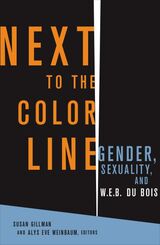 Next to the Color Line: Gender, Sexuality, and W. E. B. Du Bois
Susan Gillman
University of Minnesota Press, 2007 Although W. E. B. Du Bois did not often pursue the connections between the “Negro question” that defined so much of his intellectual life and the “woman question” that engaged writers and feminist activists around him, Next to the Color Line argues that within Du Bois’s work is a politics of juxtaposition that connects race, gender, sexuality, and justice.This provocative collection investigates a set of political formulations and rhetorical strategies by which Du Bois approached, used, and repressed issues of gender and sexuality. The essays in Next to the Color Line propose a return to Du Bois, not only to reassess his politics but also to demonstrate his relevance for today’s scholarly and political concerns.Contributors: Hazel V. Carby, Yale U; Vilashini Cooppan, U of California, Santa Cruz; Brent Hayes Edwards, Rutgers U; Michele Elam, Stanford U; Roderick A. Ferguson, U of Minnesota; Joy James, Williams College; Fred Moten, U of Southern California; Shawn Michelle Smith, St. Louis U; Mason Stokes, Skidmore College; Claudia Tate, Princeton U; Paul C. Taylor, Temple U.Susan Gillman is professor of literature at the University of California, Santa Cruz. Alys Eve Weinbaum is associate professor of English at the University of Washington, Seattle.
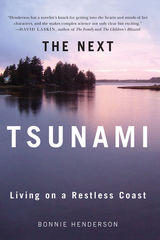 The Next Tsunami: Living on a Restless Coast
Bonnie Henderson
Oregon State University Press, 2014 On a March evening in 1964, ten-year-old Tom Horning awoke near midnight to find his yard transformed. A tsunami triggered by Alaska’s momentous Good Friday earthquake had wreaked havoc in his Seaside, Oregon, neighborhood. It was, as far as anyone knew, the Pacific Northwest coast’s first-ever tsunami.
More than twenty years passed before geologists discovered that it was neither Seaside’s first nor worst tsunami. In fact, massive tsunamis strike the Pacific coast every few hundred years, triggered not by distant temblors but by huge quakes less than one hundred miles off the Northwest coast. Not until the late 1990s would scientists use evidence like tree rings and centuries-old warehouse records from Japan to fix the date, hour, and magnitude of the Pacific Northwest coast’s last megathrust earthquake: 9 p.m., January 26, 1700, magnitude 9.0—one of the largest quakes the world has known. When the next one strikes—this year or hundreds of years from now—the tsunami it generates is likely to be the most devastating natural disaster in the history of the United States.
In The Next Tsunami, Bonnie Henderson shares the stories of scientists like meteorologist Alfred Wegener, who formulated his theory of continental drift while gazing at ice floes calving from Greenland glaciers, and geologist Brian Atwater, who paddled his dented aluminum canoe up coastal streams looking for layers of peat sandwiched among sand and silt. The story begins and ends with Tom Horning, who grew up to become a geologist and return to his family home at the mouth of the river in Seaside—arguably the Northwest community with the most to lose from what scientist Atwater predicts will be an “apocalyptic” disaster. No one in Seaside understands earthquake science—and the politics and complicated psychology of living in a tsunami zone—better than Horning.
Henderson’s compelling story of how scientists came to understand the Cascadia Subduction Zone—a fault line capable of producing earthquakes even larger than the 2011 Tohoku quake in Japan—and how ordinary people cope with that knowledge is essential reading for anyone interested in the charged intersection of science, human nature, and public policy
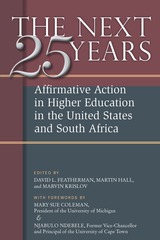 The Next Twenty-five Years: Affirmative Action in Higher Education in the United States and South Africa
David L. Featherman, Martin Hall, and Marvin Krislov, editors
University of Michigan Press, 2009 "Ambitious, provocative, and wide-ranging, this rich collection of essays from U.S. and South African perspectives reflects the thinking of thoughtful advocates of affirmative action."
---William G. Bowen, President Emeritus, The Andrew W. Mellon Foundation, and President Emeritus, Princeton University "Thoughtful commentary from outstanding experts on affirmative action’s future in two countries struggling to overcome a legacy of racial injustice."
---Derek Bok, 300th Anniversary University Research Professor, and President Emeritus, Harvard University "An enormously important comparative study and reflection on affirmative (U.S.) and corrective (South Africa) action with exhaustive and sensitive treatment of a vital topic."
---Kader Asmal, Professor of Law, University of the Western Cape, Cape Town, and former Minister of Education, South Africa A penetrating exploration of affirmative action's continued place in 21st-century higher education, The Next Twenty-five Years assembles the viewpoints of some of the most influential scholars, educators, university leaders, and public officials. Its comparative essays span the political spectrum and dissect debates in two nations to elucidate the legal, political, social, economic, and moral dimensions of affirmative action in higher education and its role in contributing to a just, equitable, and vital society. David L. Featherman is Professor of Sociology and Psychology and Founding Director of the Center for Advancing Research and Solutions for Society at the University of Michigan. Martin Hall is Vice-Chancellor of the University of Salford, Greater Manchester, and previously was Deputy Vice-Chancellor at the University of Cape Town. Marvin Krislov is President of Oberlin College and previously was Vice President and General Counsel at the University of Michigan.
|
|
